Old Rag Mountain Hike, October 2014
Some photos from a recent hike of Old Rag Mountain in Shenandoah. Click on any photo for hi-res.
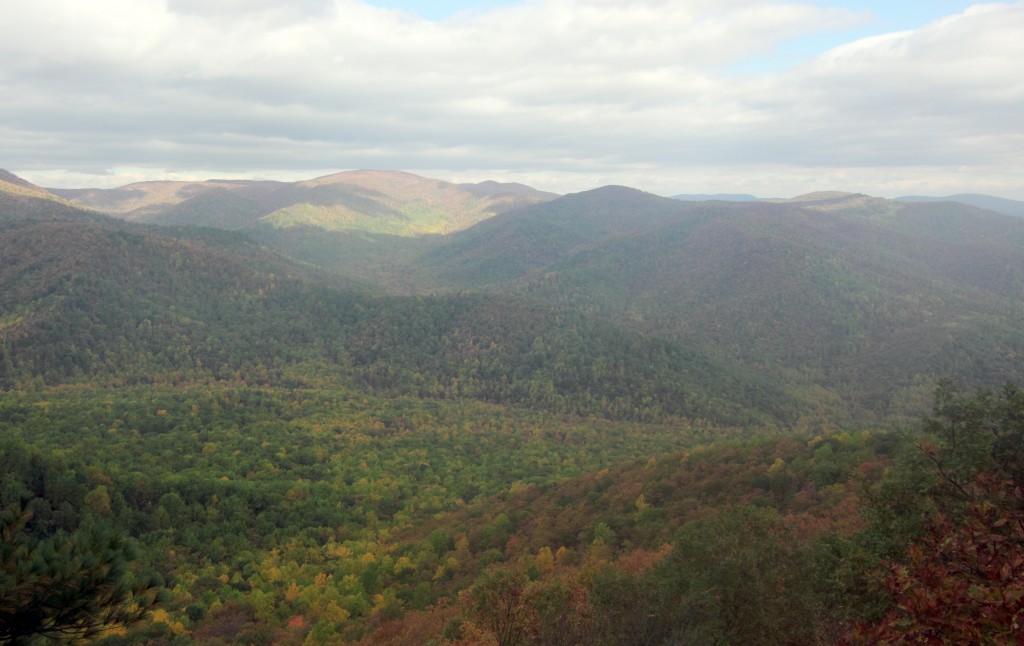
October 2014 Lunar Eclipse (with Uranus)
The October 2014 Lunar Eclipse, taken close to sunrise. Uranus is barely visible in the upper left. Taken with a Canon 60DA.
Sagittarius Milky Way
Sagittarius Milky Way. I was going to do the whole constellation, but there was much more interesting stuff just above it. 10 x 3 min, ISO 400 with my 50mm lens.
Cygnus Milky Way
Most of the constellation Cygnus. Deneb at the left. Lots of Milky Way and nebulae visible here. 10 x 3 min, ISO 800 in my 50mm lens.
The Summer Triangle
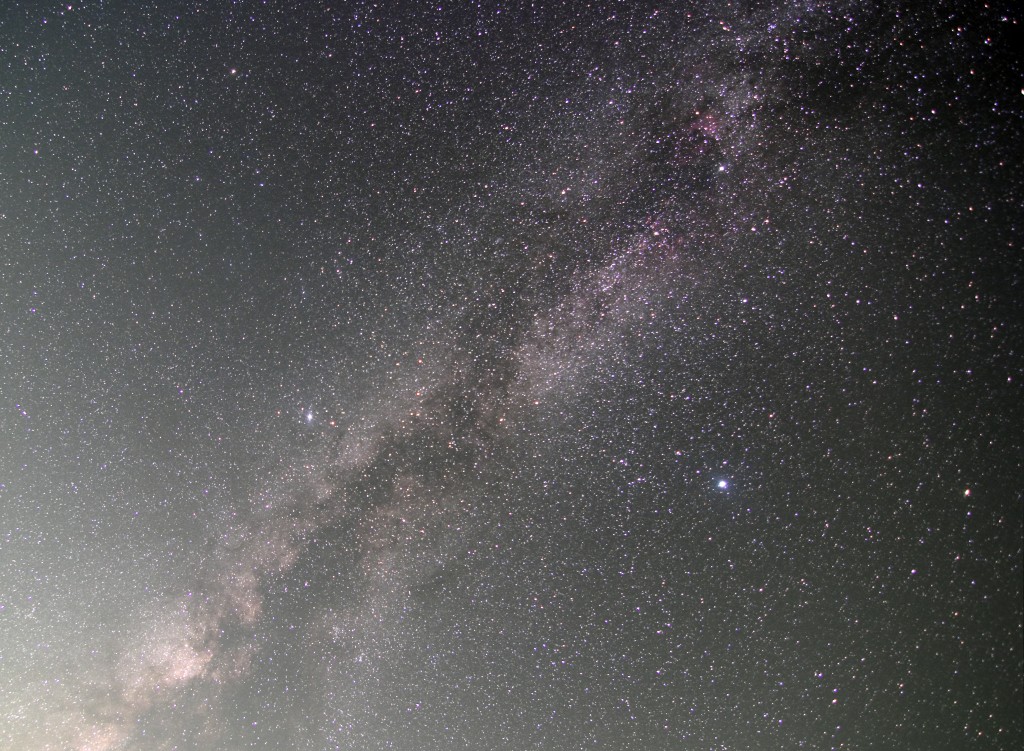 The Summer Triangle (Deneb, Altair and Vega), plus the rich Milky Way.
The Summer Triangle (Deneb, Altair and Vega), plus the rich Milky Way.
North America and Pelican Nebulae
NGC 7000 and IC 5070. Taken with the 200mm lens. 8 x 2 min. ISO 800.
Cat’s Paw Nebula and War and Peace Nebula
NGC 6334 and NGC 6357, taken with the 200mm lens on the Astrotrac. 8 x 2 min, ISO 400.
Memories of Al Baernstein
A slight departure from the usual fare of this blog to say something about one of my grad school professors, Al Baernstein, who passed away June 11, 2014.
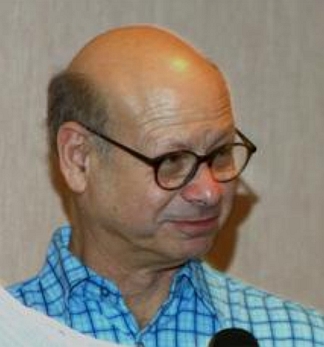
I began my PhD in mathematics at Washington University in St. Louis in the Fall of 2004. In a PhD program, the first few years are devoted to courses in the major areas of math. At Wash U, this was a full year of algebra, real analysis, complex analysis and geometry followed by a very difficult qualifying exam. Once these are completed, research and progress toward a dissertation can begin. So these years naturally come with a lot of stress. Most of us were used to being able to coast by in undergrad and masters level classes and this would prove to be the most challenging ordeal of my life to that point.
The first day of classes I walked into Al’s complex analysis class not knowing what to expect. I had taken a class in the subject while getting my masters and got an easy A, but I knew this would be a challenge. I already knew my area of specialty would be in finite group theory and all those epsilons and deltas made me uncomfortable. I watched as he painstakingly defined what a complex number was and worked his way through very basic complex analysis (not an oxymoron, non-math friends), and by the end of class thought it was going to be the most boring experience of my life. Boy, was I wrong. I soon learned that he had the same dry sense of humor I did. We covered so much material those two semesters I’m amazed how much it was. Al had taught this course every other year going back to at least the 80s and he had it down to an art. Proofs were usually flawless and major course ideas flowed from one thing to the next. By the end of the year, I couldn’t wait to come to class.
His homework sets were legendary among the graduate students. The first day of class, the syllabus said we were expected to work together in small groups, but to write up solutions individually. This would prove a great challenge as the problems were usually very difficult. Proofs would require some clever idea and the problems that were straightforward still involved lots of nasty computations where you had to be very careful. By second semester, there was a group of five or six of us that would work on every set together. Second semester’s fourth homework assignment was e-mailed to us with the accompanying warning that it was particularly challenging and to get started right away. The hardest homework problem I ever did was from this set and involved the Schwarz-Christoffel theorem. Here’s what the end of it looked like:
Other homework would prove challenging and it was a highlight of my graduate career when Al called a solution I came up with to a particular problem “clever”.
The exams were brutal in this class, too. He would give us a list of theorems to know the proofs for, and while that might sound like it makes things easy, he would give us about 30 theorems and maybe four would be on the test. (One of these was the Riemann Mapping Theorem whose proof is quite long and involved). Plus there were generic problems. What helped out immensely was the fact that he had taught the complex qual so many times that we had about a dozen prior exams to study from. I seem to recall him walking into the exam room and dropping the huge stack of tests on the desk with a loud thunk. Four hours later, I walked out of there knowing I had passed, thanks in large part to his outstanding teaching.
After that first year, my interaction with Al was fairly limited as I had no interest in further pursuing complex analysis. Mostly it was when he would speak at the graduate student seminar, which was always a packed house, not just because of interest in the subject of the talk, but often because we were just waiting to see what he’d say next. His talks always had some interesting aspect of math history in them.
I close with a few specifics I remember about him or his classes:
1. Like any mathematician, he had lots of quirks. He was famous for writing something, then cocking his head sideways while holding the chalk to his lips as if pondering if that was really right or not (it always was). He wore slippers to class every day. I was told this was a gift from a previous class because he was constantly tying his shoes. So he would walk to school from his nearby home, go to his office and put on the slippers for the rest of the day. Also, at least once a day, he would accidentally back into the tall trashcan in the room, almost knocking it over.
2. He would always attribute his theorems and I was incredibly amused one day when he wrote a theorem then put “(me)” after it. I also remember him once mentioning a post-doc at Wash U that improved a constant bound by some ridiculously small value like 10^-332.
3. When I was at Wash U, the math department building only had one classroom to itself. The rest were shared by the whole school, so we would frequently walk into class and find the desks in a circle from the previous English class, (the blackboard usually pristine). One day, the blackboard had one word written on it: META-DISCOURSE. Al walked into class as the previous instructor was leaving and he asked, “What is meta-discourse?” She said it’s when you talk about discourse. He cocked his head to the side, took the chalk, and wrote a META- in front of it and asked if that’s what we’re doing now. The other teacher left the room when we started talking about the inverse limit of this sequence.
I’d welcome comments below with similar stories from those who knew him.
Rest in peace, Al. You were one of the best.
Winter Star Party Part 3
The fifth night it rained all night, which ended up providing fantastic skies for the sixth night. I tried a few objects early on, but they didn’t come out too well. I waited until around 2 AM and started taking shots in Centaurus. The first is the radio galaxy Centaurus A. This was with the Astrotech and 60DA, ISO 1600, 49 x 1 min.
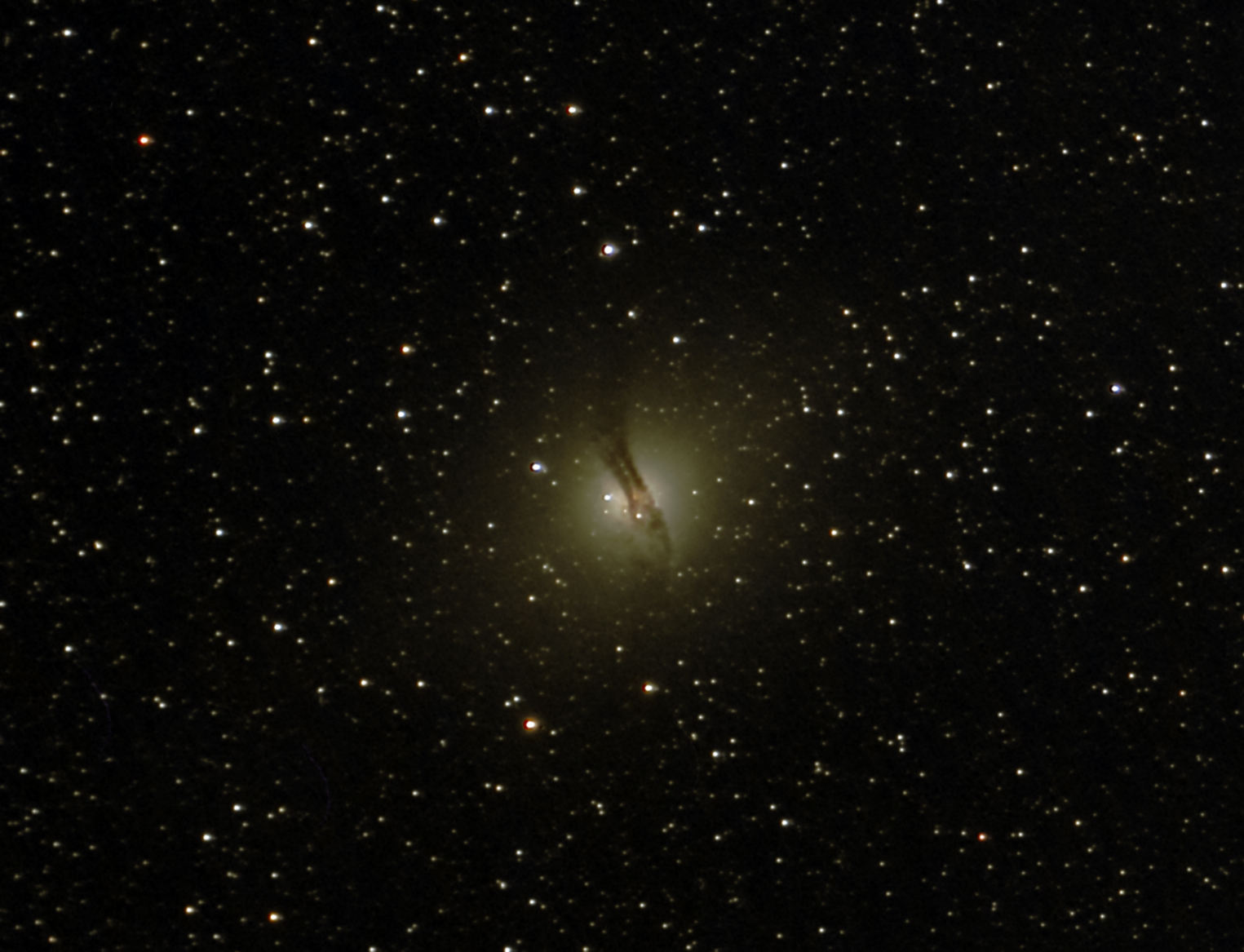
I had tried Omega Centauri on earlier nights, but I got a fantastic shot this evening with stars resolved in the core. This was with the Astrotech and 60DA, ISO 1600, 35 x 30 sec.
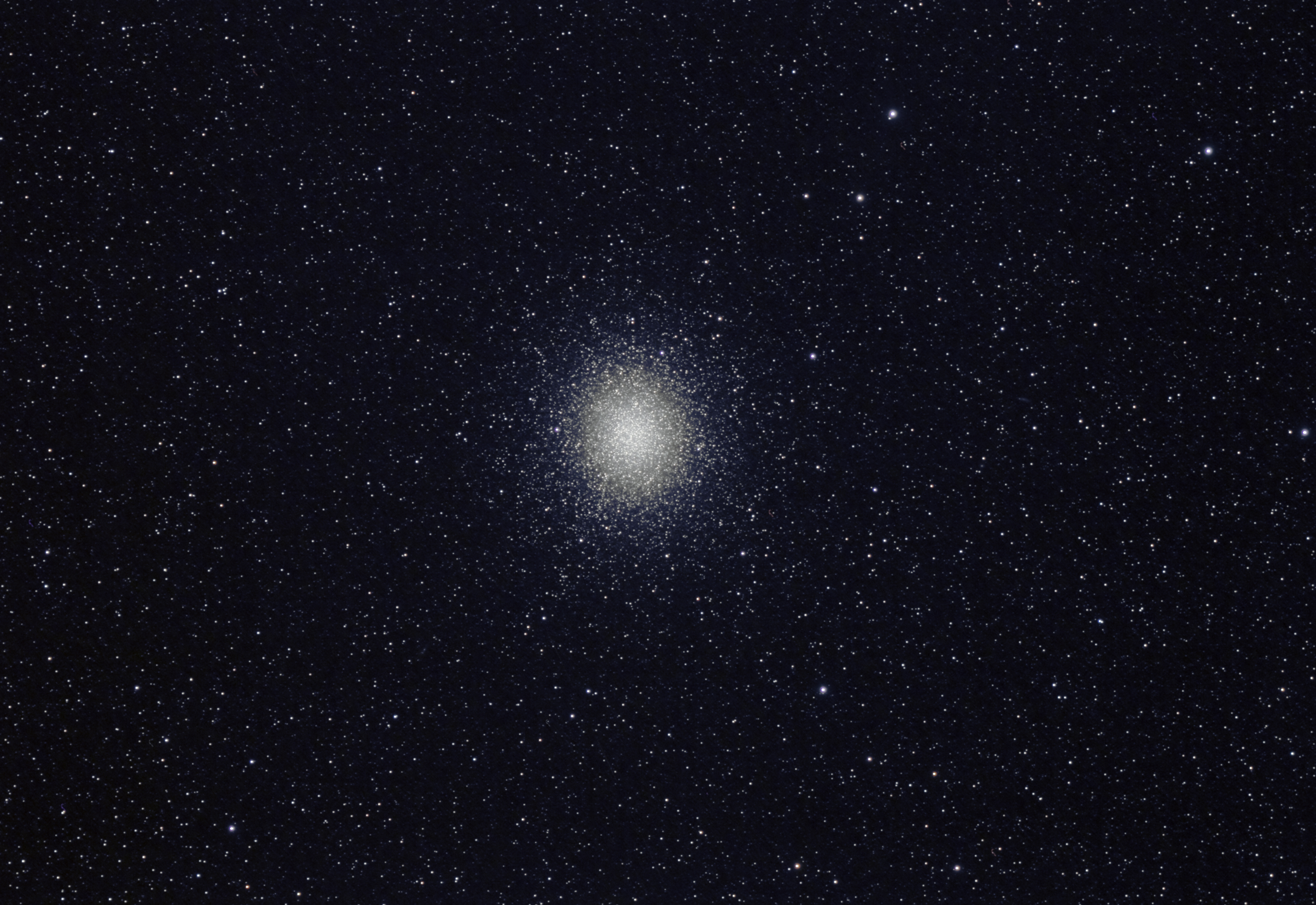
Following my earlier shot of Scorpius, I had been dying to get a good shot of the Milky Way region visible in the edge of that and I got my wish tonight. here’s the resulting shot. This was with the Astrotrac and 60DA, 50mm, f/4, ISO 1600, 16 x 5 min.
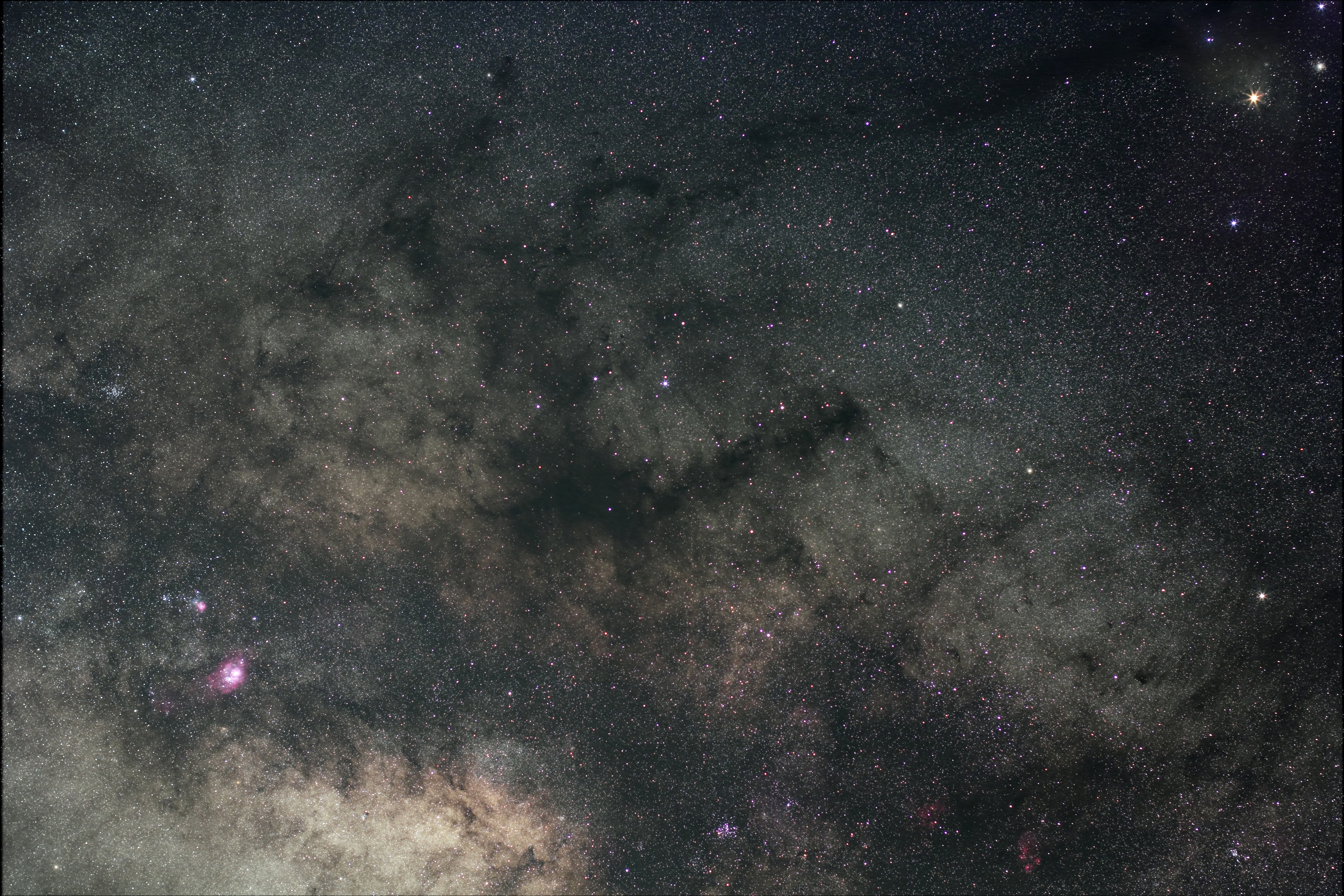
The highlight of this image is the Pipe Nebula in the middle.
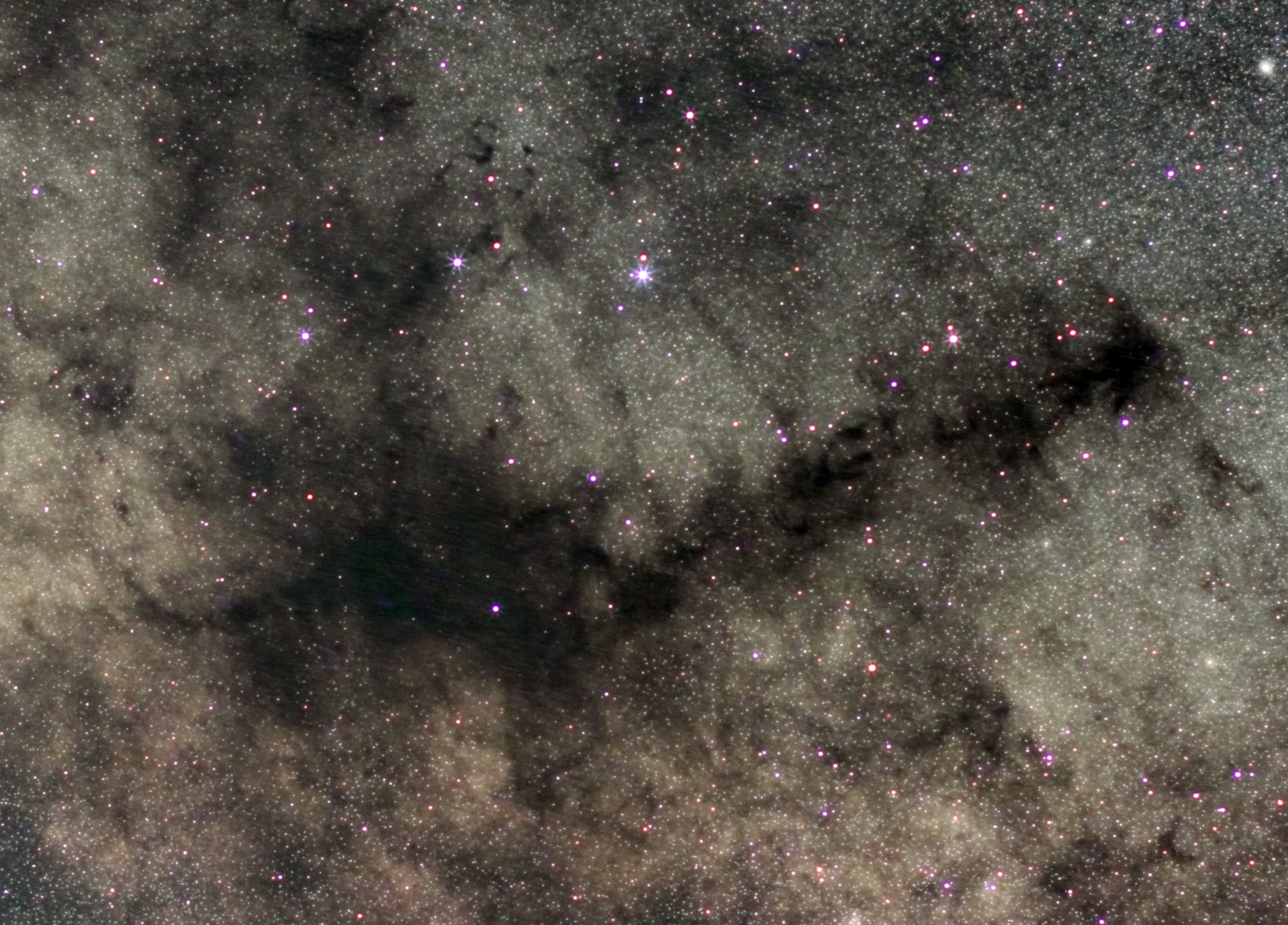
Following this shot, I couldn’t resist a similar shot of Sagittarius with the same settings. It was getting light so I only ended up with three shots here.
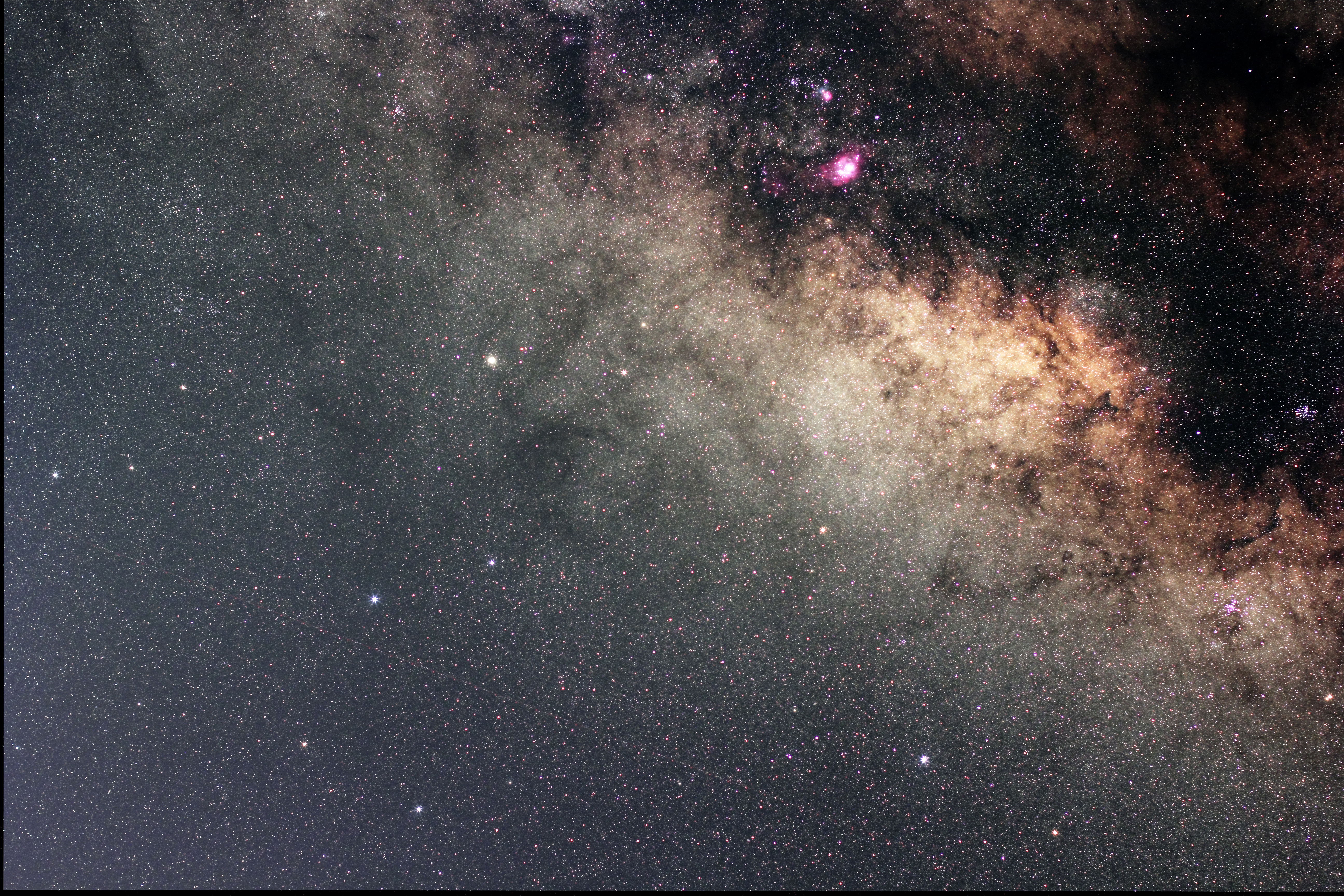
I then took one really wide field shot of Scorpius and Sagittarius as twilight was starting to break. Venus is the incredibly bright star at the bottom left.
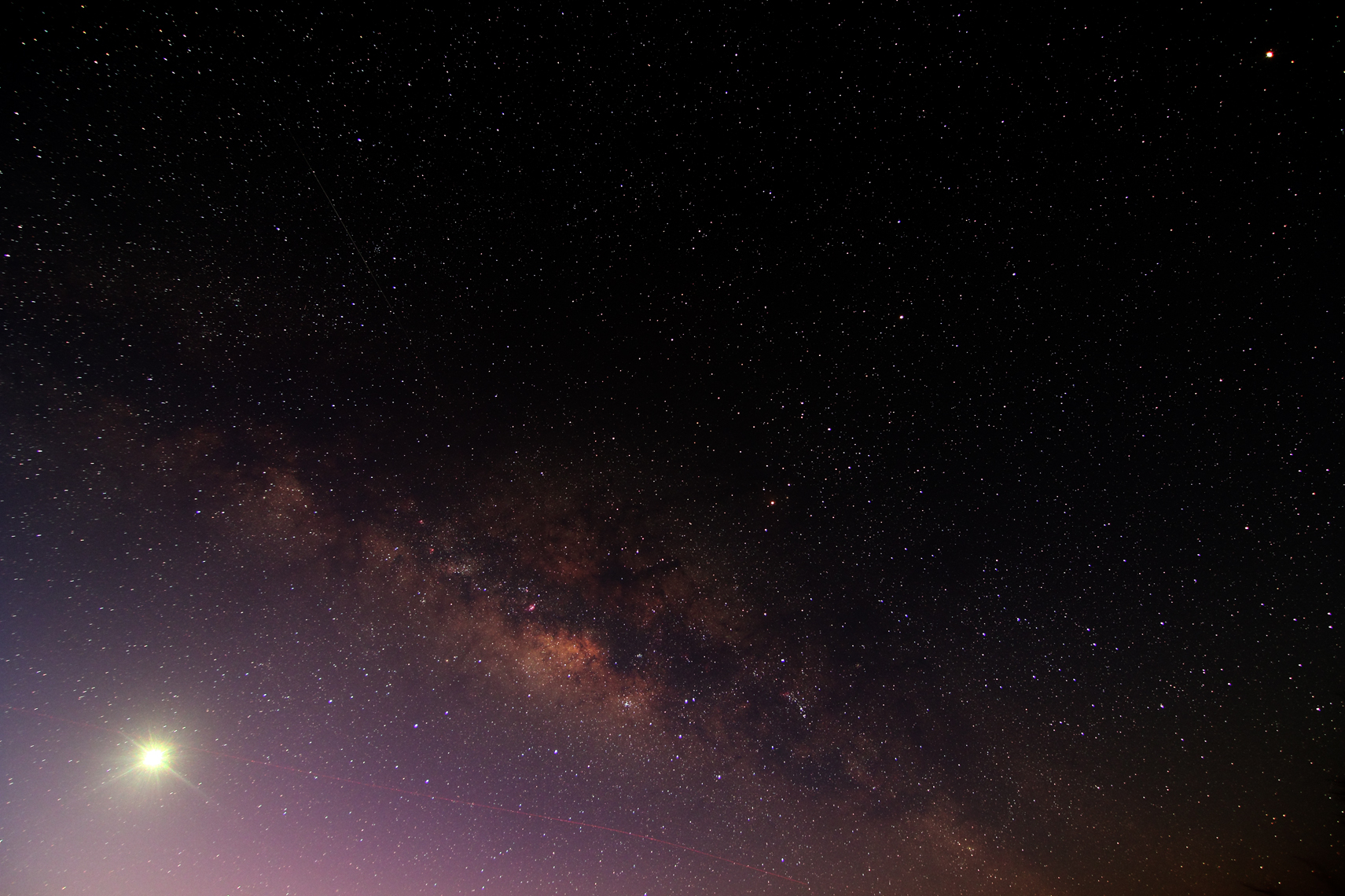
Finally, i watched the sun rise over the ocean. I swear I saw a reverse green flash, but the coolest thing I saw, which I’ve never seen before, was a mirage sun. This is caused by refraction (ie a mirage). You can see it on image it looks like there are two suns. I’m also not sure, but I might have gotten a solar prominence (thought it might just be another atmospheric effect).
That was the last of the pics from the Winter Star Party. I had a great time there and hope to get back again sometime.
Winter Star Party Part 2
Night three was the best night yet. The previous two nights, we had to dodge clouds and observe through “sucker holes” all night. This night, it was very clear until around 4 when it got hazy. My first set was with the Astrotrac and the T2i of the Double Cluster in Perseus. This was with the 200mm lens, f/4, ISO 800, 20 x 2 min.
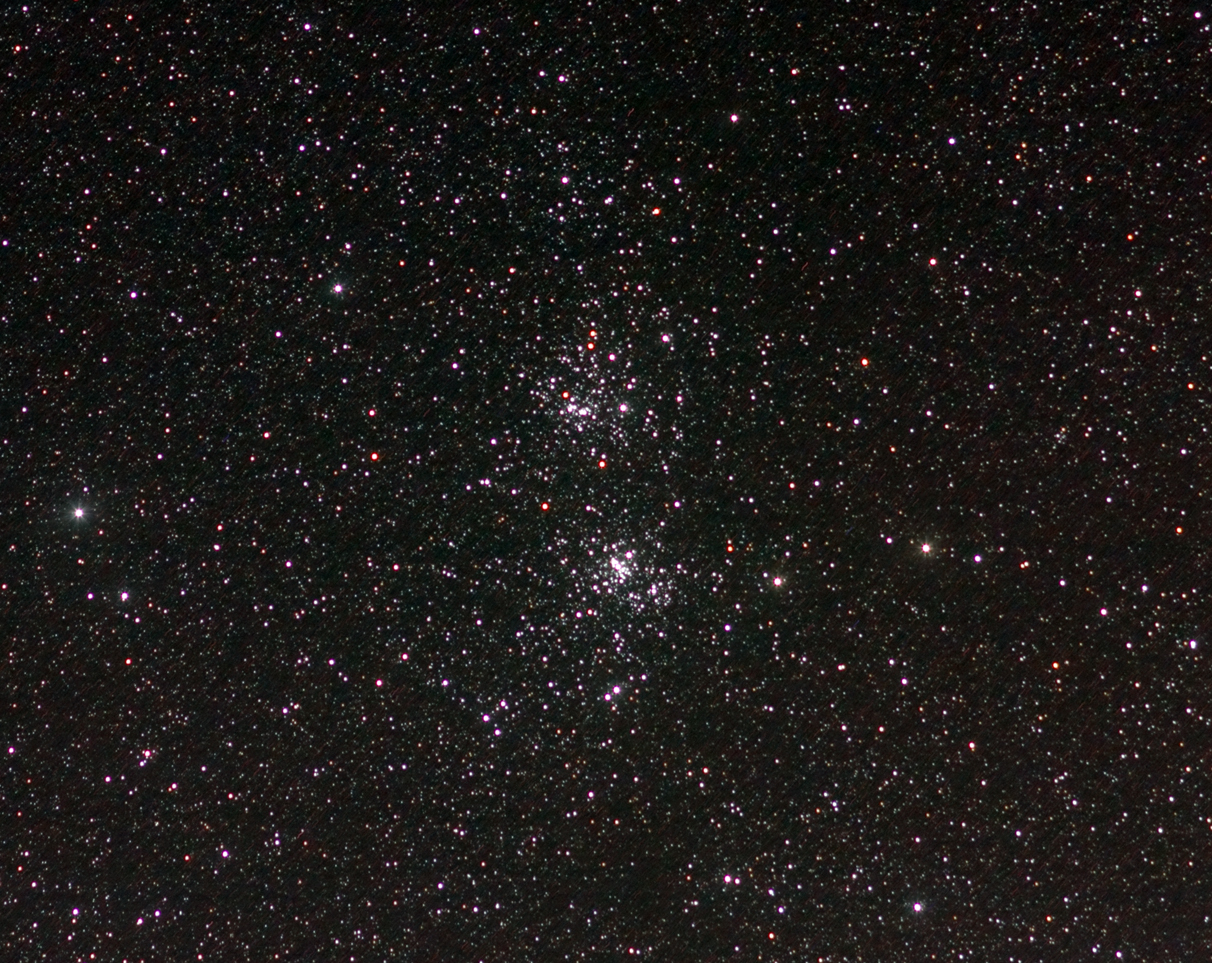
I took a few with the Astrotech refractor that night, too. The first was a series of shots of M42. I did some HDR processing here, one set to get the faint nebulosity and one to get the core near the Trapezium. The longer ones were ISO 800, 13 x 2 min. The shorter ones were ISO 800, 14 x 15 sec. Here’s the composite image, processed in Photoshop.
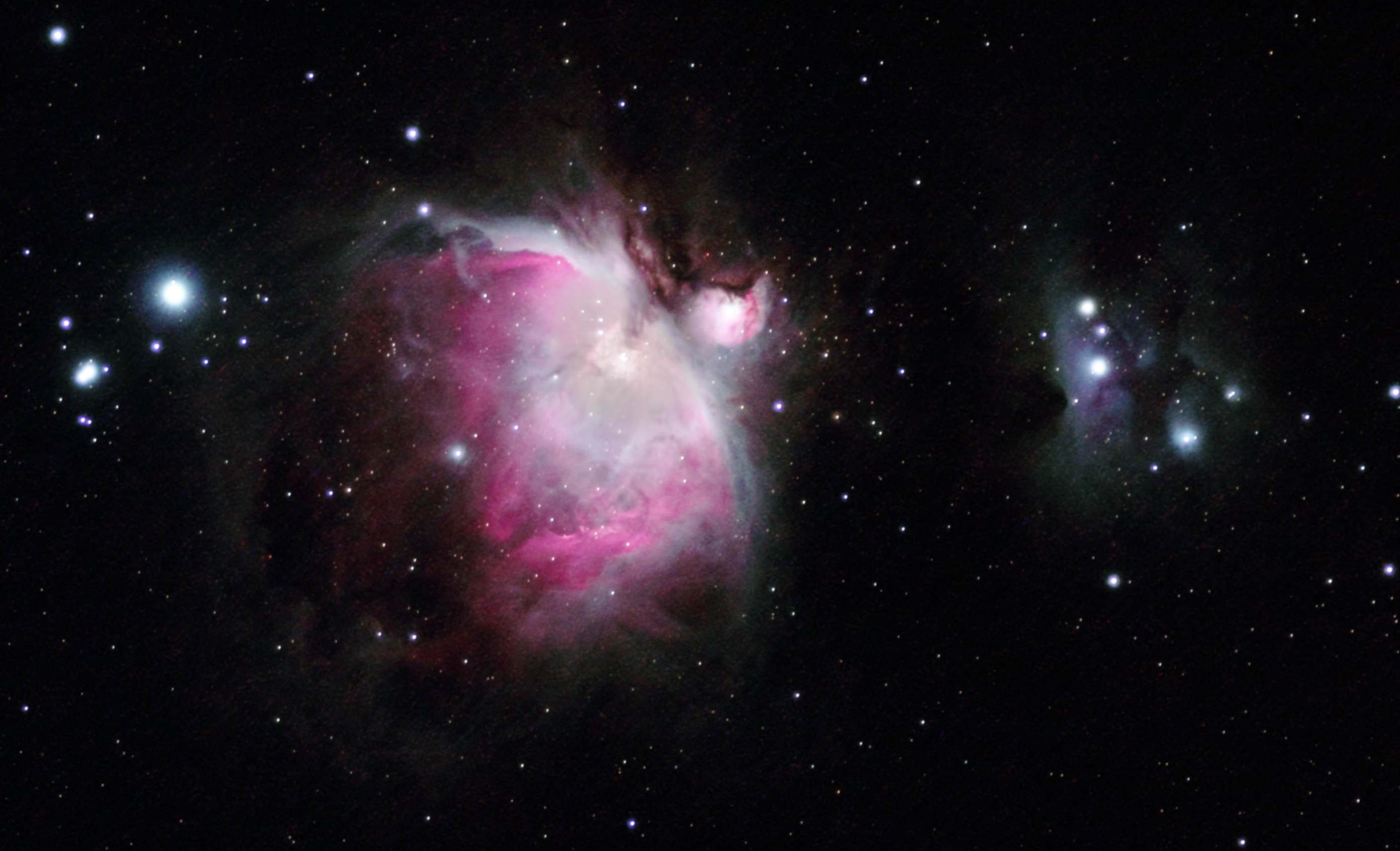
From there, I went to the Rosette nebula. This was with the Astrotech and 60DA, ISO 800, 14 x 2 min.
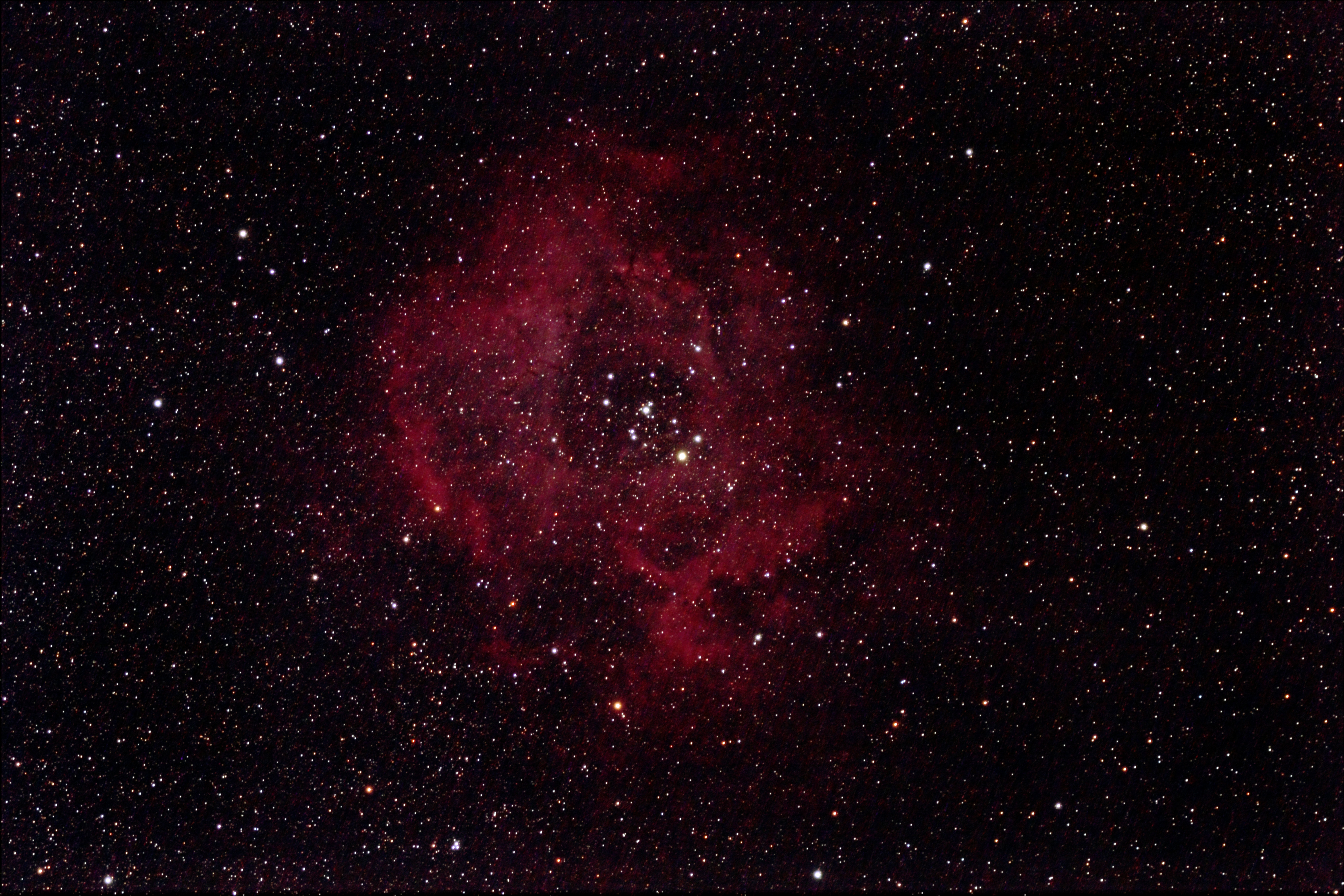
I then did IC 410, a nebula in Auriga. This was with the Astrotech and 60DA, ISO 1600, 41 x 90 sec.
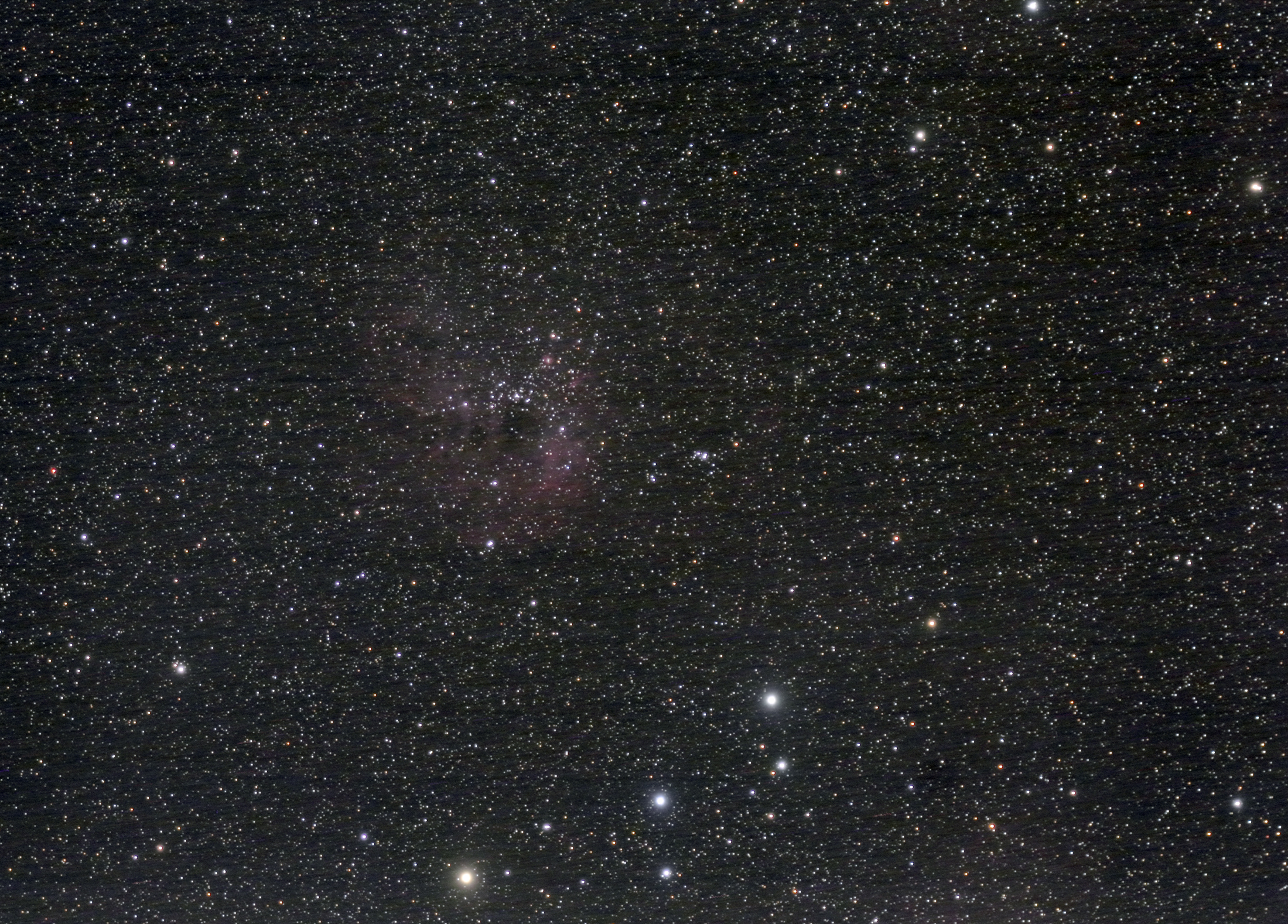
Next, I went to IC 417 also in Auriga. I positioned my field so you can see M38 as well. This was with the Astrotech and 60DA, ISO 800, 41 x 2 min.
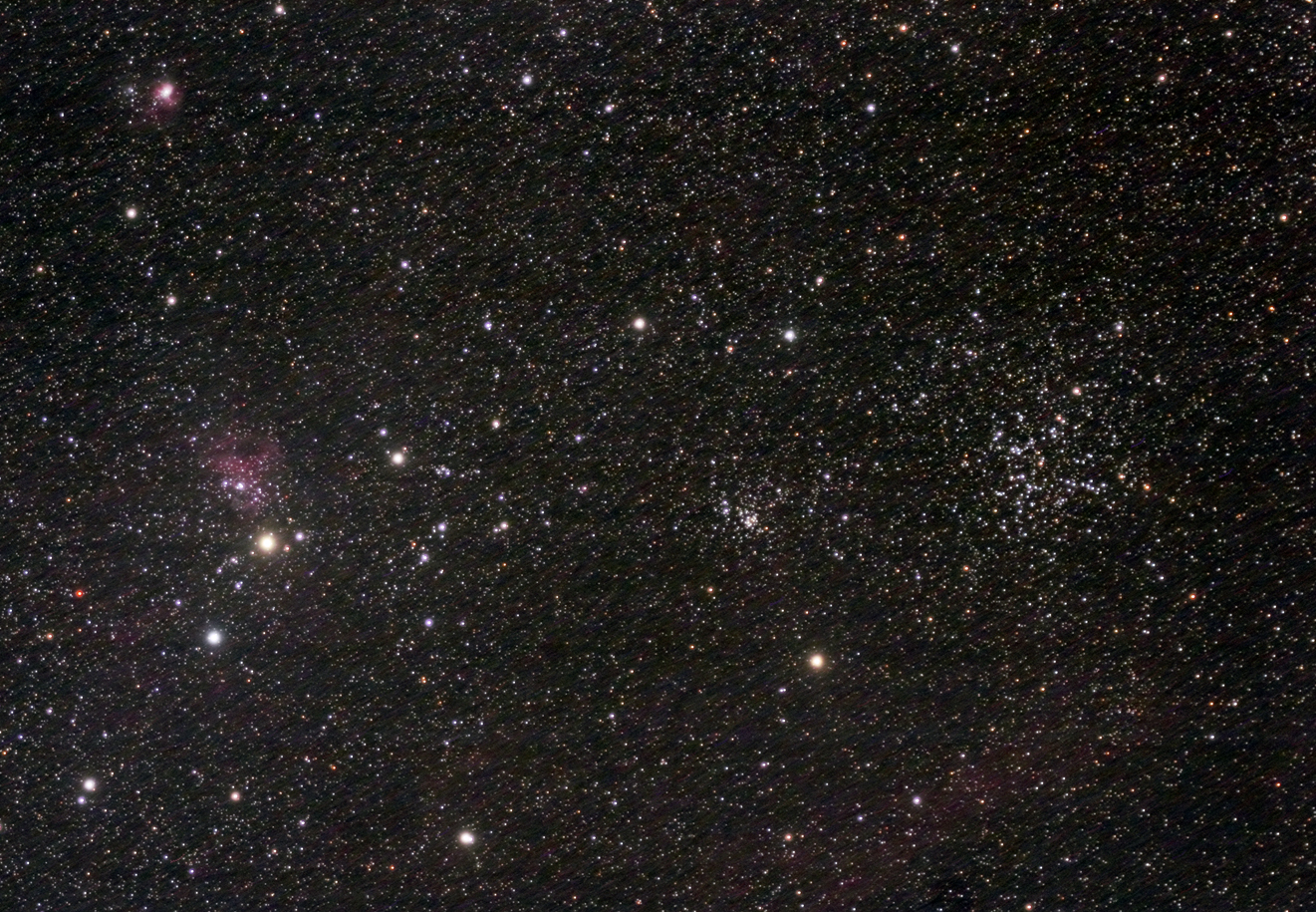
For a few hours I did some wide fields while waiting for cooler stuff to rise. One was of the constellation of Canis Major. There are parts of the Milky Way in here, but also lots of star clusters. This was with the Astrotrac and T2i, 50mm, f/4, ISO 800, 12 x 5 min.
I also did an extremely wide field of this area showing Puppis and part of Vela. This was with the Astrotrac and T2i, 16mm, f/4, ISO 800, 12 x 5 min.
Next came two things I’ve been dying to see for years. The first is the nebula Eta Carina, which rises about 9 degrees above the horizon here. I actually had to relocate my mount to see it, but we had a perfect view to the horizon over the ocean. Eta Carina is actually bigger than the Orion Nebula. I managed to see it through a 24″ scope and it was quite gorgeous. I found out about something called the Homunculus Nebula, which is apart of this area. This was with the Astrotrac and 60DA, 200mm, f/4, ISO 1600, 61 x 1 min.
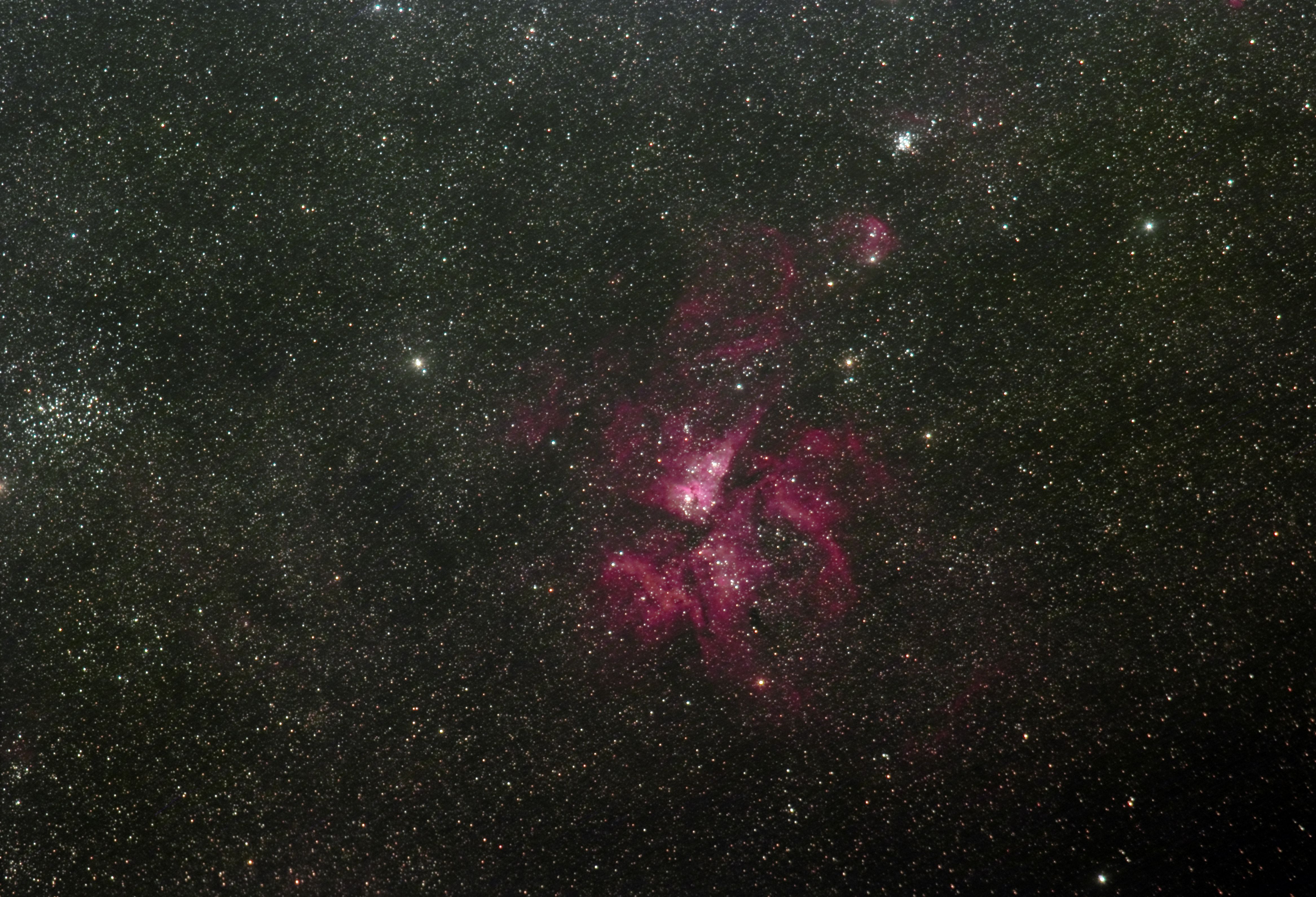
The second thing I’d been dying to see from here was the Southern Cross. I had actually seen it higher on the cruise ship, but the light pollution made it impossible to get a great image. At about 2:30 AM, it was nearly standing straight on the ocean with the bottom star barely cresting the horizon. Both the Jewel Box and the Coalsack Nebula are visible here. This was with the Astrotrac and 60DA, 50mm, f/4, ISO 1600, 10 x 5 min.
As these images were finishing up around 3 AM, I noticed that the cross was standing straight up and all four stars had a reflection in the ocean! So I snapped this image with the T2I, ISO 3200, f/4, 16mm, one 25 second image. Also visible here is Alpha Centuari, the closest star system to our own. I don’t have enough resolution here to see Proxima, the actual closest star.
The fourth evening it was nice skies for the first few hours then it clouded up. The only image I took was this wide field of the constellation Orion. Visible here is the Orion Nebula complex, the Horsehead and Flame Nebulae and also Barnard’s Loop (the red arc near the top). This was with the Astrotrac and 60DA, 200mm, f/4, ISO 800, 14 x 5 min.
Winter Star Party Part 1
Following my cruise I had one day of down time so I ended up renting a hotel room in Key West. I won’t tell you what I paid, but suffice it to say, I spent more on it than on the entire rest of the week. Of course, I flew to Miami on a voucher and most of my cruise expenses were paid for, so I didn’t mind too much.
The Winter Star Party is a gathering of astronomers on Scout Key between Big Pine Key and Marathon. The skies aren’t completely pristine as there is light pollution from those towns as well as Key West and Miami visible, but the advantage is that to the south there is absolutely nothing until you get to Cuba. Also, you are near the southern tip of the continental US, so you can see some constellations that either aren’t visible at all or only get a few degrees above the horizon from higher latitudes.
The entire week is camping, which I hadn’t done in a long time, so I had to buy a lot of gear to prepare. Since I flew into Miami, I only brought my small telescope and the Astrotrac mount with me as well as a Canon 60DA and Canon T2i. A member of my local astronomy club was driving down and I had him bring my bigger CGEM mount and some other gear that I couldn’t take on the plane.
The gates opened at 12 PM on Sunday, February 23. However, people start lining up much earlier. I was told that four cars were already in line at 10 PM the night before. I arrived at 4 AM and there were 24 cars ahead of me! Once they open the gates, there’s a mad dash for people to get camping spots. I camped with some other people from Maryland in an area with lots of trees where we’d get a little bit of shade during the day. It was quite hot all week. We set our scopes up just south of our tents and were there for five nights. The first two nights were mediocre, the third was pretty good, the fourth was only good for a few hours, the fifth was raining and the sixth was absolutely amazing. We had to leave Saturday morning, but Saturday night looked even better!
I’ll post some more about the camp later, but first, the astropics! Click any pic for hi-res.
The first astropic I took was actually from the side of the road while I waited for the gates to open. Omega Centauri was just clearing the trees, although you can see some in the stacked image. This was with the Astrotrac and 60DA, 200mm, f/4, ISO 800, 20 x 1 min. From here this hits 17 degrees above the horizon. I’ve seen this before from Missouri, but it was almost impossible. Keep in mind this was taken on the side of a major highway!
The first night, I was having some major trouble getting my CGEM mount aligned (a spring was missing from my finderscope bracket, so I tried finding the guide stars by eye…big problem) so I didn’t have a chance to take a ton of pics before the clouds rolled in. The one I did try was the Supernova Remnant in Vela. I’m not sure I actually can see it here, but the view is quite nice. This was with the Astrotrac and 60DA, 200mm, f/4, ISO 1600, 9 x 3 min.
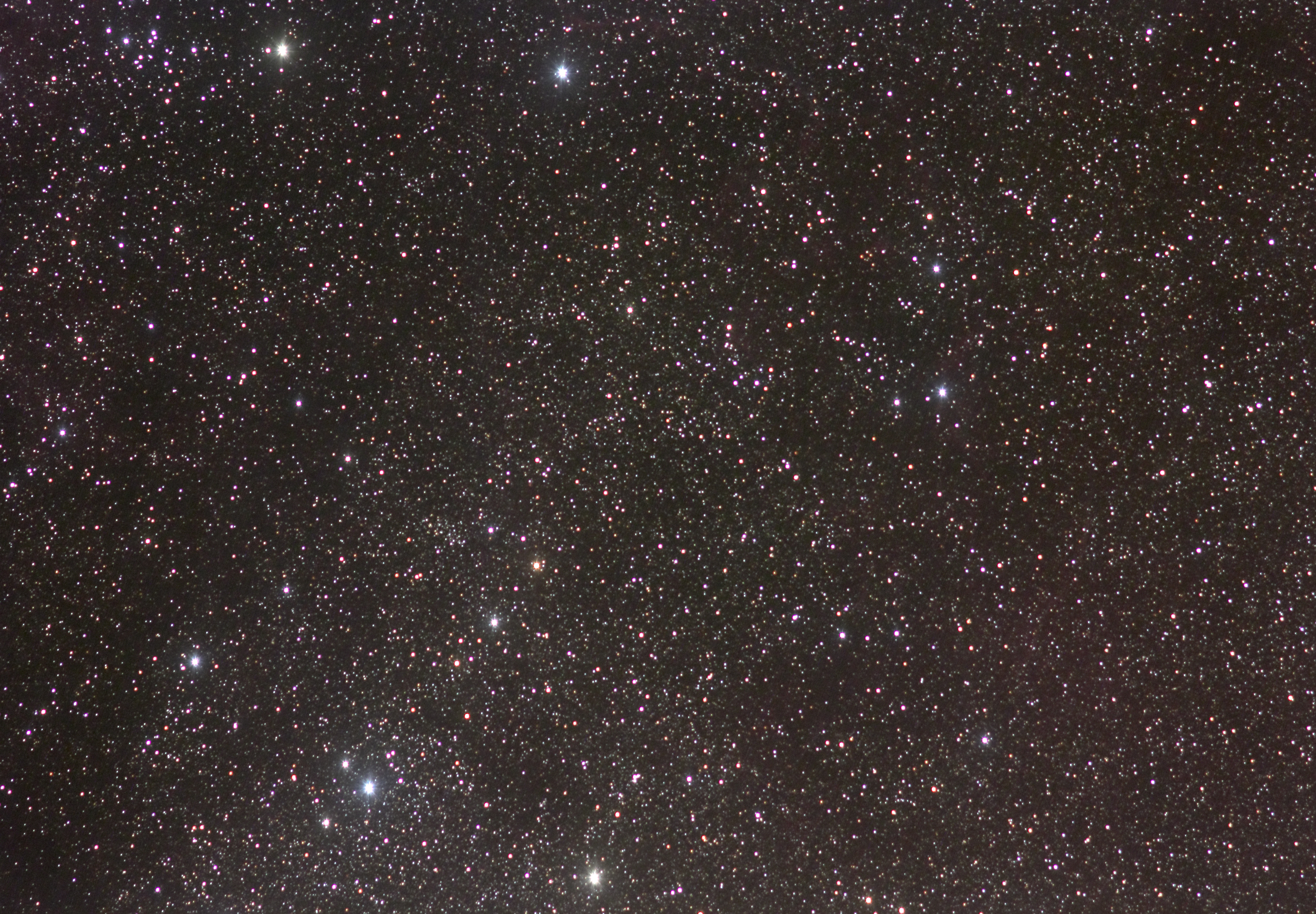
The second night ended up being a lot more productive. I got a red dot sight for my Astrotech EQD 65mm refractor on the CGEM and was able to get it polar aligned quite well. That being said, I didn’t take too many pics through it that night and they aren’t worth posting. I got three really nice pics this night.
The first was of the Seagull Nebula in Monoceros. This one takes an awful lot of exposure time to pick up so it’s kind of dim, but you can see it. This was with the Astrotrac and 60DA, 200mm, f/4, ISO 1600, 19 x 2 min.
This is out of order of when I took them, but the next night I got this through the Astrotech refractor on the CGEM. More magnification, but again, it’s pretty hard to see it. This was with the 60DA, ISO 1600, 40 x 90 sec.
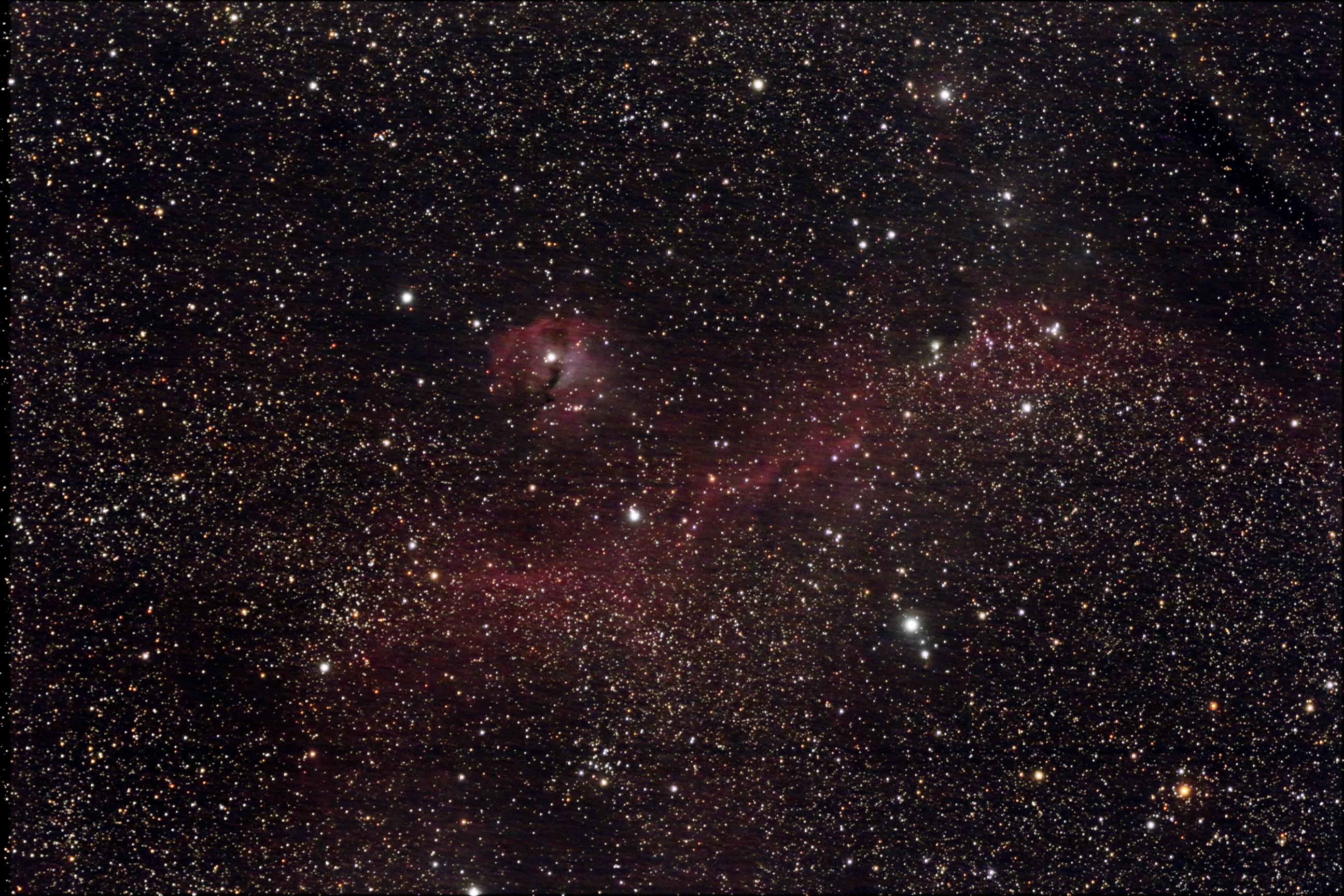
I did a wide field of most of Vela. The constellation is actually quite large so I couldn’t get the whole thing in the frame, but you can see a lot here. This was with the Astrotrac and 60DA, 50mm, f/4, ISO 1600, 10 x 5 min.
The whole time I was taking these, I’d set up the images then take a nap. My tent opened up to the south and my night vision was pristine upon waking up each time. One southern target I wanted to get was Rho Ophiuchi near Antares. This is the nebulosity just up and left of the bright star. Some of the dark areas of the Milky Way are visible in the lower left. This was with the Astrotrac and 60DA, 50mm, f/4, ISO 800, 7 x 5 min.
Carnival Liberty Cruise Part 2
Continued from the previous post. As before, click any photo for a hi-res shot.
The third port was San Juan on Wednesday, February 18. I didn’t care too much for this island in general, but there were some cool views.
I did zip lining again and saw some more great expanses of the island.
This night I ran up on deck to try to catch the Large Magellenic Cloud. We were just barely far enough south to see it. However, the light pollution on deck and the fact that I couldn’t do a longer exposure made it impossible. I did, however, get the constellations Dorado and Reticulum in this picture, near the bottom.
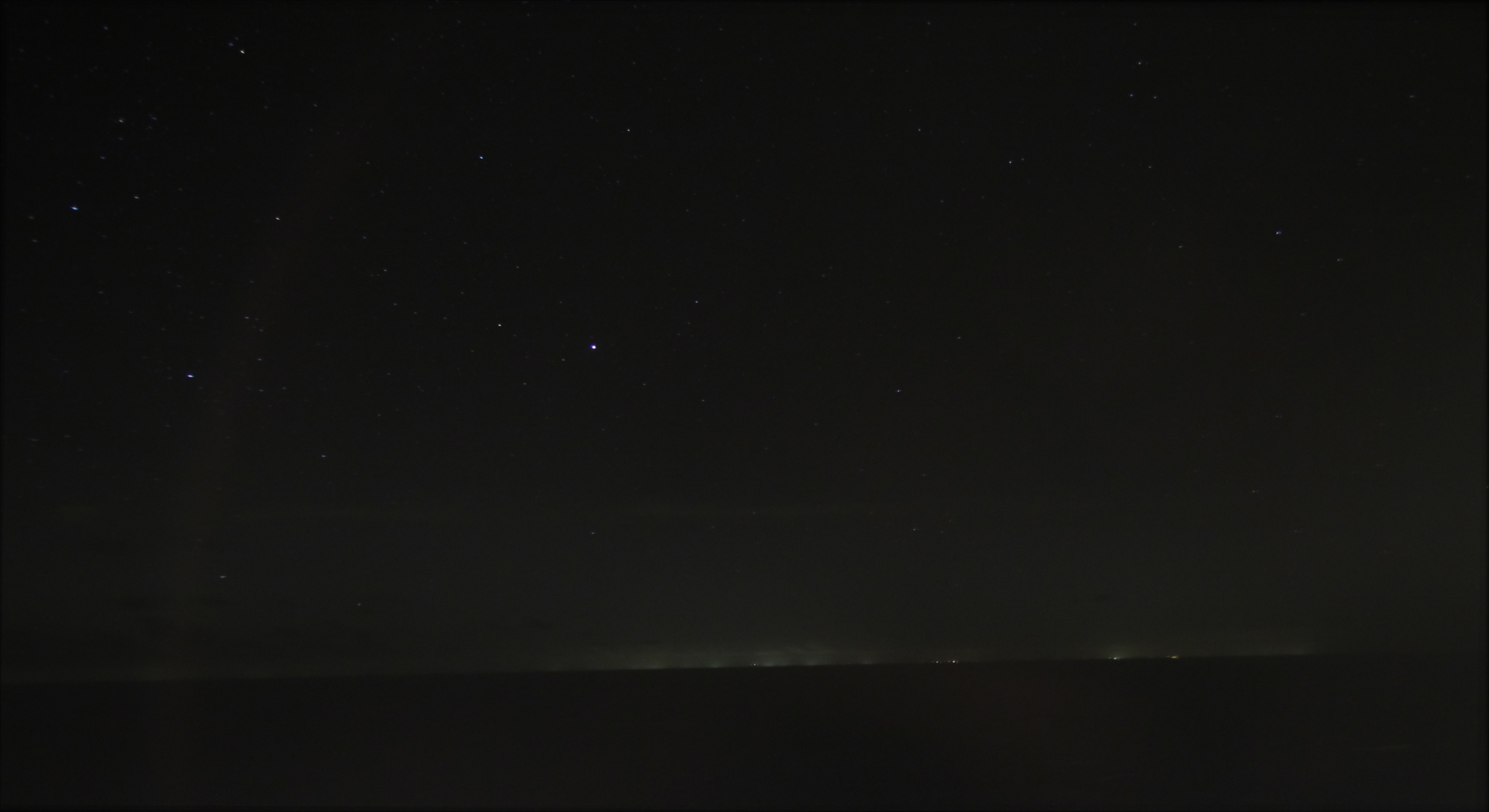
Our final port was Grand Turk in the Turks and Caicos islands.

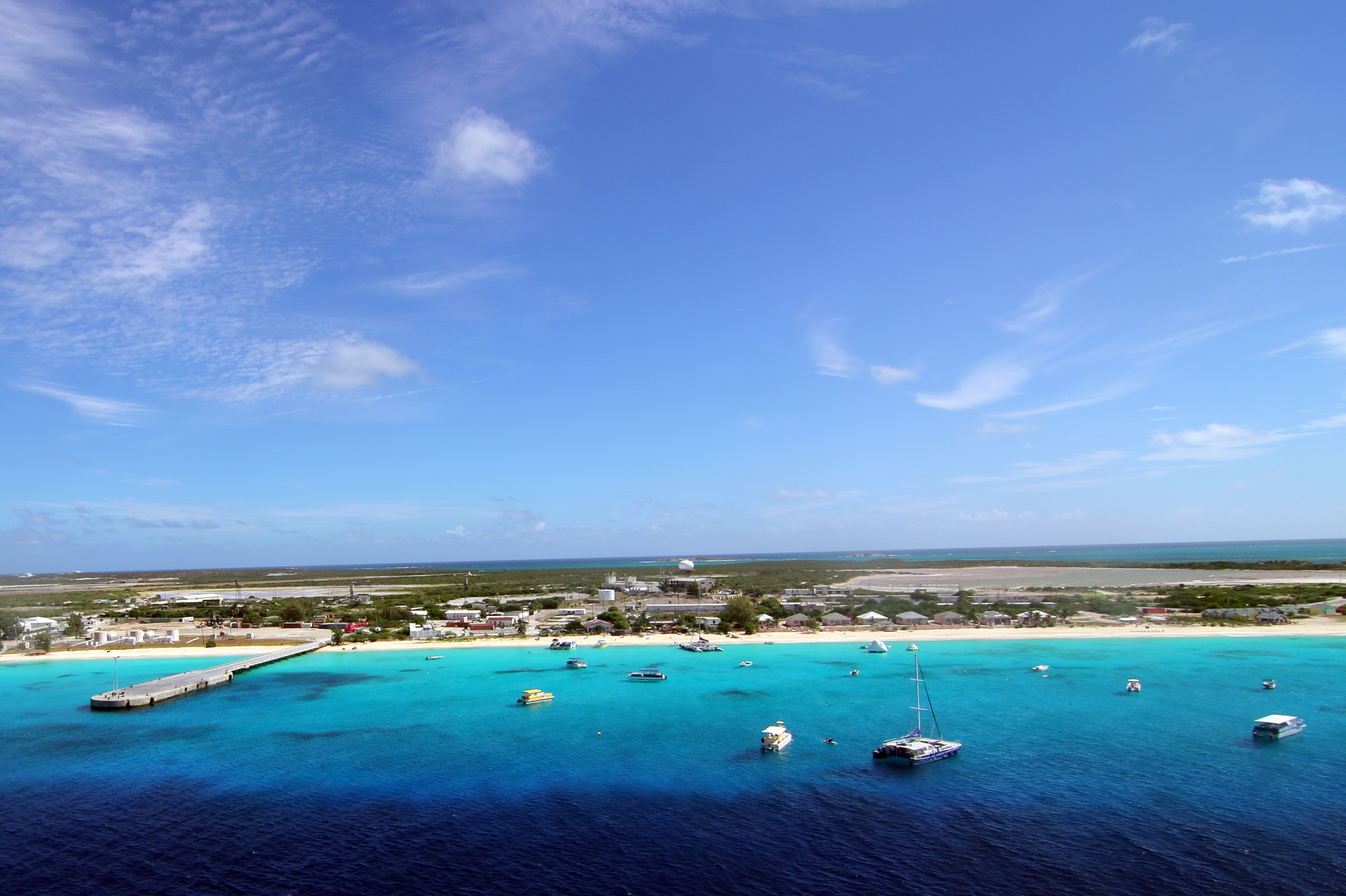
I did kayaking again [find out who and link to them]. This was an awesome trip. We saw a lot of wildlife including egrets and herons.
But the real highlight of this, for me, was getting to see flamingos in the wild. I learned the proper collective noun for them is a “flamboyance”. As we neared them, we scared them and they started to fly around, but then landed again.

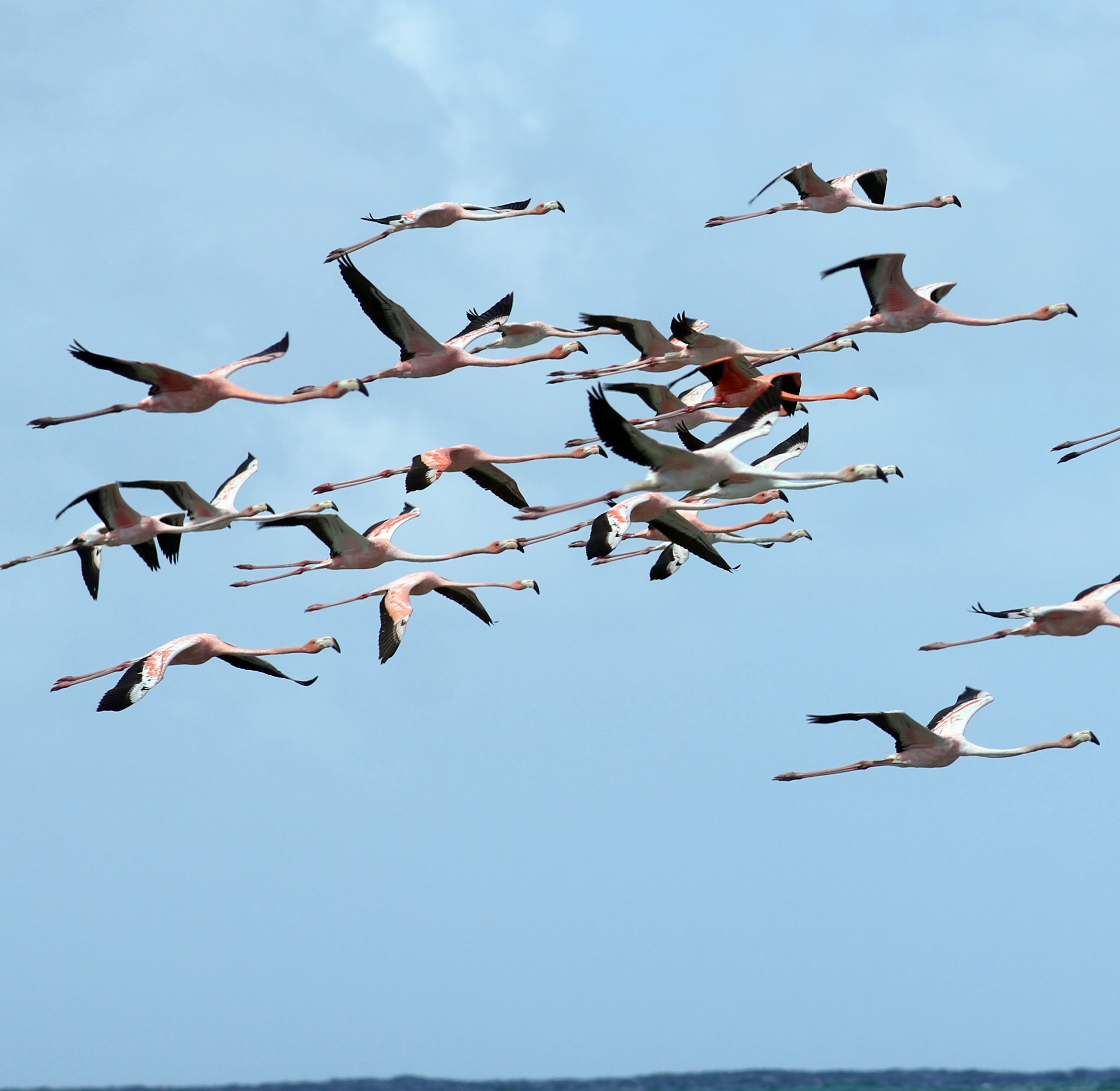
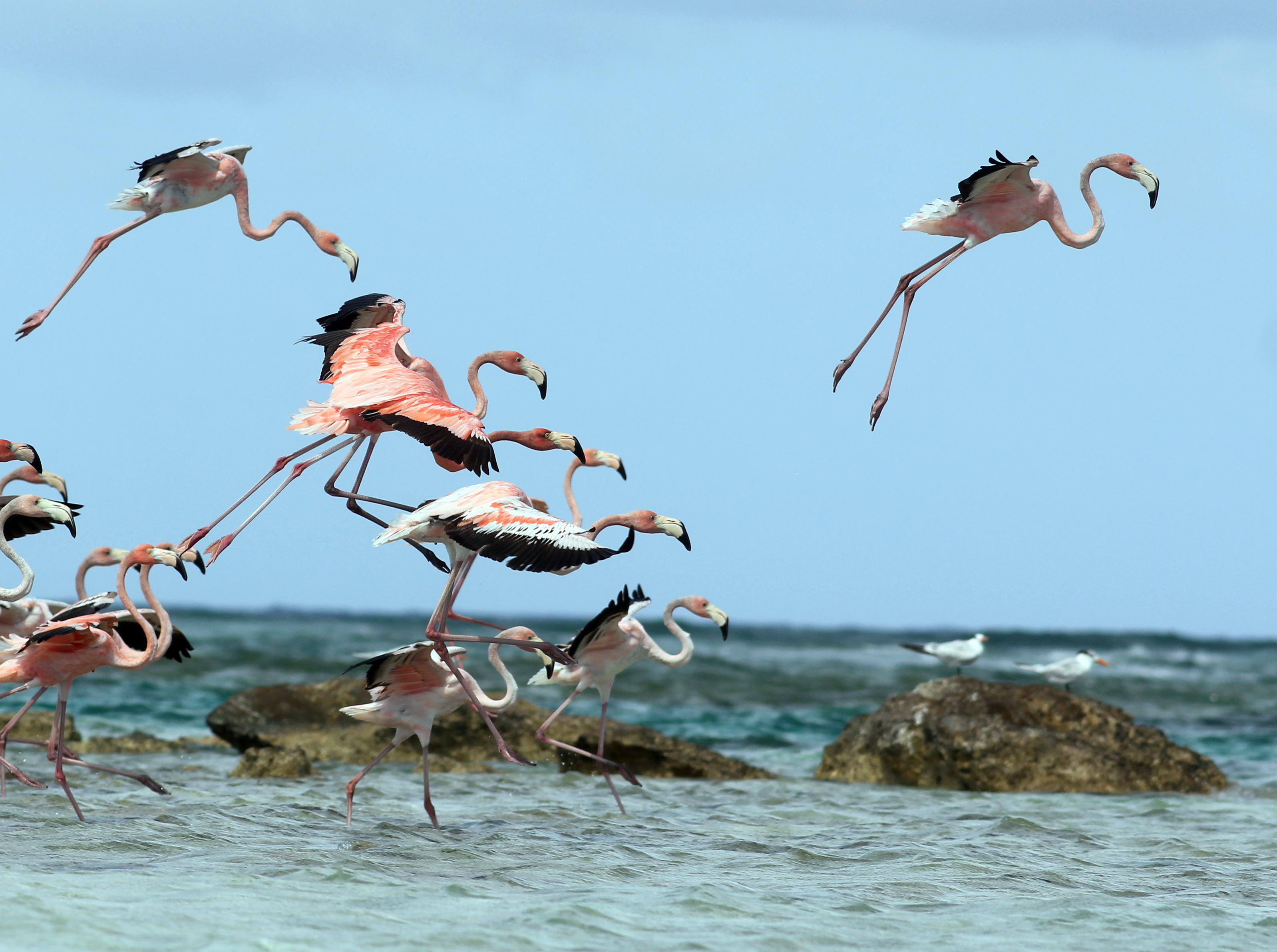
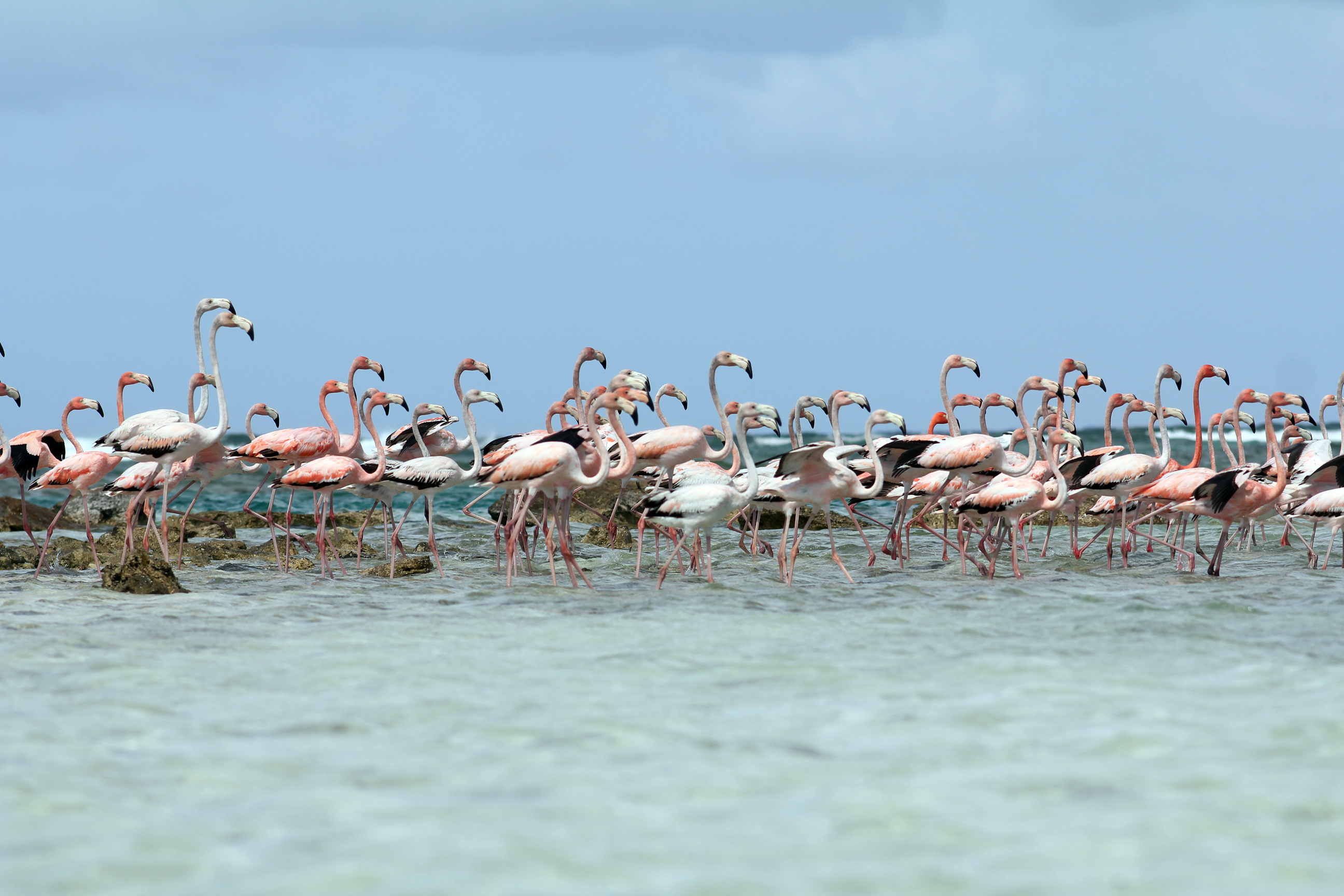
One of our guides also collected a handful of the wildlife seen in the ocean here including sea urchins, sea cucumbers, sea anemones and conch. I actually tried conch meat raw. It was not altogether terrible but I don’t intend to try it again.
Also on this island is Jimmy Buffet’s Margaritaville. They think it’s hilarious if you ask them where your shaker of salt is.
One more thing I wanted to mention about the cruise was the amazing singer in the piano bar, Jonathan. He interacted well with the crowd and had a great singing voice. I captured this video of him singing How Great Thou Art. Kind of a weird song for a bar, but I enjoyed it.
We had one more day at sea then we arrived back in Miami and I went down to the Winter Star Party.
Carnival Liberty Cruise
I just got back from a two week vacation. The first of this was spent on the Carnival Cruise ship Liberty. The cruise left out of Miami and went to ports in the Eastern Caribbean including Half Moon Cay in the Bahamas, St. Thomas in the US Virgin Islands, San Juan, Puerto Rico and Grand Turk in Turks and Caicos. Here’s some of my favorite pictures. Click any photo for the hi-res version.
We left Miami on February 15 to a beautiful sunset.
My second week of vacation was to be spent at the Winter Star Party doing various astronomy-related things, so I had brought some of my gear on the ship, hoping to get some pictures as we were venturing much further south than I’ve ever been before. This turned out to be quite difficult for several reasons. First, the ship rocks. Second, the deck is lit up like a city. As such, I wasn’t able to get very long exposures, so I had to take a bunch of really short (ie 1 second) exposures at high ISO.
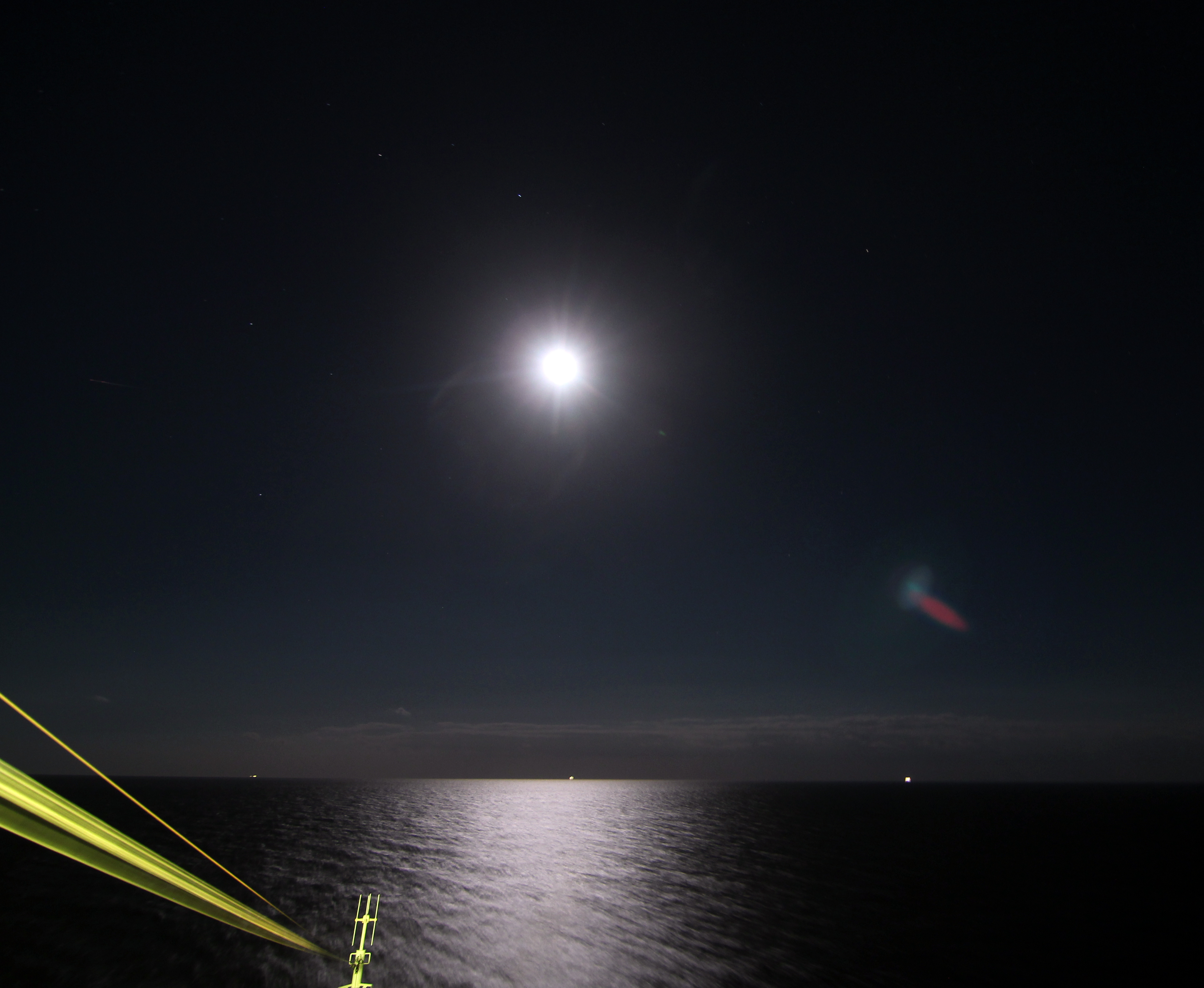
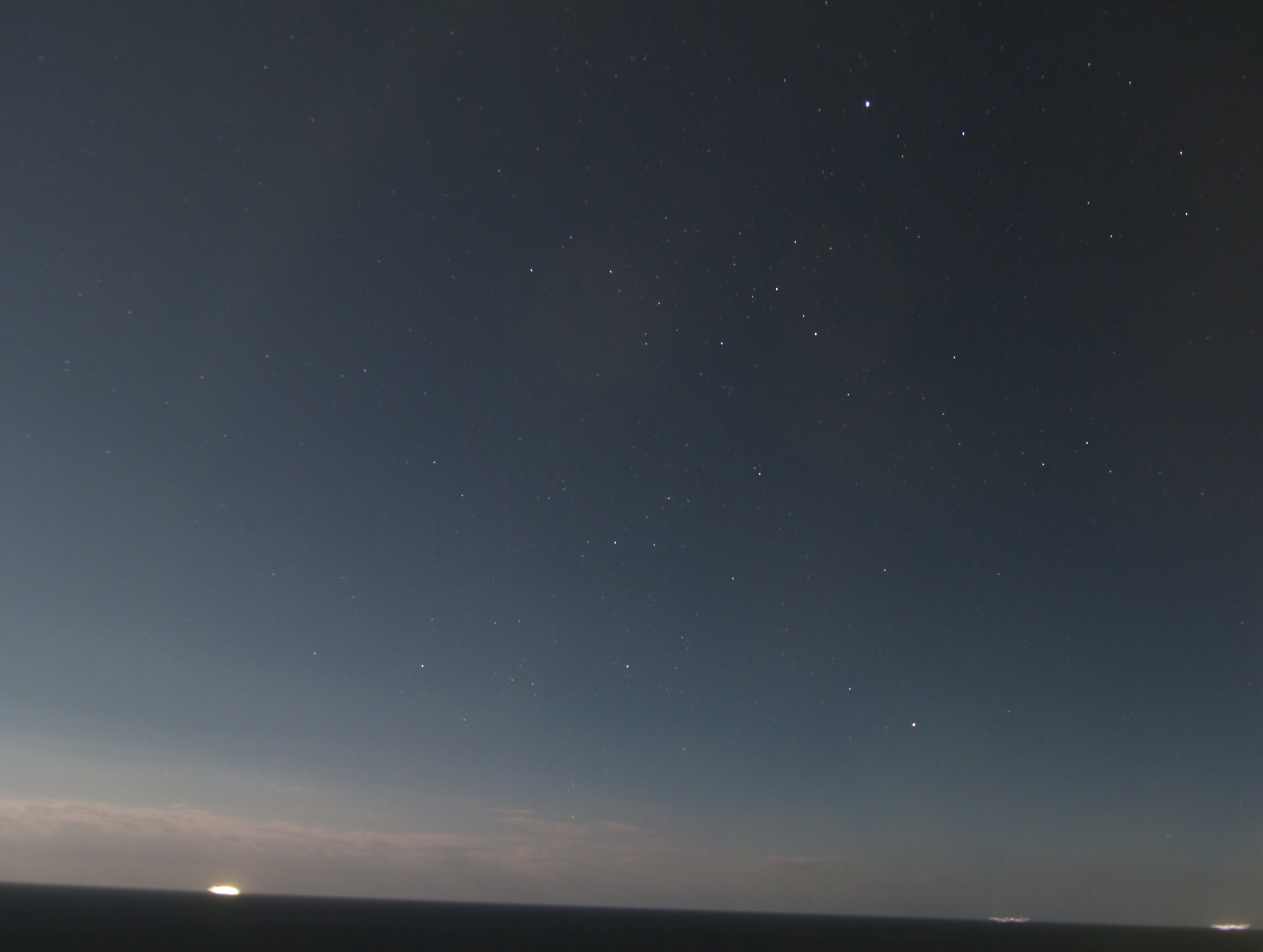
We arrived at the first port on Sunday, February 16. Half Moon Cay is a private island in the Bahamas. There’s not much to the island but the things for cruise ship passengers. Only 50 people live on there year-round. The rest of the people we saw commute every day from nearby islands.
I did two excursions here. The first was a bike ride and small hike to the highest point of the island. A whole 60 feet in elevation! But I did get some good views.
The also took us by stingrays.
The second excursion was a kayaking adventure. I bought a waterproof bag so I could take my nice camera with me. Taking a selfie with a DSLR in a kayak is not easy.
The next day was a day at sea so I didn’t take many pictures during the day. I did get a nice sunset shot and also the Southern Cross was quite high at night. I would get a much better pic at the Winter Star Party.
The second port was St Thomas which we arrived at on Tuesday, February 17. I awoke to see this island outside our cabin.
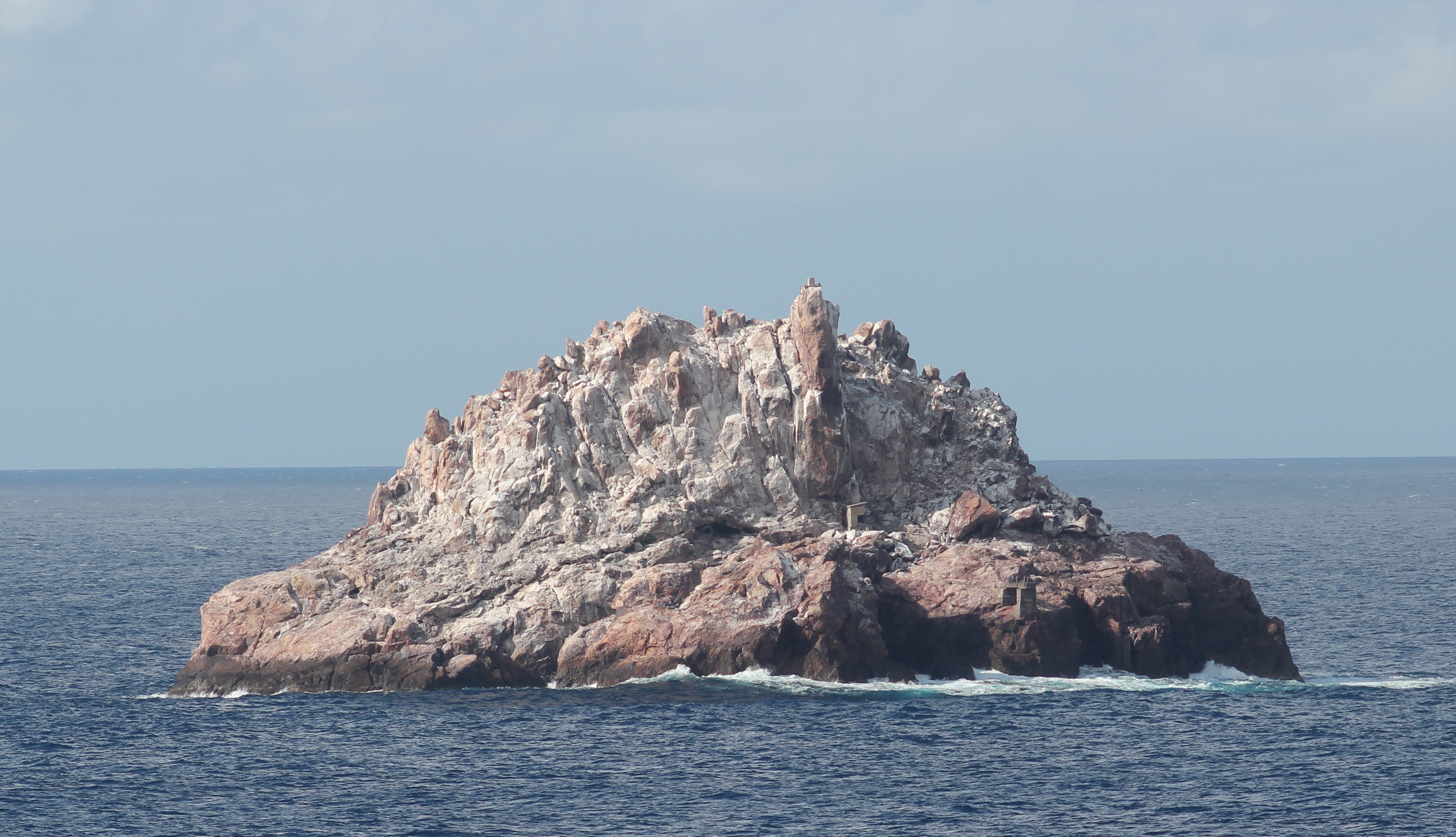
This island is absolutely gorgeous.
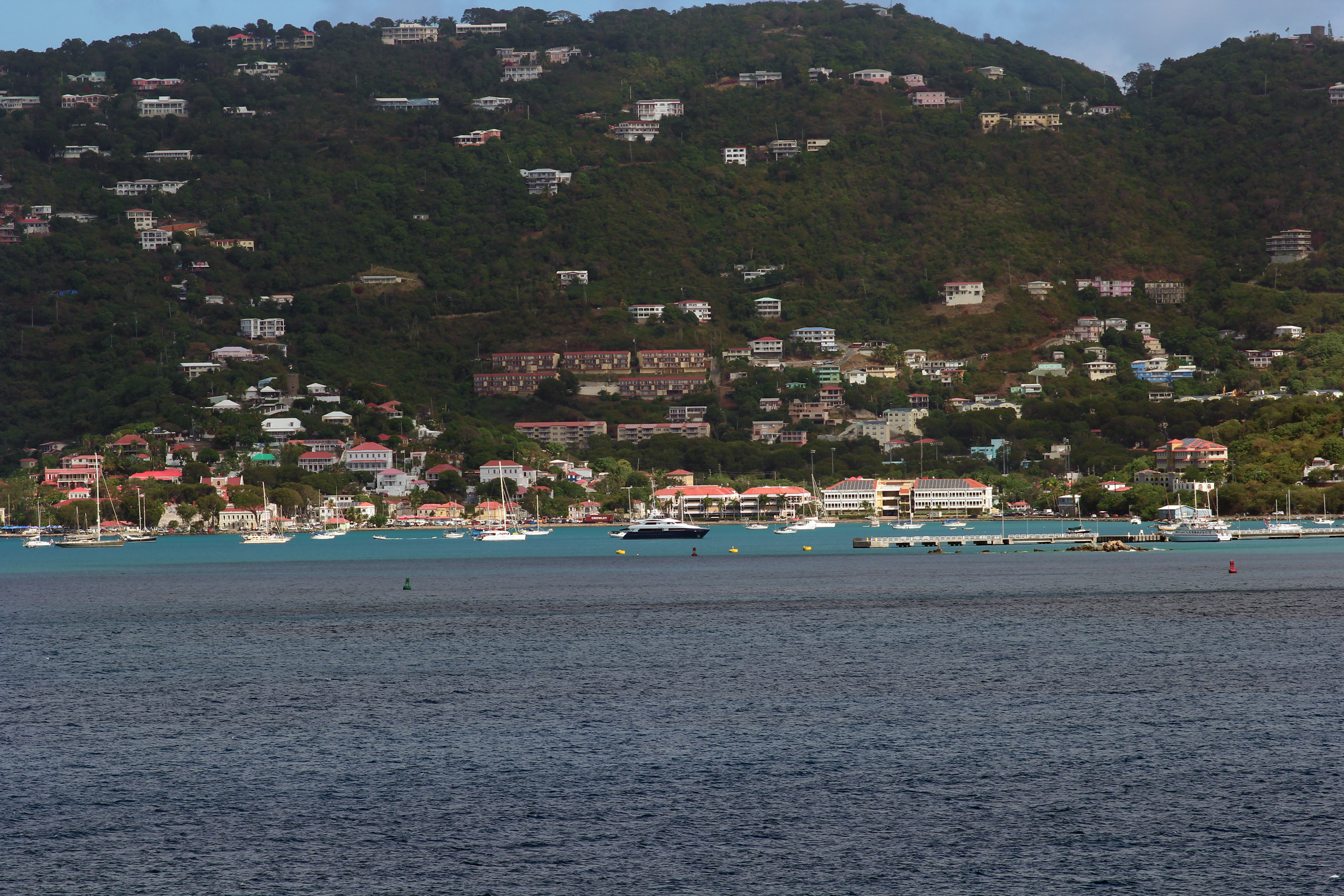
I did two excursions here. The first was a quick ride to the top of a mountain providing an excellent view of the port.

The second was Tree Limin’ Zip Lining (I’m not quite sure what “Limin'” is). I was quite disappointed when it started raining as we got to the course, but the rain went through really quick and started clearing up. We got gorgeous views of Magen’s Bay, where people such as Oprah and Bill Clinton own houses.
I also couldn’t resist giving a Shaka Brah:
We pulled out just after sunset and I got a great picture.
To be continued in part 2.
MIT Mystery Hunt Wrap-Up Part 6
Part 1. Part 2. Part 3. Part 4. Part 5. Part 6.
(SPOILER ALERT: THESE POSTS CONTAIN DETAILS OF PUZZLES FROM THE HUNT INCLUDING HOOKS AND ANSWERS).
The final part of the Mystery Hunt was the run-around, which was a ton of fun. We actually solved the last meta-puzzle around 8 AM on Sunday. The coin was found around 2:30 AM, and in between the first team starting and 8 AM, 5 teams went on the run-around, so Alice Shrugged was quite exhausted and there were very few people left in Hunt HQ at that time. We were told it would probably be around 2 PM when we started. They were actually very accommodating with us and I don’t blame them for making us wait.
In between, we worked really hard to complete the hunt, both front solving and backsolving. One of the highlights of this period for me was when we got Dan Katz to tell us an answer. Well, kind of. Someone in our group was apart of a White Heffalump gift exchange over Christmas that Dan was involved in. We had the promise of an answer from the Mystery Hunt, with the caveat that we had to have already solved the puzzle and confirmed the answer, but Dan would read it in a Sean Connery voice. We debated long and hard over what answer we wanted him to say. One answer was “James Bond”, which seemed perfect. But we decided on the meta answer for the Humpty round, which was EISOPTROPHOBIC. It was awesome.
Starting at 2 PM, the Cheshire Cat came to our room to take us on the runaround. We went to the first room and there was a crying baby on repeat on someone’s computer. We were supposed to figure out a way to shut it up. Following on of the previous rounds, we had gotten a plexiglass square with a chessboard below it. It turns out there were record grooves on it. There was a record player in the room, but we were supposed to get it to work without electricity, or the regular needle, or an amplifier. We did have a table full of items, though, each with a letter on them. We searched YouTube and found that you can take a sewing needle create a cone out of paper and manually spin the record.
This was extremely challenging. One of my favorite moments was when our team leader held up a jug of some liquid and a few other items and asked if there were any chemistry nerds who could build a battery! In the end, we were able to hear words on the record, but they had superimposed two pieces of words forward and backward. You needed to identify them and take the letters on the corresponding items in the room which spelled out “SING I AM THE WALRUS AS A LULLABY”. We were allowed to take a mirror with us.
The next part of the runaround was an amazing puzzlebox in the form of a bed.
We had received an allen wrench from another metapuzzle. There were blocks with numbers from 1 to 7 on the side of the bed, but we couldn’t get it to catch on any of them. It turns out that there’s a magnet inside the headboard, and when you stick the magnet on it, you can move it, which removes a catch and allow the bed to be pulled out a little bit. It was then a lock-picking puzzle with the blocks. This took us quite a while and we got lots of blatant hints from Alice Shrugged. There was a “down pillow” inside.
The last stage was pretty straightforward. You solved three Nurikabe puzzles, then there was a fairy chess puzzle at the end.
At the end we were allowed to take a giant King chess piece.
The final part of the hunt for us was solving a hedge maze with special rules. Basically the idea is that Wonderland really hates Alice and is trying to get rid of her. She enters the hedge maze with the rabbit, and you have to get her to leave it without it. The mirror, pillow and chess piece had special rules and you had to figure out where to place them. This took us quite a while, but we got it in the end.
There was one last phase of the runaround that we didn’t get to do where you take the answers of all of the puzzles and get a final message from them. That leads you to where the coin is.
All told, this hunt was a fantastic experience. I’ve been solving with this team for three years now and this was my second year on-campus. There really is no substitute for being there in-person. I’ve made great friends through this and always leave feeling like I could solve all the hardest problems I encounter in my day job. Thanks to everyone on my team and to the organizers of the hunt for making this so enjoyable.
MIT Mystery Hunt Wrap-Up Part 5
Part 1. Part 2. Part 3. Part 4. Part 5. Part 6.
(SPOILER ALERT: THESE POSTS CONTAIN DETAILS OF PUZZLES FROM THE HUNT INCLUDING HOOKS AND ANSWERS).
The next round was the Red and White Knights. This had some of the hardest puzzles from the hunt and was the last meta we finished. By the time we got here, we had very little left to do, so we had a team meeting and were desperate to finish up a few more puzzles to help out with the meta. Late Saturday night, we started looking at Campus Art from Z to A. We cut out the pieces and tried piecing them together. It took a long time to figure out it was some artwork from the Z-Center on MIT Campus. We raced over there only to find out it was closed! We called HQ and they said there was no way we could get in there. They were nice enough to open up a new puzzle for us because we couldn’t do that one.
Sometime late that night, we solved a puzzle and opened up two new puzzles. One was called Filed Erector, which was pretty easy, especially since about 30 of us were working on it at once. The last one we were looking at was Hole Wizard, which had a file that had a bunch of drill bit sized holes, plus a bunch of crossword answers. We worked on it for a while and didn’t make any real progress, so we gave our numbers to our overnight team leader in case we started the runaround and got a few hours of sleep. We had just heard that two teams had started it so we were pretty sure we weren’t going to win.
There was one called The Duck Konundrum VI: Now with Way Way Way Way Way Too Much Pepper, which I didn’t do, but was in the room when they did it. People used to complain that the Mystery Hunt had too many puzzles with no instructions, so someone created a puzzle that was nothing but instructions, but really, really involved ones. Dan Katz wrote a doozy this year. The people participating in it had a lot of fun.
There were two other rounds that we finished before this, but I think opened later in the hunt than the knights round. For the Caucus Race round, I started out working on SAT III. We worked on all the problems, which are all NP-hard, and found the solutions, which were never apart of the answers. However, for the example at the top, all five answers worked. It took us a long time to get the hook, but it turned out that you needed to find which sequence of +,-,*,/ works with the five answers given to get you the right answer. There was always a unique one. If you plug that into the numbers for the example, you got a letter. One challenge here was that since the problems are NP-hard, we had to just program up exhausts or sometimes just get lower- or upper-bounds and use uniqueness. So we called in a couple of awful answers.
I worked for a while on Gone With the Wind, which was really cool. The pictures were all water boundary maps of regions between latitudes 30 and 45 both North and South, and all around the globe. We actually had a geographer on our team who was awesome to work with on this. The only difference in the wind lines on the maps is the direction of the arrows. You get a binary number out of them and use one polarity for the North and another for the South (like the Coriolis Effect). I also worked on Cruciform Heraldry, which was a cool cryptogram using the heraldry of the 26 cantons of Switzerland.
The final round was Humpty Dumpty. One of the fairly straightforward puzzles here was Family Ties. Each picture is a family tree of some famous family. My favorite is of Fry in Futurama, which features him becoming his own grandpa through some “past nastification”.
Hands down, my favorite puzzle in the hunt was Covert Tops. I was in one of our rooms working on another puzzle and I heard someone across the room say, “What is that? OH, it’s a Rubik’s cube! Come here, Joe!” I started working on the puzzle immediately. You never actually SAW a Rubik’s cube, mind you. Matter of fact, I’m not sure if there was a cube there at all. They were pretty clear to show which of the six moves they were doing to the “cube” at each stage, then after so many moves they’d take a photo. I wrote down all of the moves that I saw quite tediously. Remember from before that I didn’t have a good Rubik’s cube on campus, so I went nuts trying to find a good program to do this on. I thought I had found a good online applet but it turned out you couldn’t do a complete flip of the cube. I ended up using Ultimate Magic Cube. I had to watch through the video a few times because I had made mistakes in the transcription at a few places. I got all the way through and took pictures of my laptop at each stage. I was a little lost, but then my friend Mike pointed out that it might be Braille. At least the first few photos had a solid column on the right and only two colors on the left. However, they were using grade 2 Braille, which made it a little tricky. About halfway through the message, I had apparently made a mistake, but fortunately, the message was out of Alice in Wonderland, so we figured out the answer. It was so satisfying.
Two other puzzles during this round worth mentioning. One was Crow Facts. I only mention it because after we solved it, some people on our team started posting other random crow facts on Twitter. Also, one called Eggsam, which was a bunch of real words with fake definitions. You were then called to HQ for a test. We had a teacher on our team that absolutely nailed this one on the first try.
Next post…the runaround!
MIT Mystery Hunt Wrap-Up Part 4
Part 1. Part 2. Part 3. Part 4. Part 5. Part 6.
(SPOILER ALERT: THESE POSTS CONTAIN DETAILS OF PUZZLES FROM THE HUNT INCLUDING HOOKS AND ANSWERS).
The next round was the Mock Turtle round. We got through this without too much trouble, although completing all the puzzles was quite a challenge. Every year, there’s some sort of “scavenger hunt” where you have to find a bunch of odd items, with bigger teams having to bring more items. One thing on the list was someone who could solve a Rubik’s cube in under a minute, which I can do. Unfortunately, my good cube (oiled and all) was at home, so I solicited the team for one. As it turns out, one of our team members still had the cubes she bought for us last year during the Rubik’s cube meta round. It turned so poorly that there was no way I would break a minute, and I couldn’t easily find the type of spray that makes these turn really well. (I would get my chance for a good Rubik’s puzzle later, though).
One interesting puzzle here was Safer Sephiroth, a Final Fantasy themed puzzle. The funny thing about this was that we were in the middle of a team meeting and it was mentioned that that phrase was related to the Book of Numbers. The meta-puzzle, as it turned out, had a bunch of fill-in-the-blank clues where the answers were all two letters off from a character in Alice in Wonderland or Through the Looking Glass. So someone in the room said, “Would TORAH work as an answer?” We called it in and it worked!
The one puzzle I worked on really late in the hunt was Please Remain Seated. This was the perfect example of experts on certain things teaming up to solve a puzzle. Someone good at roller coasters figured out what the theme parks and coasters were. Then we noticed the videos on the right were all knots in the mathematical sense. We guessed that the crossing number would be the most likely invariant they’d use as an index. Our team has many, many mathematicians, and there happened to be a knot theorist in there. Our final solution was a mixture of front solving and backsolving because we knew which trivia question it went with, so once we had the first half of the answer, we guessed the last.
Another extremely clever round was The White Queen. The entire round was backward! They gave you the meta-puzzle answer and a handful of puzzle answers, then you had to backsolve to get other answers, and from those, you had to solve the puzzles backward to get the title! For the meta, there was a chessboard with red and pink squares. Only pinks were filled in with the last names of Red Sox players. We quickly guessed the rest of the pinks, but had none of the reds. We must’ve called in 50 wrong answers going through the White Sox and other teams. In the end, it turned out to be Beatles Songs, so we were way off.
The only one I worked on here was Cronin, which was really cool. There’s an annoying cat who flies through space with stars in the background. Reading the source, it’s reading from a 3MB file of seemingly random hex digits. Someone on our team discovered it was MD5 hashes. They built up words one letter at a time, for a sentence from Alice in Wonderland, starting with the empty string, then there was a really long string of hex at the end. You repeat that with SHA1 and get another quote and another string. You repeat that with SHA3 and get the final answer. We got this one done at about 1 AM on Saturday and I was so tired at this point.
MIT Mystery Hunt Wrap-Up Part 3
Part 1. Part 2. Part 3. Part 4. Part 5. Part 6.
(SPOILER ALERT: THESE POSTS CONTAIN DETAILS OF PUZZLES FROM THE HUNT INCLUDING HOOKS AND ANSWERS).
Following the preliminary “MIT” round, we went to “Wonderland” where there were six rounds. The MIT round was designed to be fun for smaller teams, so the puzzles, while challenging, were not quite as hard as those in the rest of the rounds.
The Tea Party Round was one of the first we opened up, but took us the longest to finish. The meta puzzle ended up flummoxing us for quite a while. The first one I remember looking at was Disemvoweled. This had a bunch of words with the vowels removed that fit into one of seven categories. Each of them had an extra consonant, and for each group, the missing consonants formed another word in that category and the seven at the end were from the answer. One of the last ones we got was brcklhm, which was a music festival, Rocklahoma. Having the errant ‘b’ at the beginning made it tricky. My teammate Arun kept saying “bricklehome” over and over trying to find the right word. (It was Rocklahoma).
One really cool one that I devoted a lot of time to was Now Let’s Create Some Melodies. If you watch the videos, you’ll notice they are singing familiar melodies, but the lyrics have been replaced with synonyms. Eventually it was discovered that these were songs sung on the Muppet Show! (Hence the title, being synonyms for “It’s Time to Start the Music”). Most of the names were filled in, so it was a matter of putting them into the correct blanks below. This was harder than it should’ve been. We filled in a lot of them (still missing a few of the answers) and got the message SANG DISCO *. Since the Muppets Show was on in the 70s, I assumed it was a song with “Disco” in the title, so I Googled it. I found this, which has been stuck in my head ever since:
It turned out to be “SANG DISCOURAGED”. I wasn’t a big fan of this clue because, first off the answer is “Buddy Rich” who sang, “You Mustn’t Feel Discouraged”, but second, I expected it to be cluing someone who sang a song with a title that MEANS discouraged, and “Blue” was sung by Helen Reddy.
There were a few other cool puzzles here, including The Most Dangerous Night, which was about those terrible SyFy Original Movies (like Sharknado). Also, one called Operator Test where it referenced a bunch of puzzles from previous hunts. You had to apply the hook to each of the answers from the parts of that round. In the end you got QUAGMIRE, which everyone tried to call in. It turns out there was a puzzle called QUAGMIRE where the answer was QUAGMIRE, so you were supposed to call in OPERATOR TEST. We also must’ve set a record for calling in wrong answers on One Tequila, Two Tequila, Three Tequila, Floor, a puzzle based on the YouTube series My Drunk Kitchen. It was the very last puzzle we had to solve in the hunt and we phoned it in during the wrap-up.
The meta-puzzle here was quite tricky and we didn’t get it until late Saturday night. Rather than explain it here, you can read the solution.
MIT Mystery Hunt Wrap-Up Part 2
Part 1. Part 2. Part 3. Part 4. Part 5. Part 6.
(SPOILER ALERT: THESE POSTS CONTAIN DETAILS OF PUZZLES FROM THE HUNT INCLUDING HOOKS AND ANSWERS).
As soon as introductions were finished, we started working on the three puzzles that were already open. One was a pop-culture puzzle, one was a hands-on puzzle and the third was a very hard Sudoku puzzle. That’s what I worked on with about 5 others. As you can see, nothing is filled in in the grid. Instead, you have a logic puzzle to solve which numbers are given to you in the grid. Sudoku grids typically have a rotational symmetry associated with them, so we were able to use clue-by-clue to eventually obtain a solvable Sudoku grid. You then plug the numbers you get into the equations given and it spells out INTRUSION.
As soon as puzzles are solved, more puzzles open up. I worked on a fairly easy word puzzle called Opposites are not Downbeats where the first half of the clue has an answers with a negative prefix that is not used as a negative, followed by what you get when you remove that false prefix. For instance, “To mistreat is not to employ” yields ABUSE and USE. Reading the first letters of the second words gives the answer.
I also looked at How Puzzling These Changes Are which contained a bunch of lines with 12 words each. It turned out these were the nth word in a chapter of Alice in Wonderland that had some property. For instance, the first set of words is the first seven-letter word in the chapter, except for chapter 1. The second set was the forty-second word (note the Hitchhiker reference) from the end of the chapter, and so on. Using my relatively obscure programming language of choice (GAP), I imported the text of Alice in Wonderland, broke it up and got to work. I’d note that it did take us a while to figure out that this was exactly what was going on. Now, for each of these twelve sets, one of the words was wrong, so we had to find the correct word with that property. At this point, we stared for a while and finally my friend Mike sat down next to us and immediately noticed that all of our extra words had a ‘t’ as the middle letter! We then found that this was the first odd-lettered word in the chapter with that property, except for one word. Finding the correct word for that chapter gave us the answer.
There were other cool puzzles in this round, including a Scooby Doo puzzle one with Singing Bees and one with a Swype keyboard. For the last two of these, when someone had the necessary “aha”, the entire room went “ohhhh”. (It was awesome).
There were three metapuzzles associated with this round, one for spades, one for clubs and one for diamonds. The spades meta was very cool. It had eight puzzles and the first answers we had were INTRUSION, ARRAY and MEMORY, so we at first thought something computer-related. But it was soon discovered that these were all collective nouns for animals (an Intrusion of Cockroaches, an Array of Hedgehogs and a Memory of Elephants). Absolutely none of these were standard ones, especially since they tried to get something unique to one animal. Each puzzle had a playing card associated with it, and reading the first letters of the animals in card order, you got the meta answer. Late Sunday morning when we had some time to kill, we submitted answers to the few puzzles in this round we didn’t solve. For instance, we knew the meta-answer letter was O, so we guessed answers like Parliament (of owls), but it turned out to be a Wobbling of Ostriches. (Later that night, I was shown this link which describes collective nouns for mathematicians). Once we solved all three metas here, we were sent on a runaround finding posters around campus with QR codes and a playing card on them.
Then came the much harder rounds.
MIT Mystery Hunt Wrap-Up Part 1
Part 1. Part 2. Part 3. Part 4. Part 5. Part 6.
(SPOILER ALERT: THESE POSTS CONTAIN DETAILS OF PUZZLES FROM THE HUNT INCLUDING HOOKS AND ANSWERS).
This is quite different from the normal fare of this blog, but I wanted to write-up some thoughts on the 2014 MIT Mystery Hunt. You can read a lot about the history here. In short, it’s a bunch of really, really, really hard puzzles of all types: math, logic, word, trivia, etc. All of them have an answer that you’re supposed to get out of them, which is usually a word or a short phrase. And there’s some twist to the puzzle that leads you to this answer. I’ll provide some examples in these posts, but a really basic idea would be a bunch of crossword clues and you’re supposed to read off the first letters of the answers to get a phrase like, “THE ANSWER IS RED HERRING”. There are rounds that give you many of these answers and you have to piece them together in a metapuzzle. For smaller puzzle hunts, that might be the end, but MIT takes this to epic proportions. This year there were 119 puzzles in seven rounds, plus a final run-around where you use everything in the search of a coin, hidden somewhere on campus. Besides the coin, the real prize for winning is getting to design the next year’s hunt, so a lot of teams are actually kind of happy to come in second.
To set things up, the previous year’s hunt was the longest ever. The hunt takes place over MLK weekend, so you’d ideally want the hunt to finish sometime on Sunday. This one didn’t finish until about 3:30 PM on Monday. The puzzles were excessively challenging and by the end, the organizing team was giving away pretty explicit hints to try to get a winner. Our team was the runner-up that year. The winning team, by only a few hours, was [ENTIRE TEXT OF ATLAS SHRUGGED]. You see, that team noticed that the submission form for a team name did not cut off after a certain number of characters. Anyway, that team found the coin first, so had the privilege of designing the hunt this year. They did an amazing job.
Speaking of team names, ours is Palindrome, though we technically have a different name every year, a palindrome. This year we went by “Engage Le Jeu Que Je Le Gagne” (“Start the game so that I may win”). I was hoping for [ENTIRE TEXT OF ATLAS SHRUGGED] + [ENTIRE TEXT OF ATLAS SHRUGGED REVERSED]. We have something like 75 people on it, including remote solvers. Some names puzzlers might recognize are Eric Berlin, Foggy Brume and Kevin Wald (if you like Variety Cryptic Crosswords, this guy’s site is awesome). We have a nice webpage that interfaces through Google Docs that we use to solve puzzles, which is great when you have a new puzzle and 50 obscure clues to look up. We reserve rooms at MIT and once the puzzles come out, there are people solving in them 24/7 until the end.
Prior to the hunt, we received a few materials in the mail inviting us to the 33rd Annual Conference on Maturing Young Scientific Theories: Emerging Resolutions for Yielding Heuristic Unphysics using Noncomputation Techniques and inviting us to submit an abstract. Kevin Wald created this masterpiece:
Creation of Centrally-Reflective Wordplay Through Computationally-Assisted Models.
Abstract: Constructs that process any subordinate symbols assembled symmetrically into segmented strings, when analyzed properly, are those that demonstrate parameters characterizing these “palindromes.” These characterizing parameters demonstrate that those are properly analyzed when strings, segmented into symmetrically assembled symbols, subordinate any process that constructs abstract models, assisted computationally through wordplay reflective, centrally, of creation.
On Friday people descended on MIT and into Kresge auditorium for the kickoff, with no clue what to expect. While people were still talking loudly, someone came out and starting reading from Atlas Shrugged at the lectern with the mike turned off. As she got to the last paragraph, the sound came up. She then invited Dr. John Galt to the stage. While he spoke, a disembodied voice kept interrupting him. A spotlight came up and the true theme of the hunt was revealed. The voice was of the Cheshire Cat and our goal was to fix a leakage between MIT and Wonderland. Also, the organizing team was now known as Alice Shrugged. We got back to our room and the puzzles were already available.
Before I get to that, one thing I had asked our team if we could do ahead of time was let everyone know what type of puzzles we were most looking for. There are over 100 puzzles in these Mystery Hunts and it’s easy to get so stuck on a puzzle for hours that you miss a puzzle that you would find extremely fun. So our leader had us all introduce ourselves and say just that. People had some very specific things they wanted to see, ranging from math puzzles, to puzzles about designing other puzzles (that was Foggy), to biology. The team was so broad that we had experts in just about every subject imaginable. I was really hoping for another Rubik’s Cube puzzle, and I got my wish, but more on that later.
Then, came the puzzles.
North America and Pelican Nebulae
The North America nebula and the Pelican Nebula. 20 x 2 min exposures with the Canon 60DA on the Astrotrac, Canon 200mm lens.

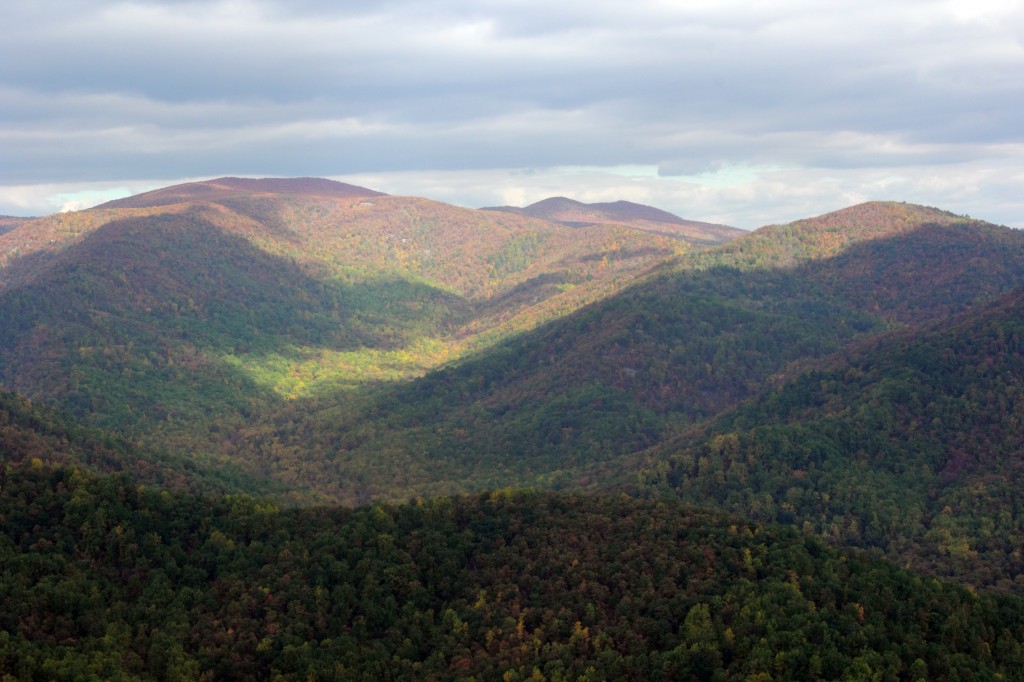
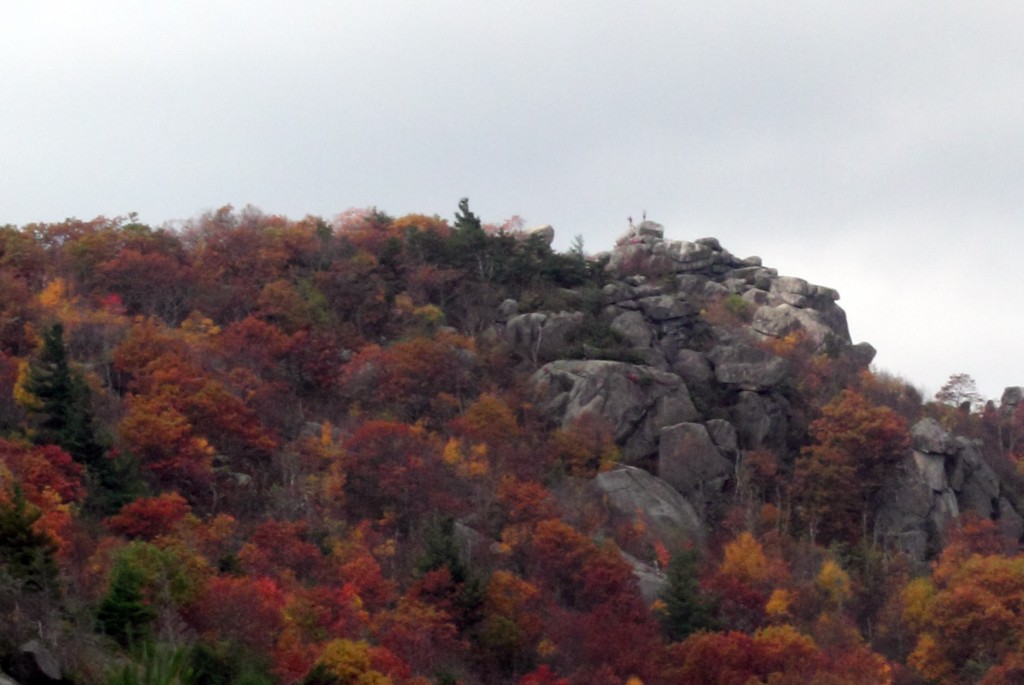
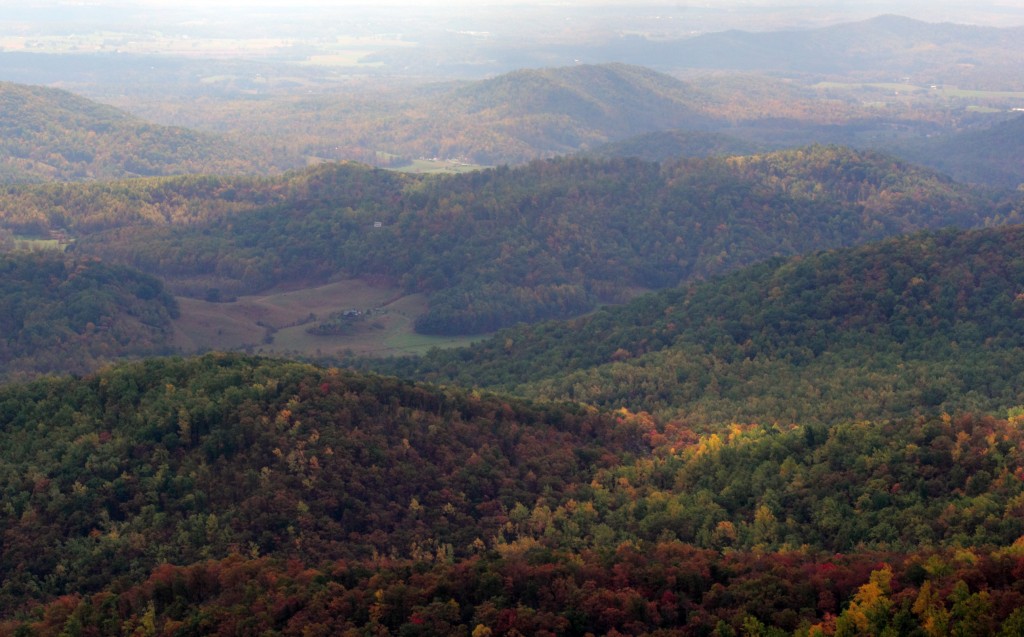
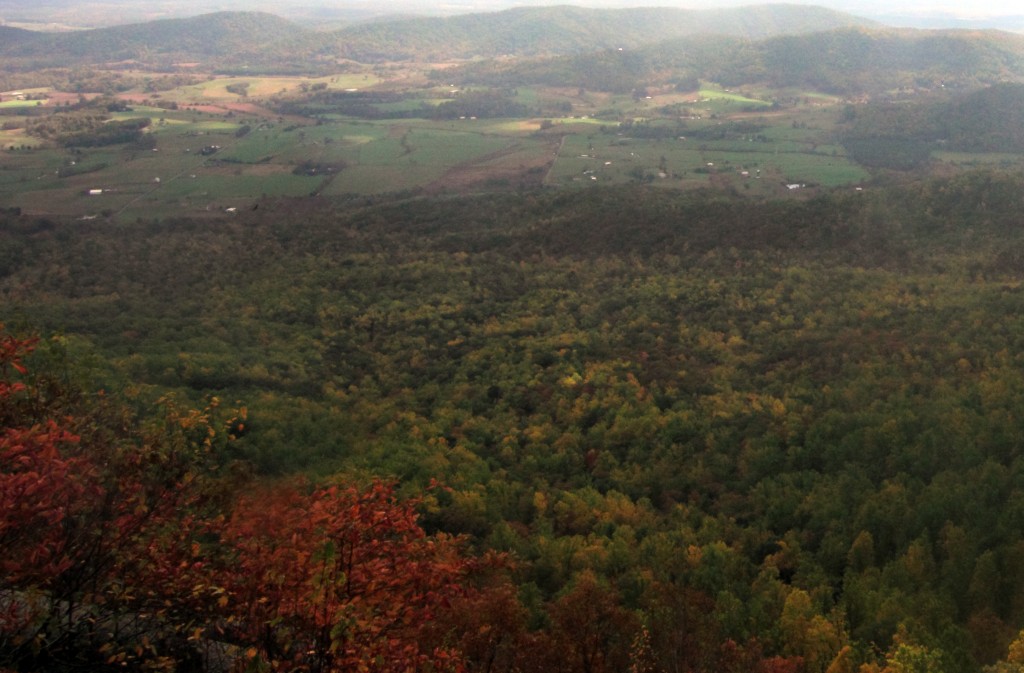
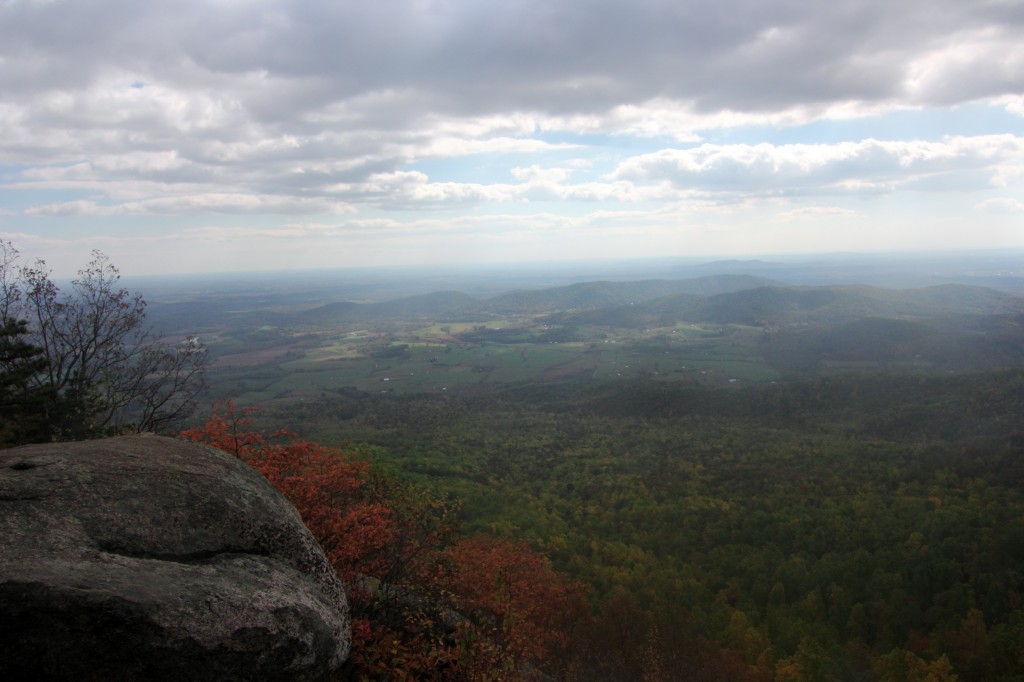
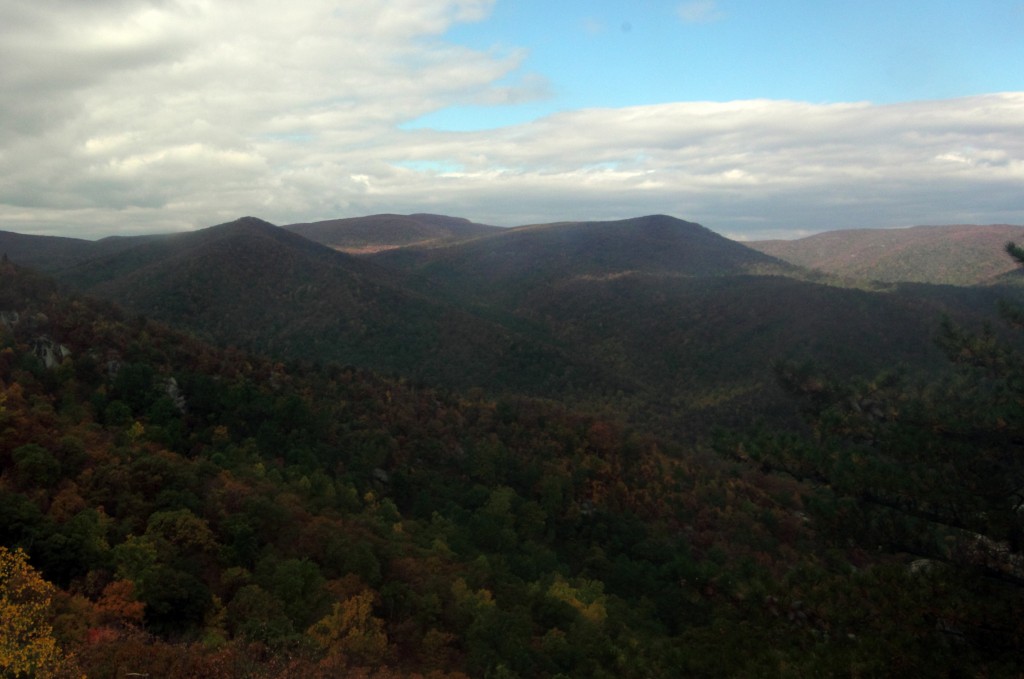
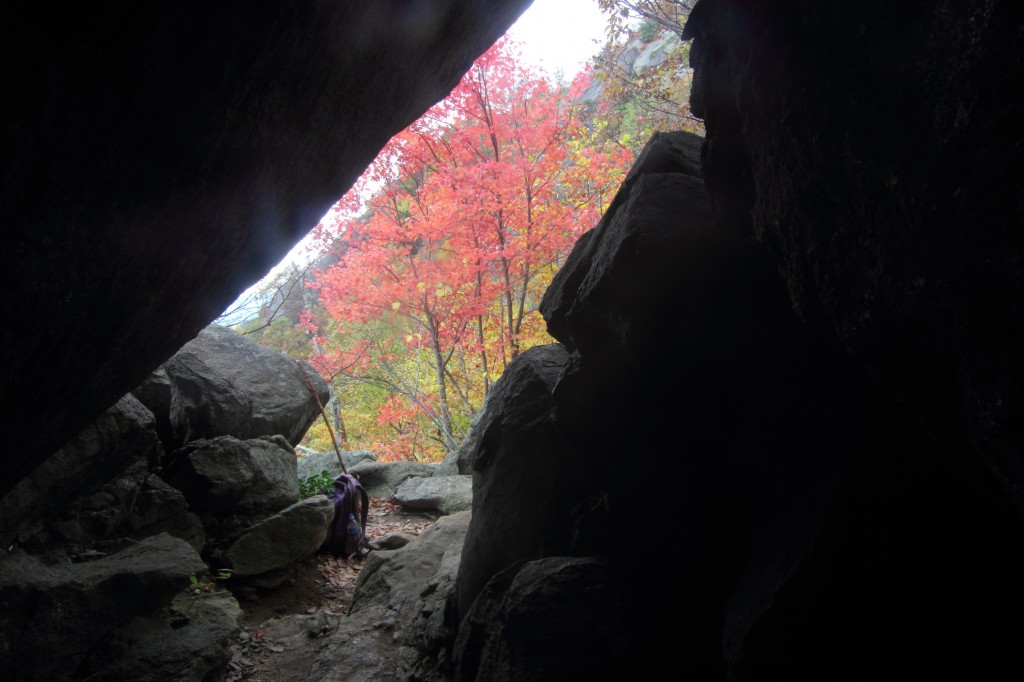
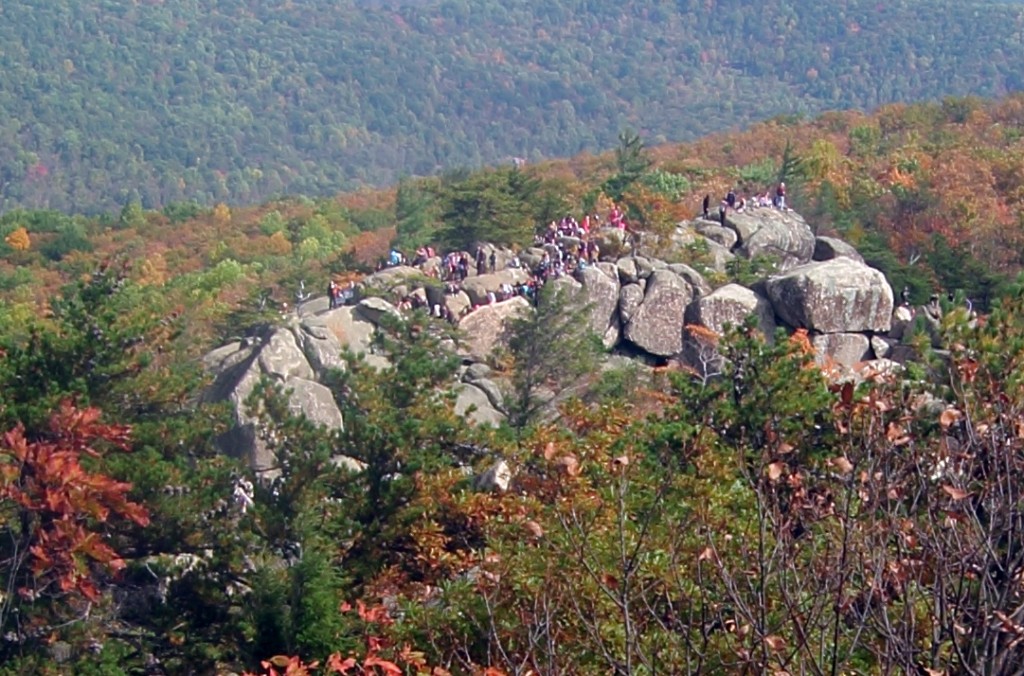
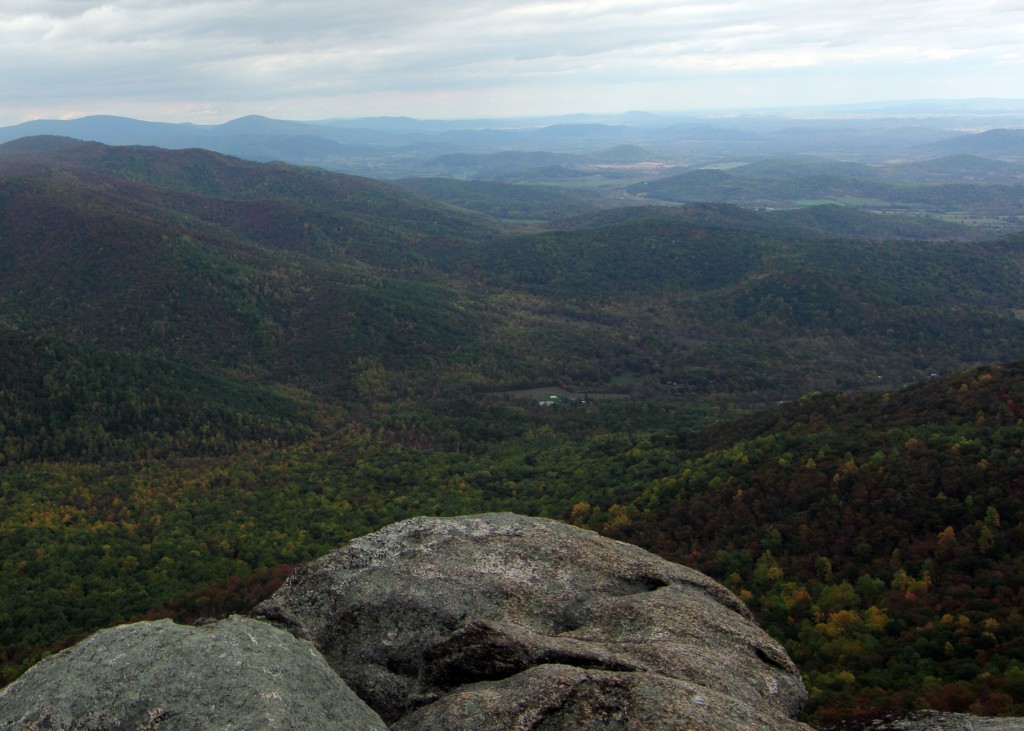
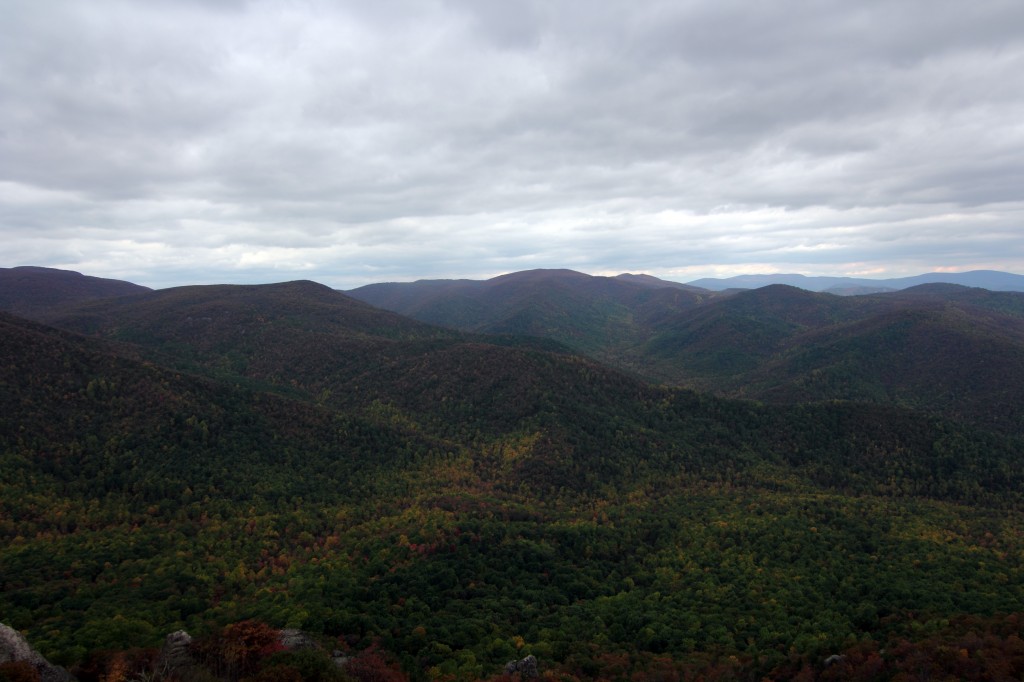
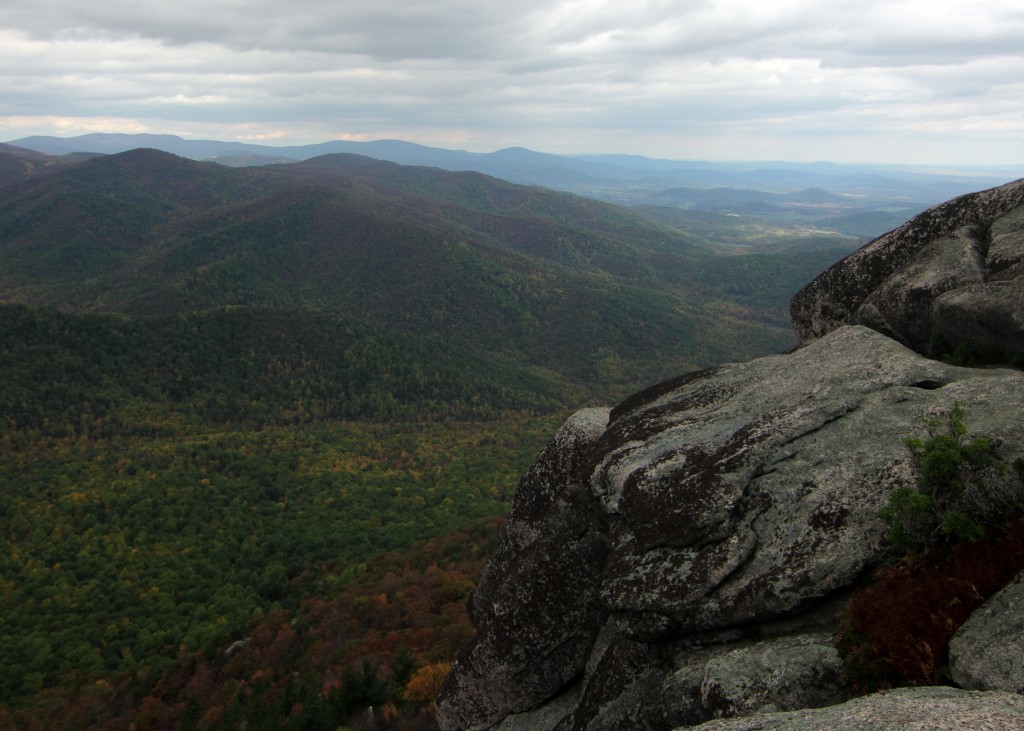
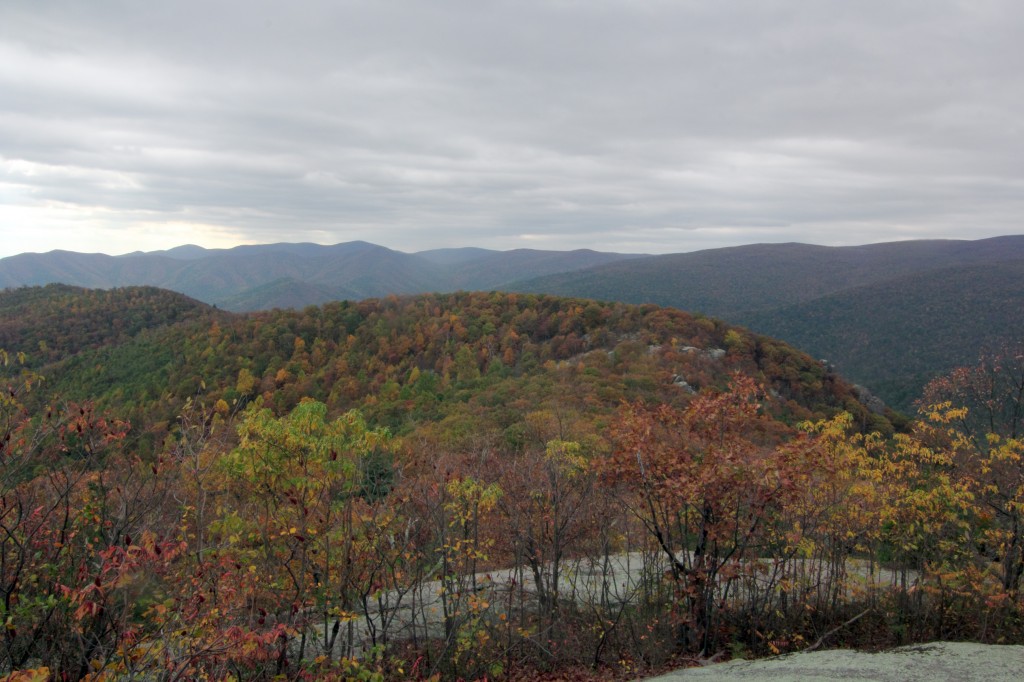
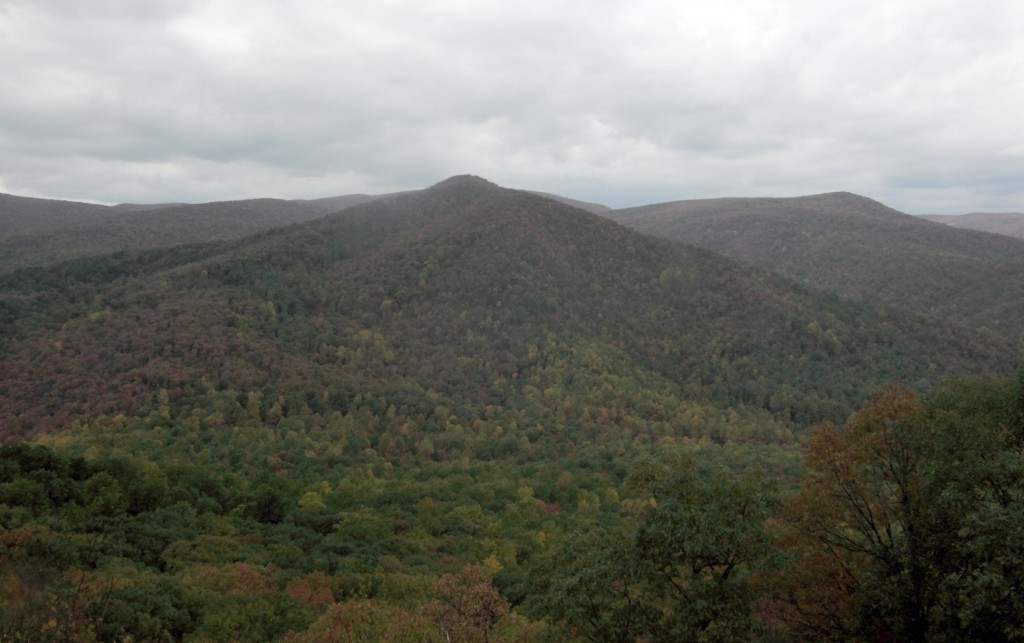
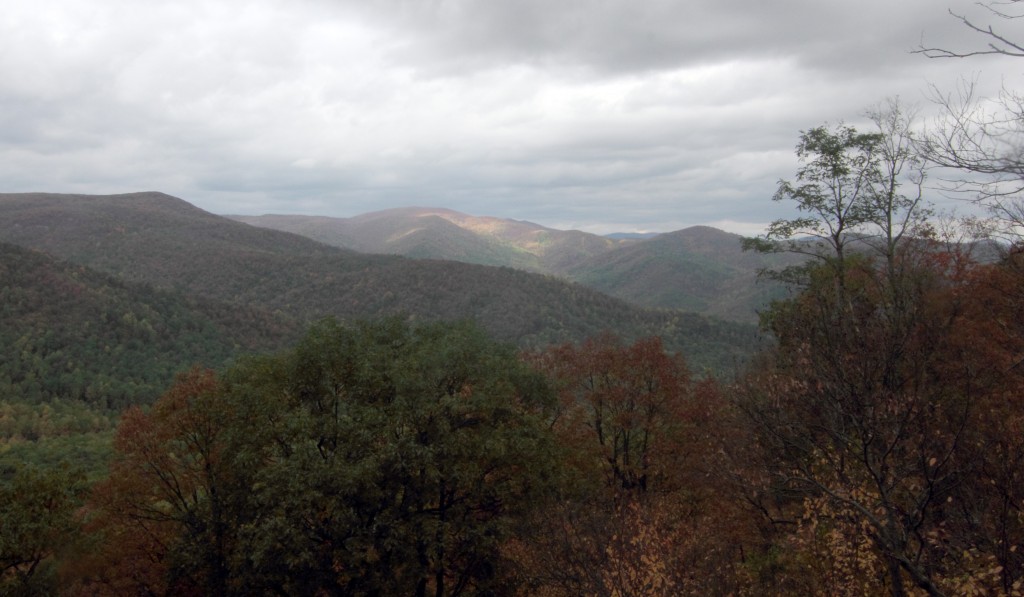
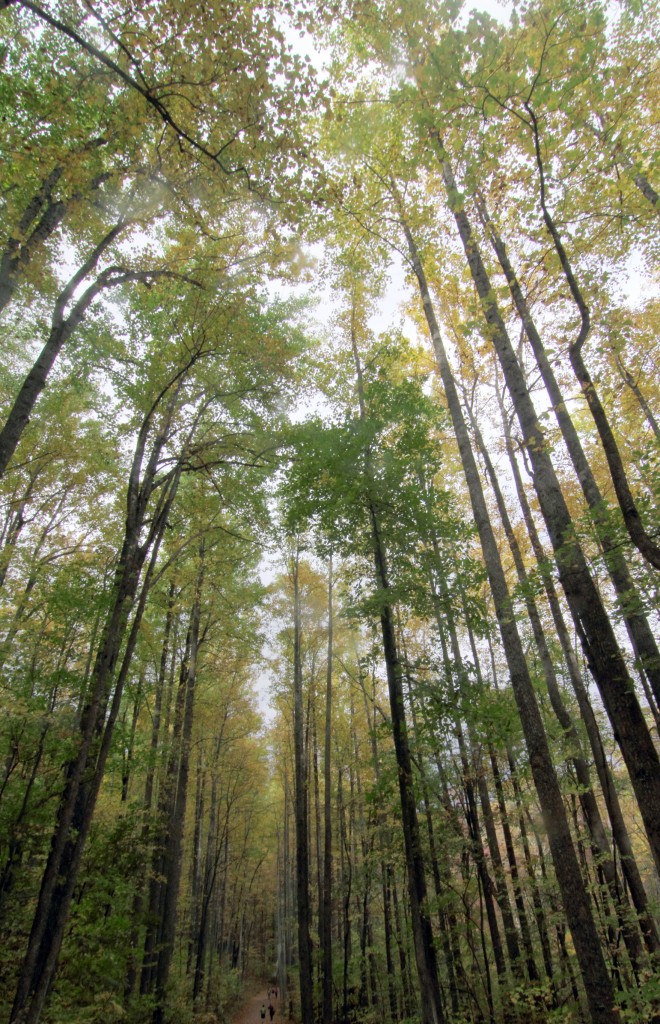
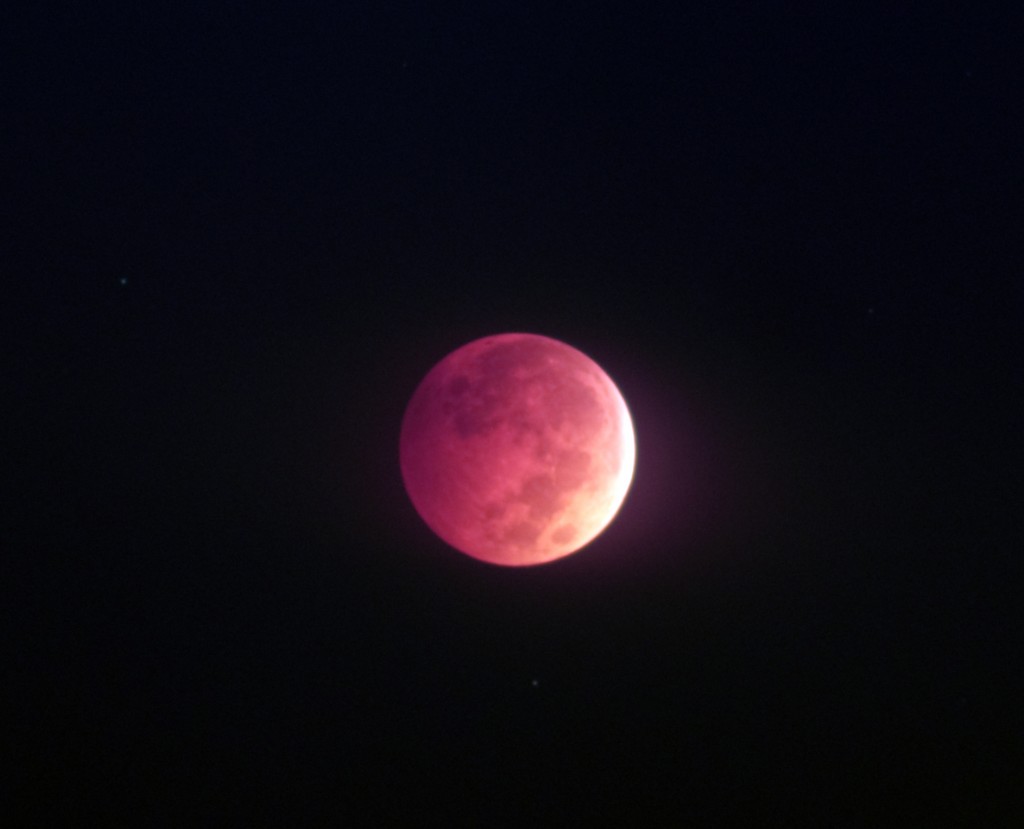
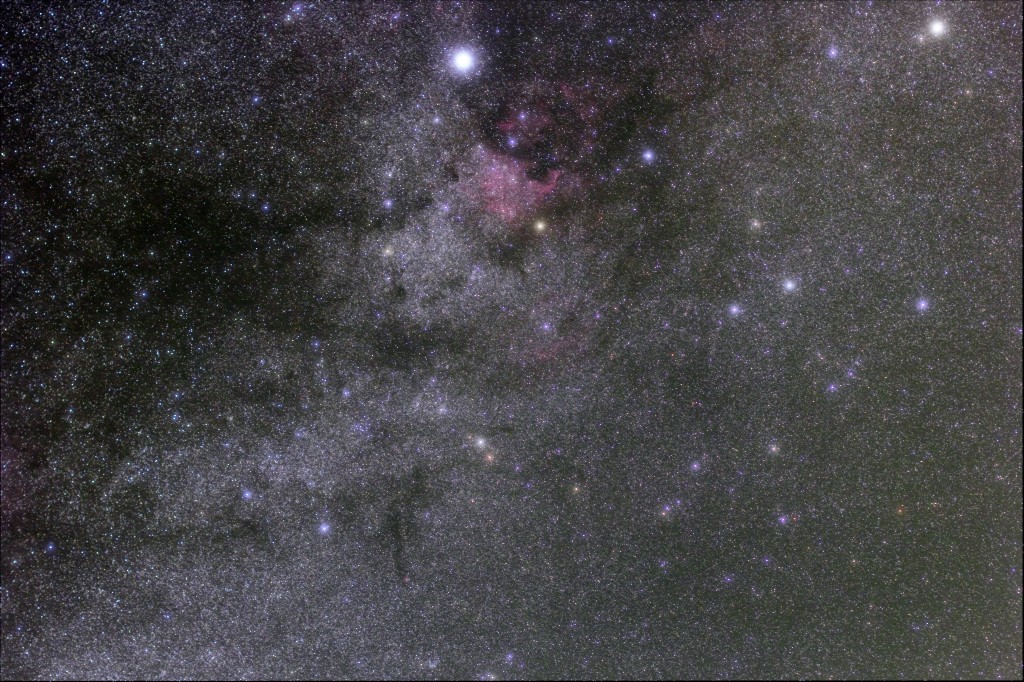
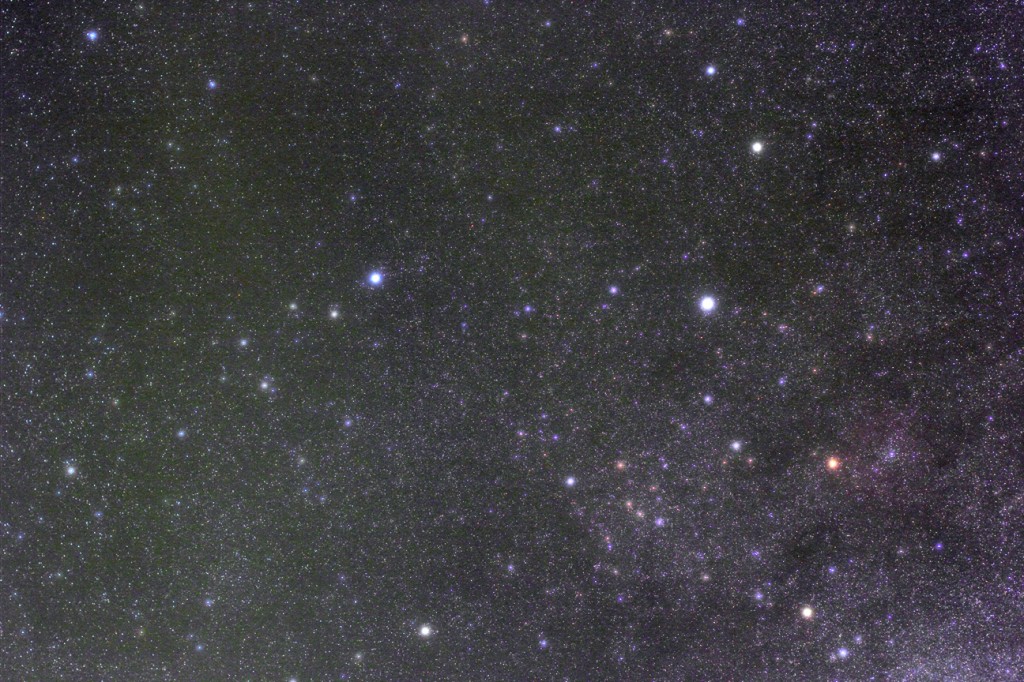
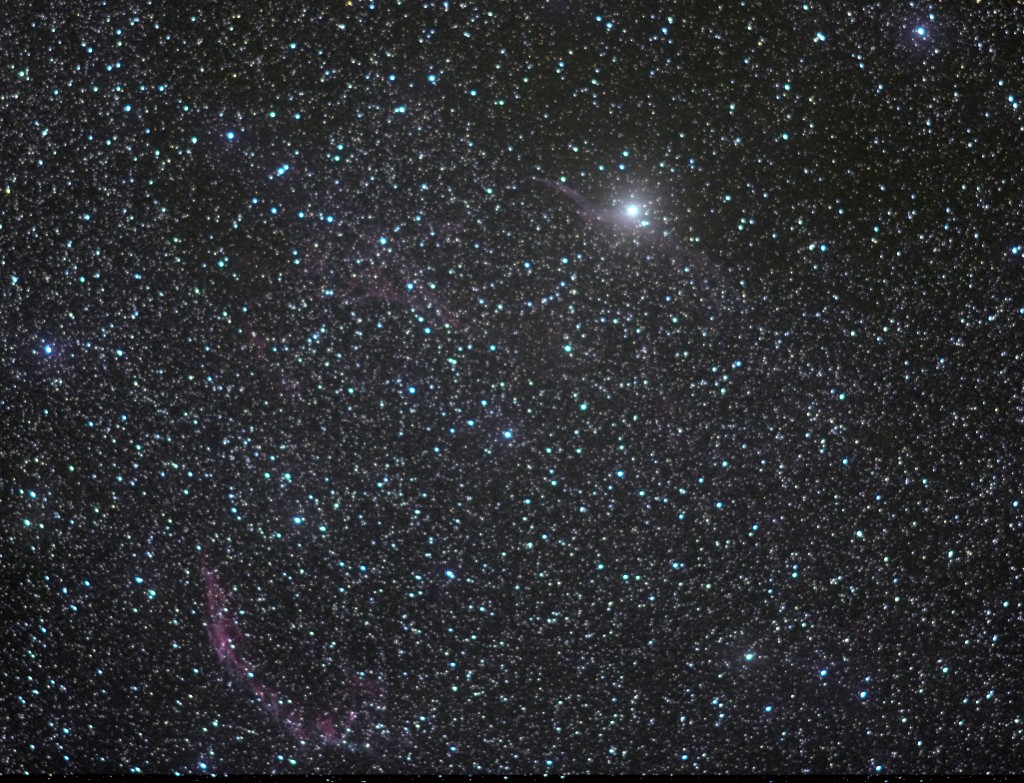
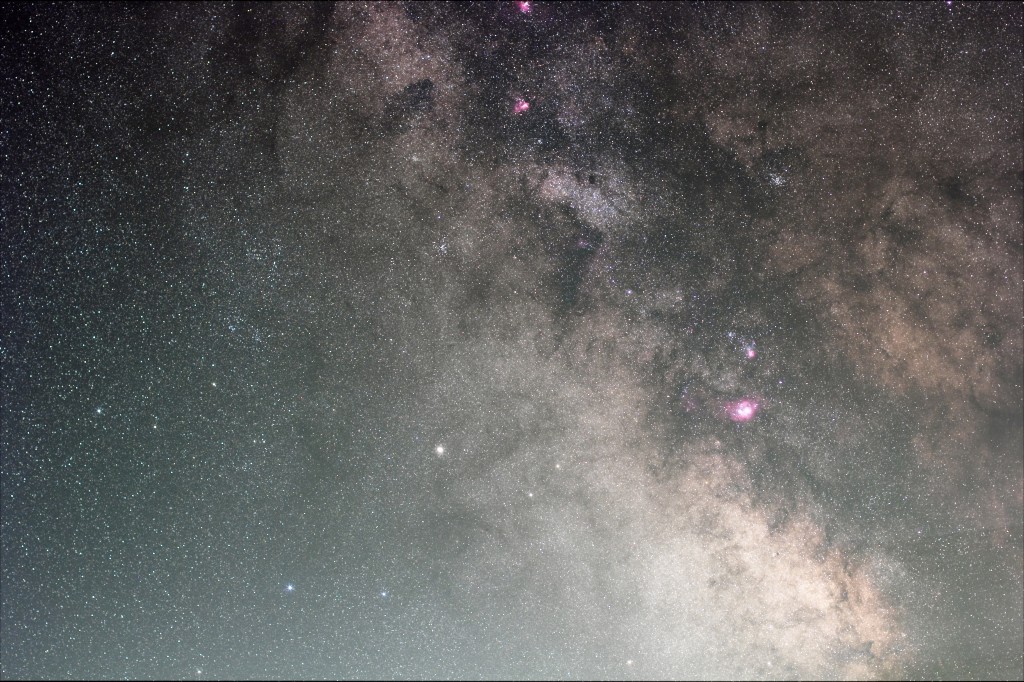
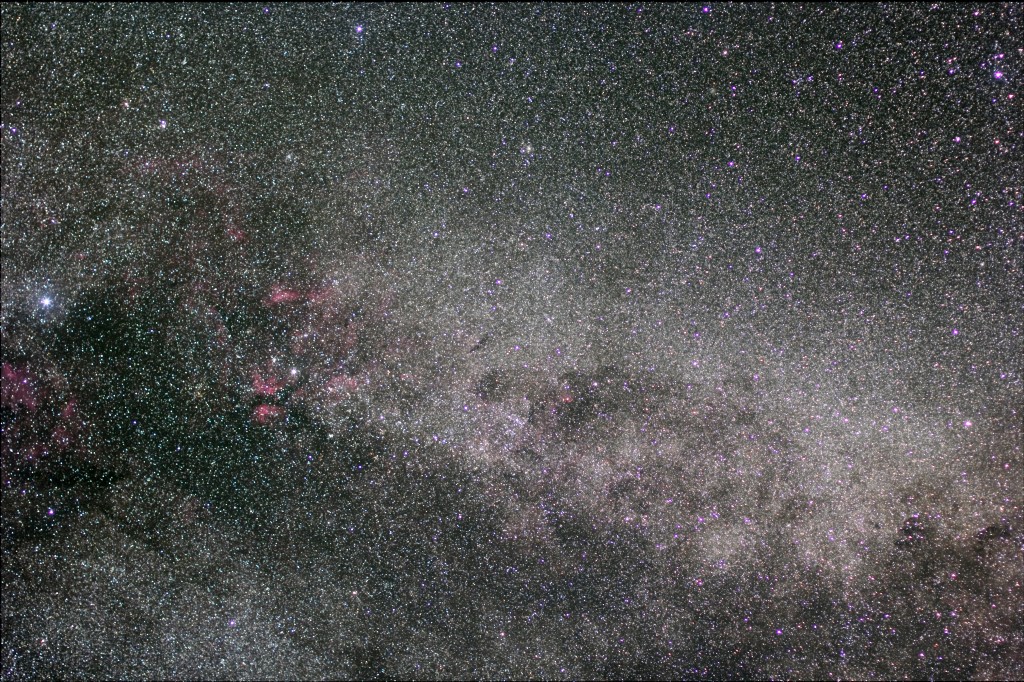
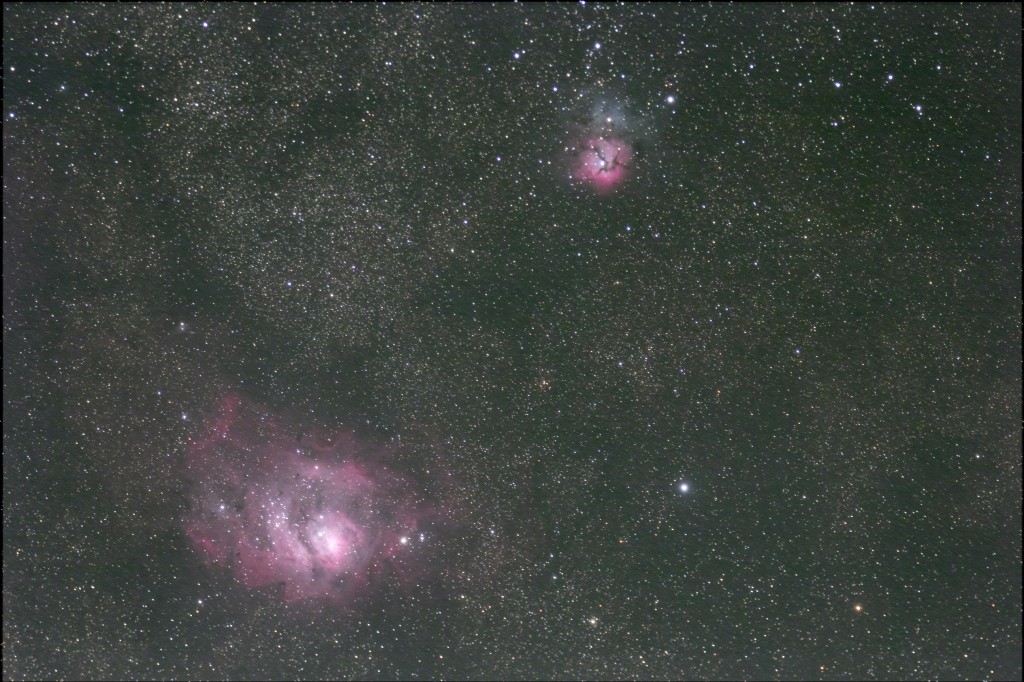
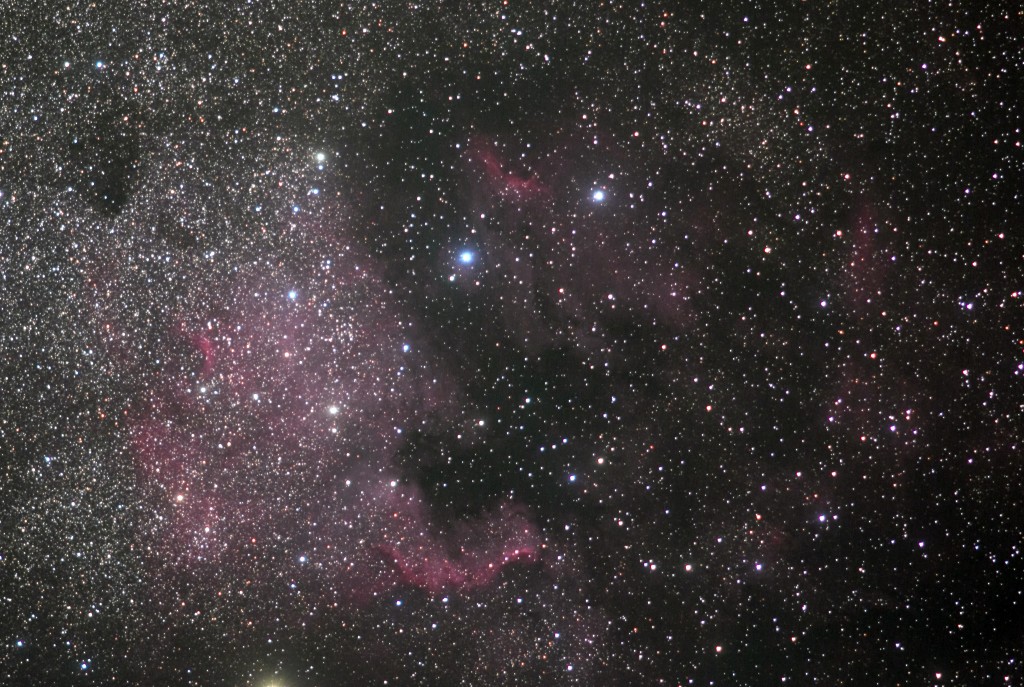
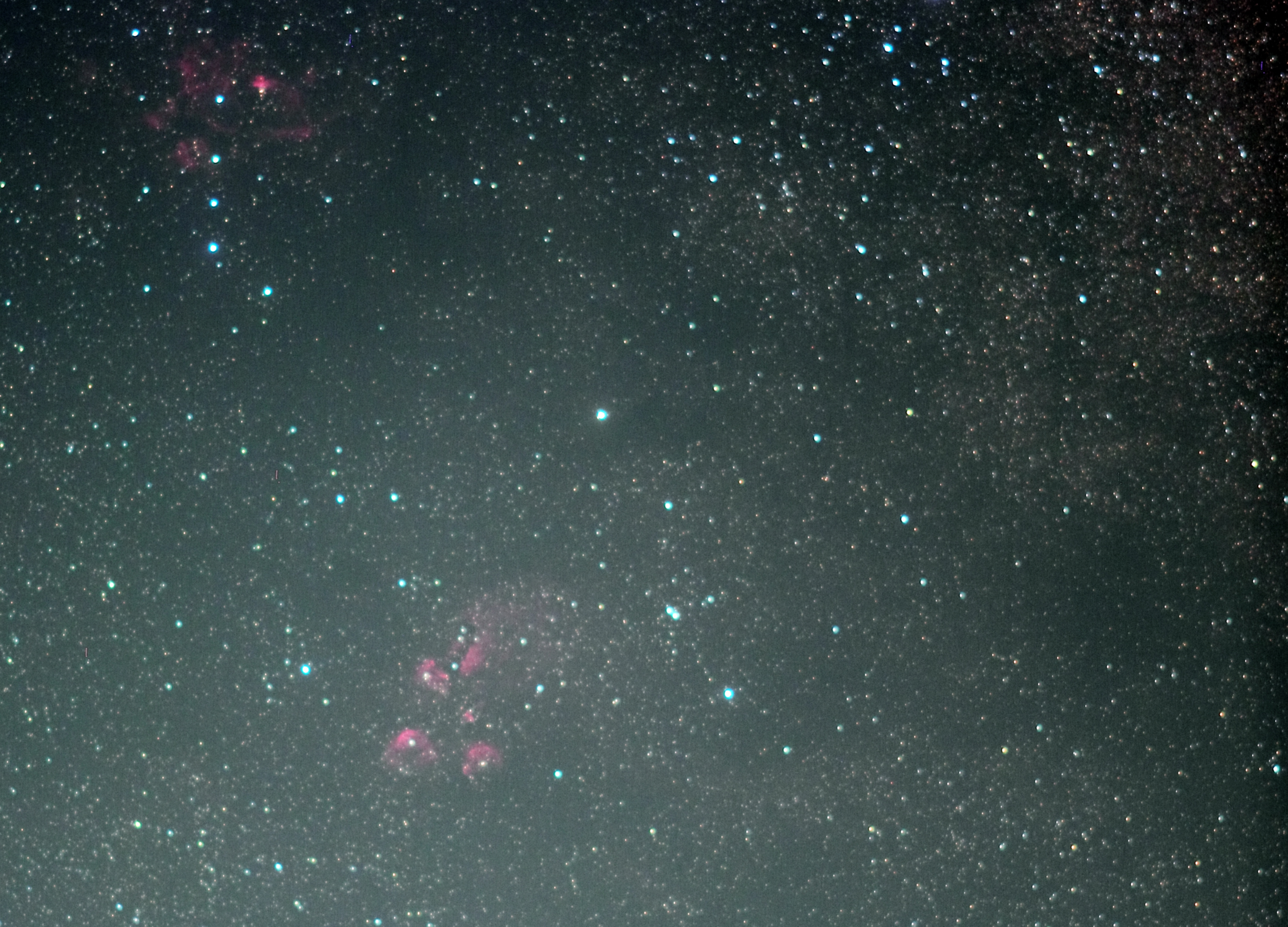

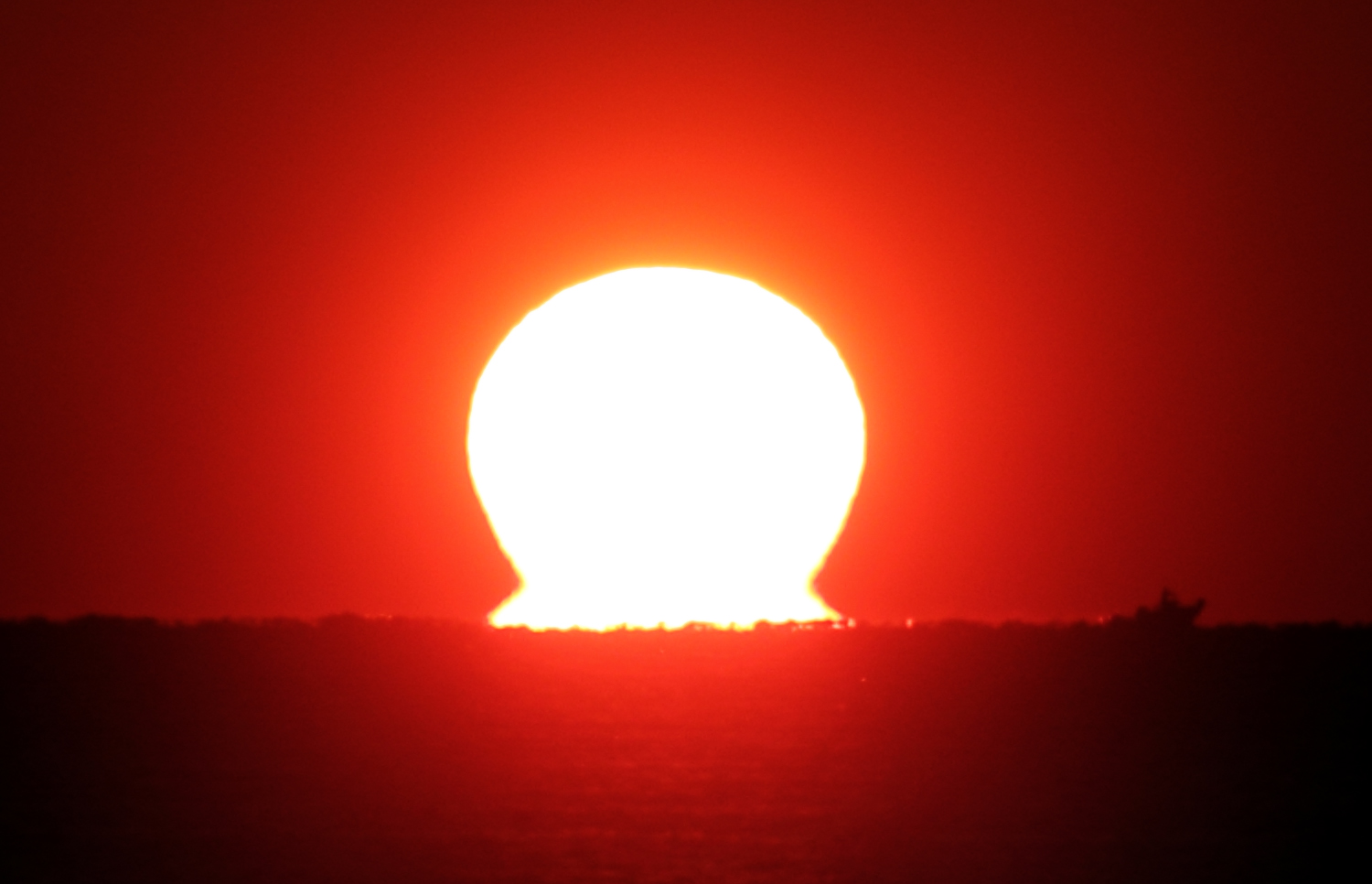
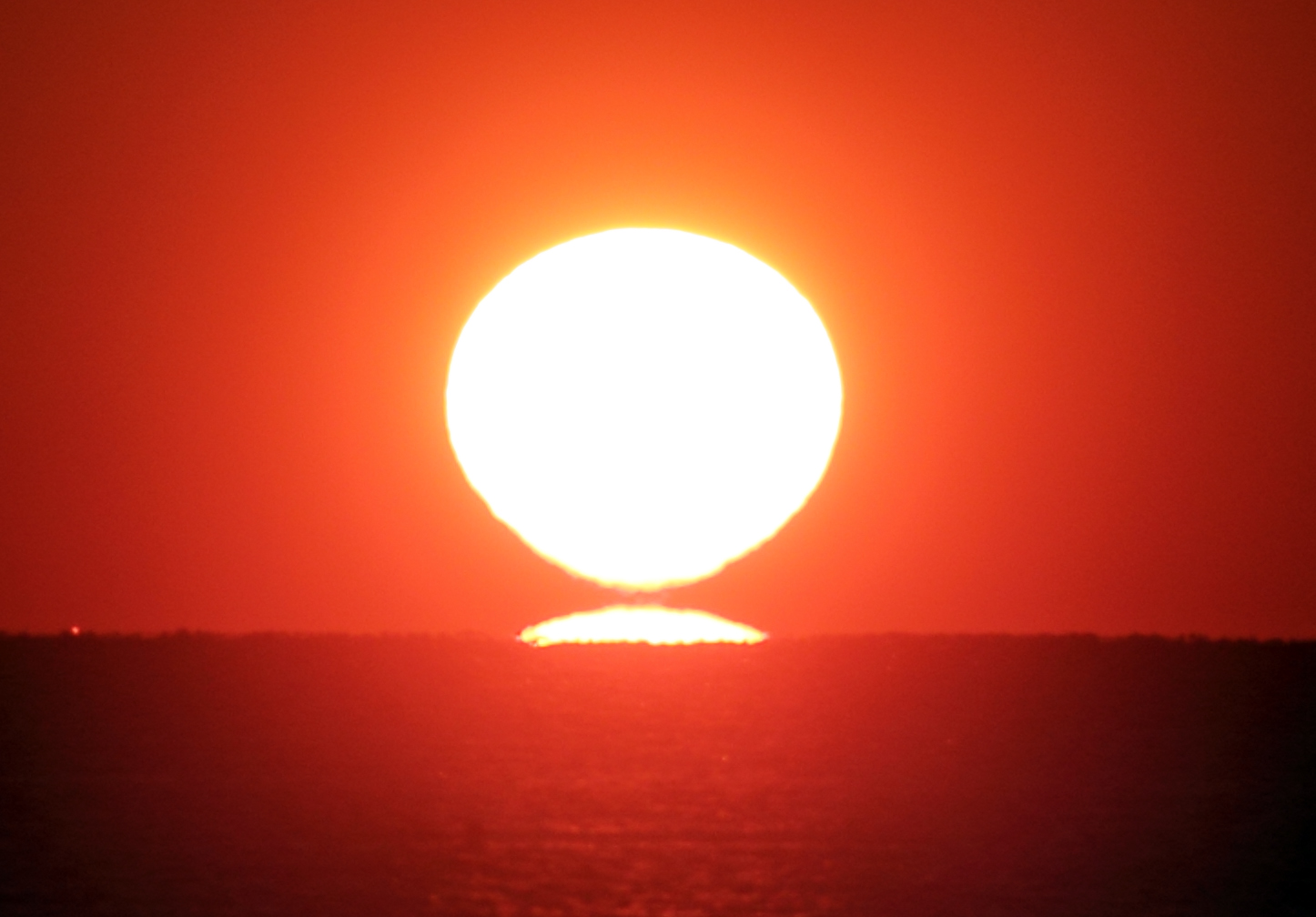
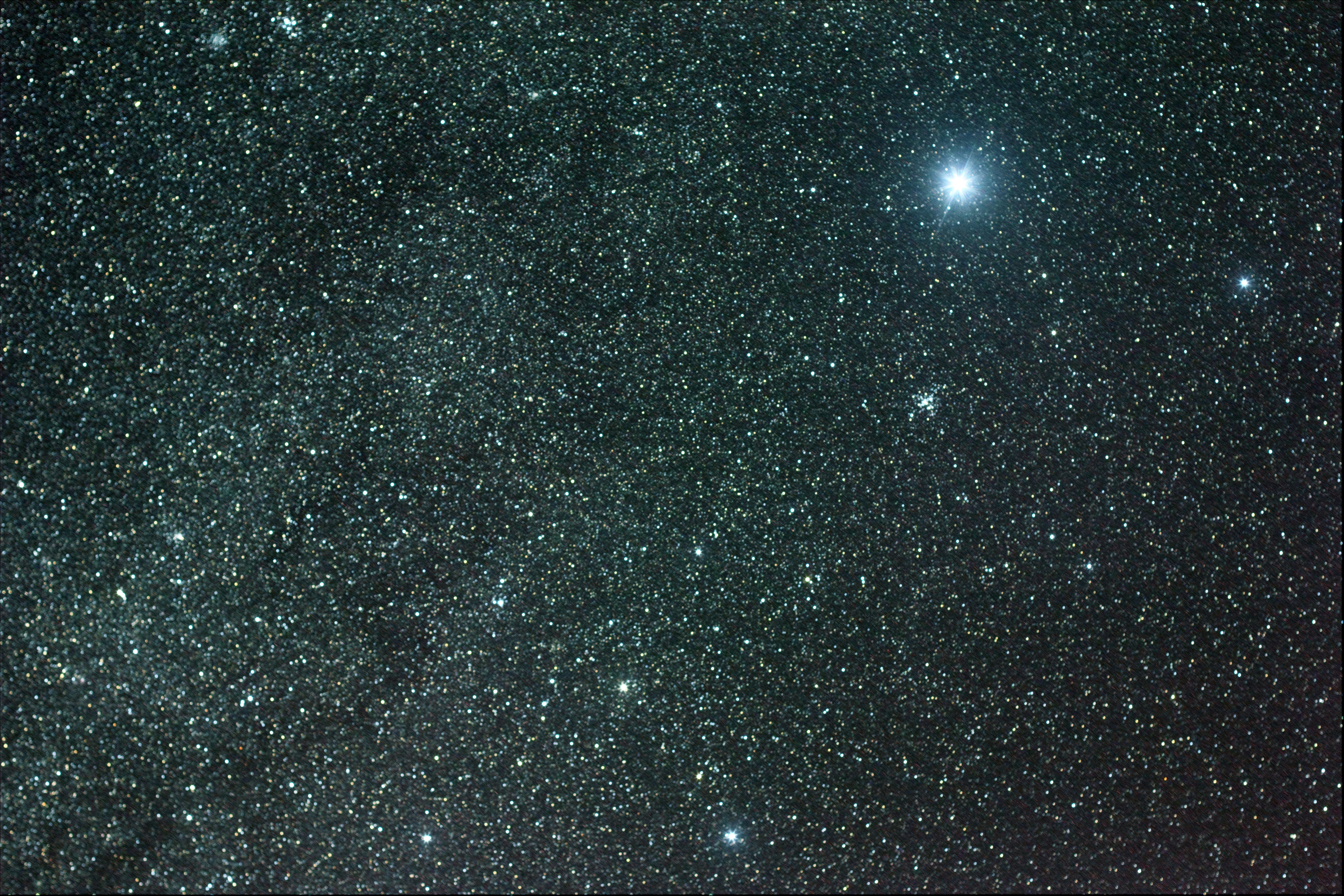
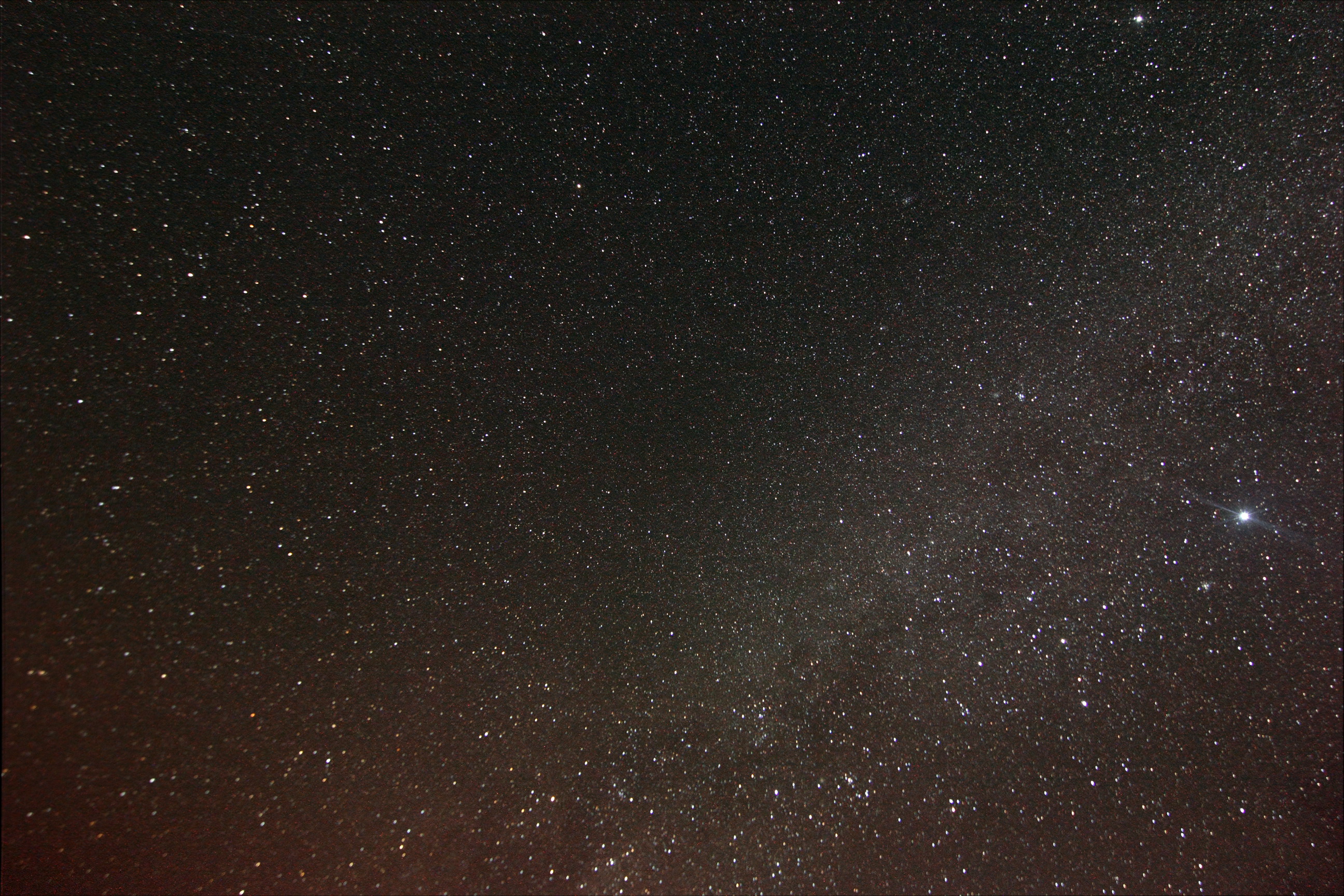
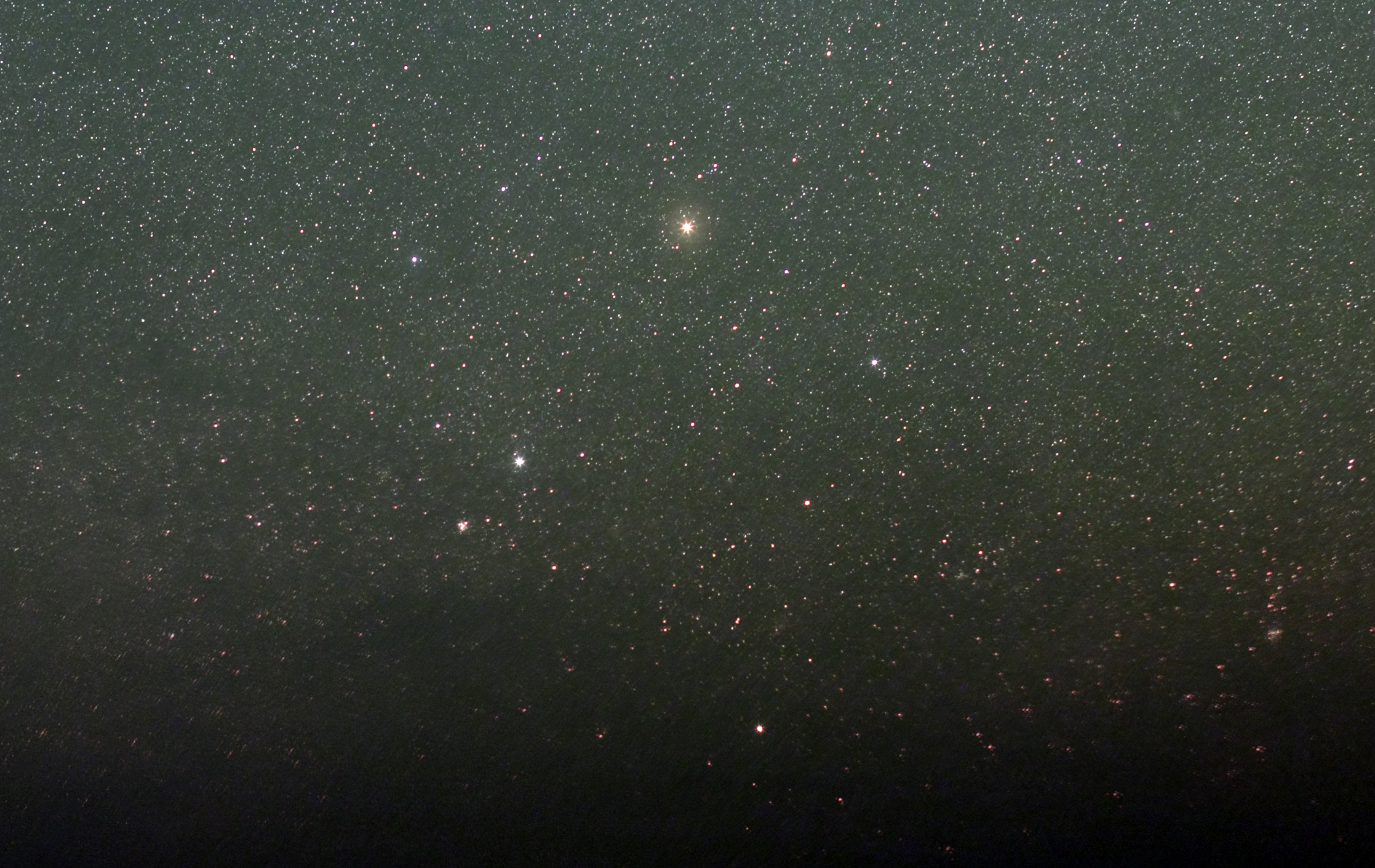
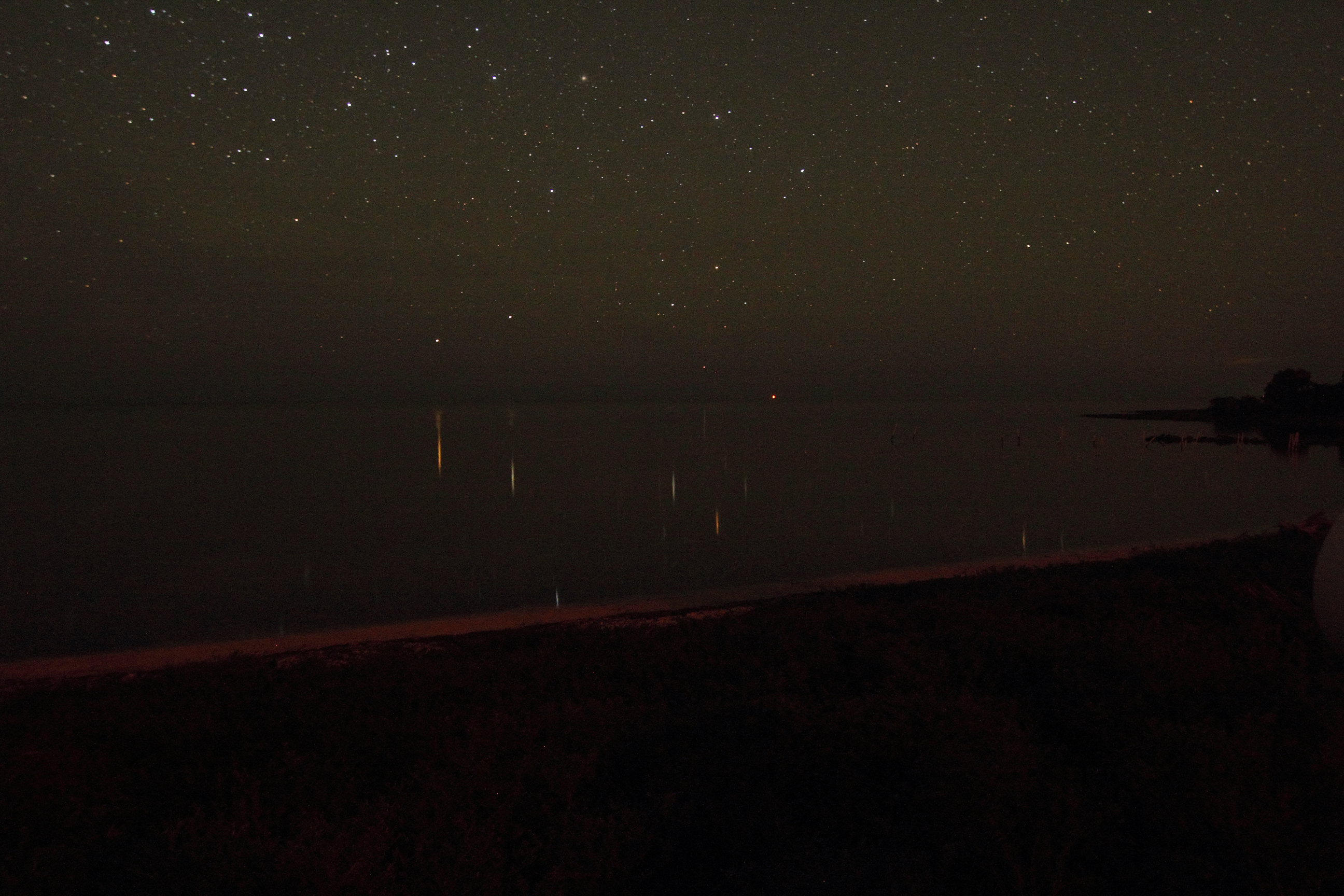
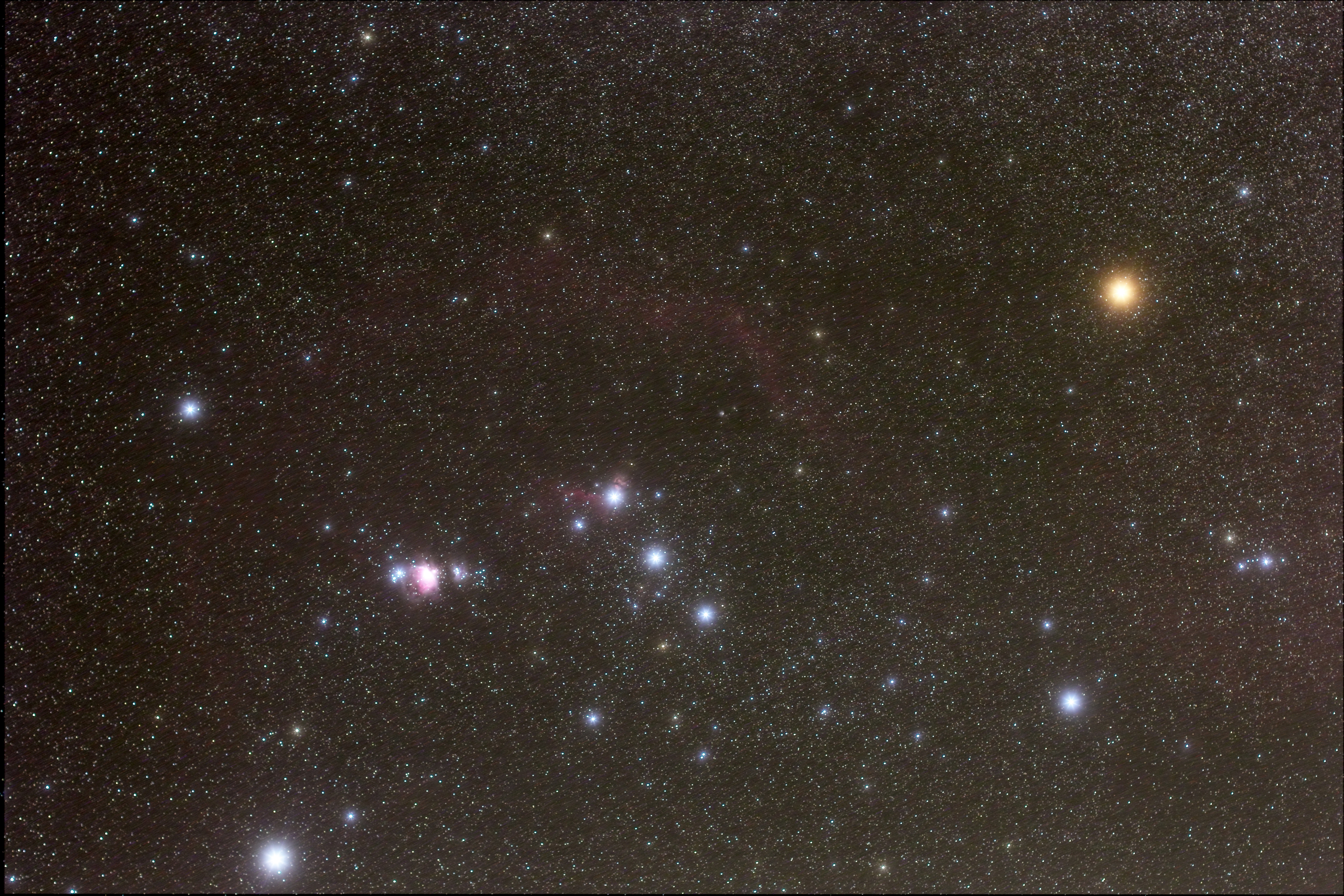
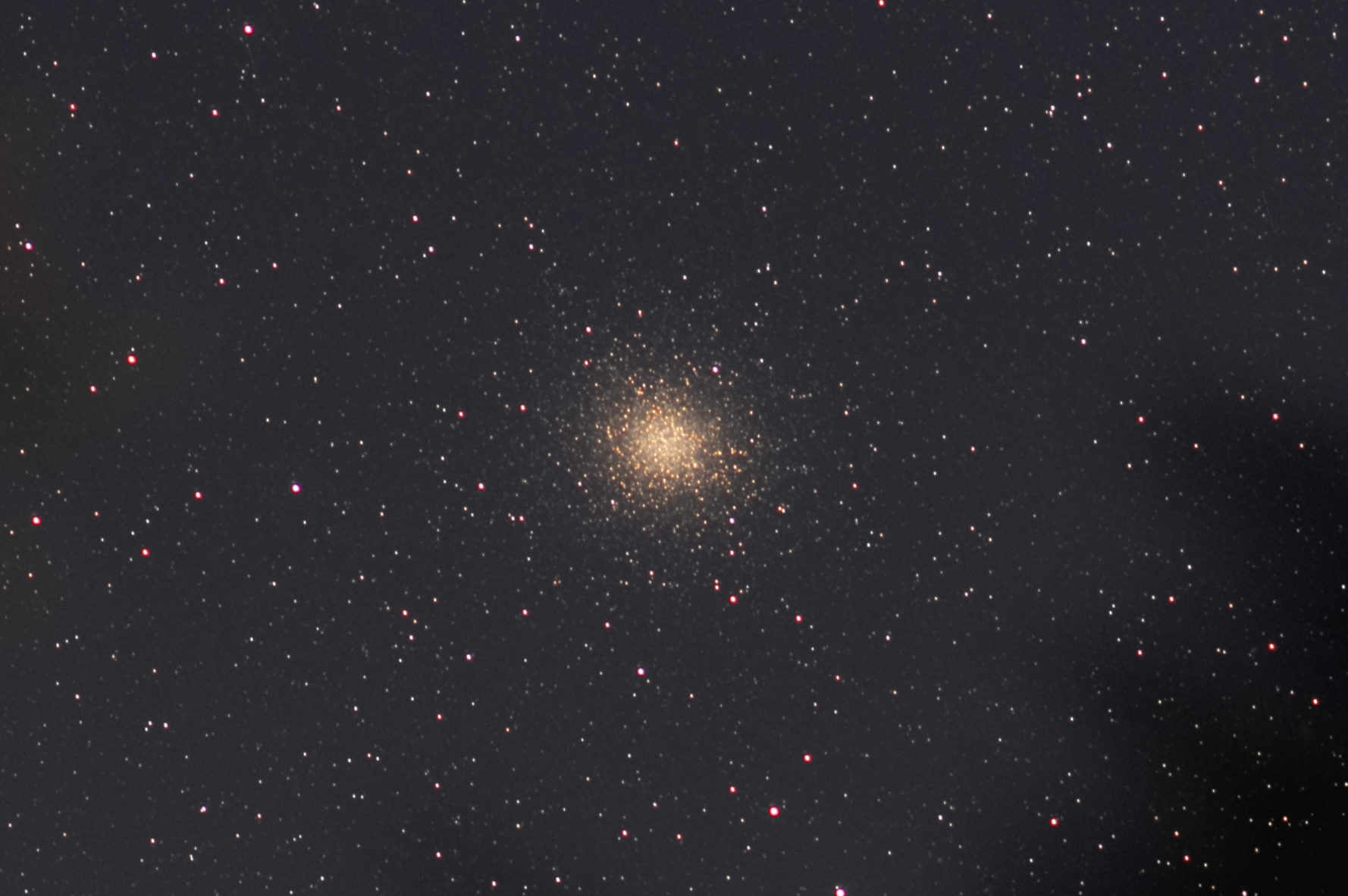
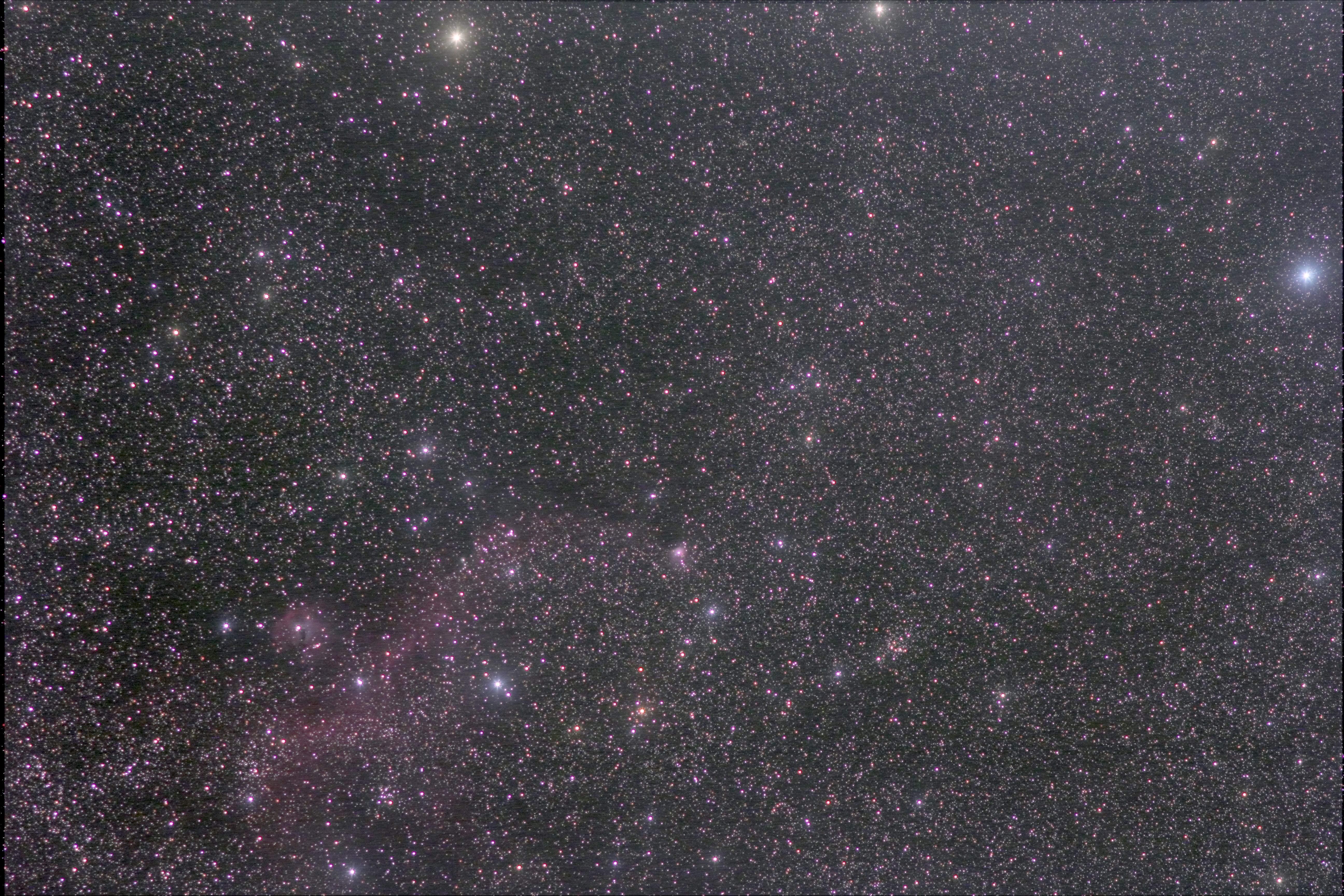
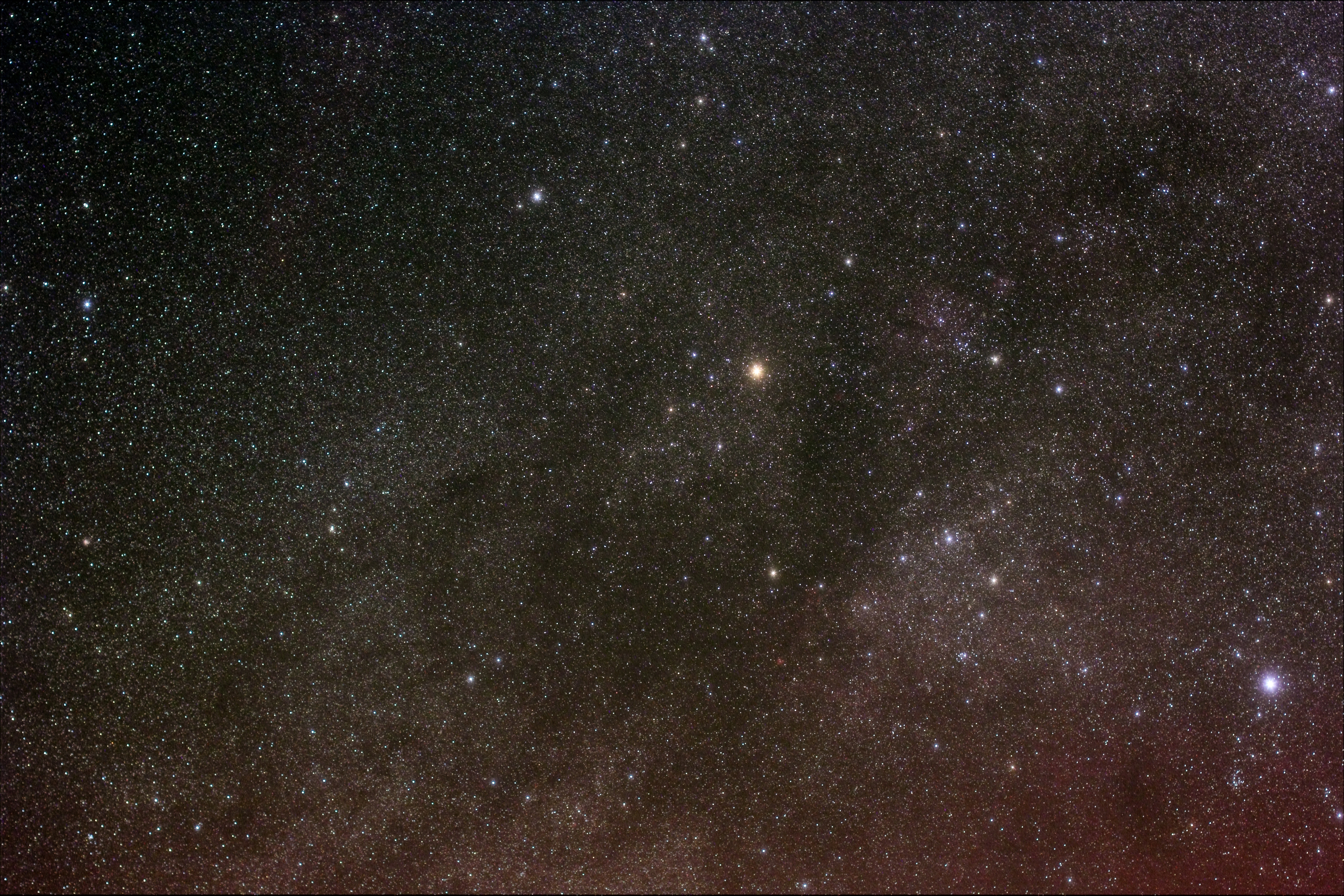
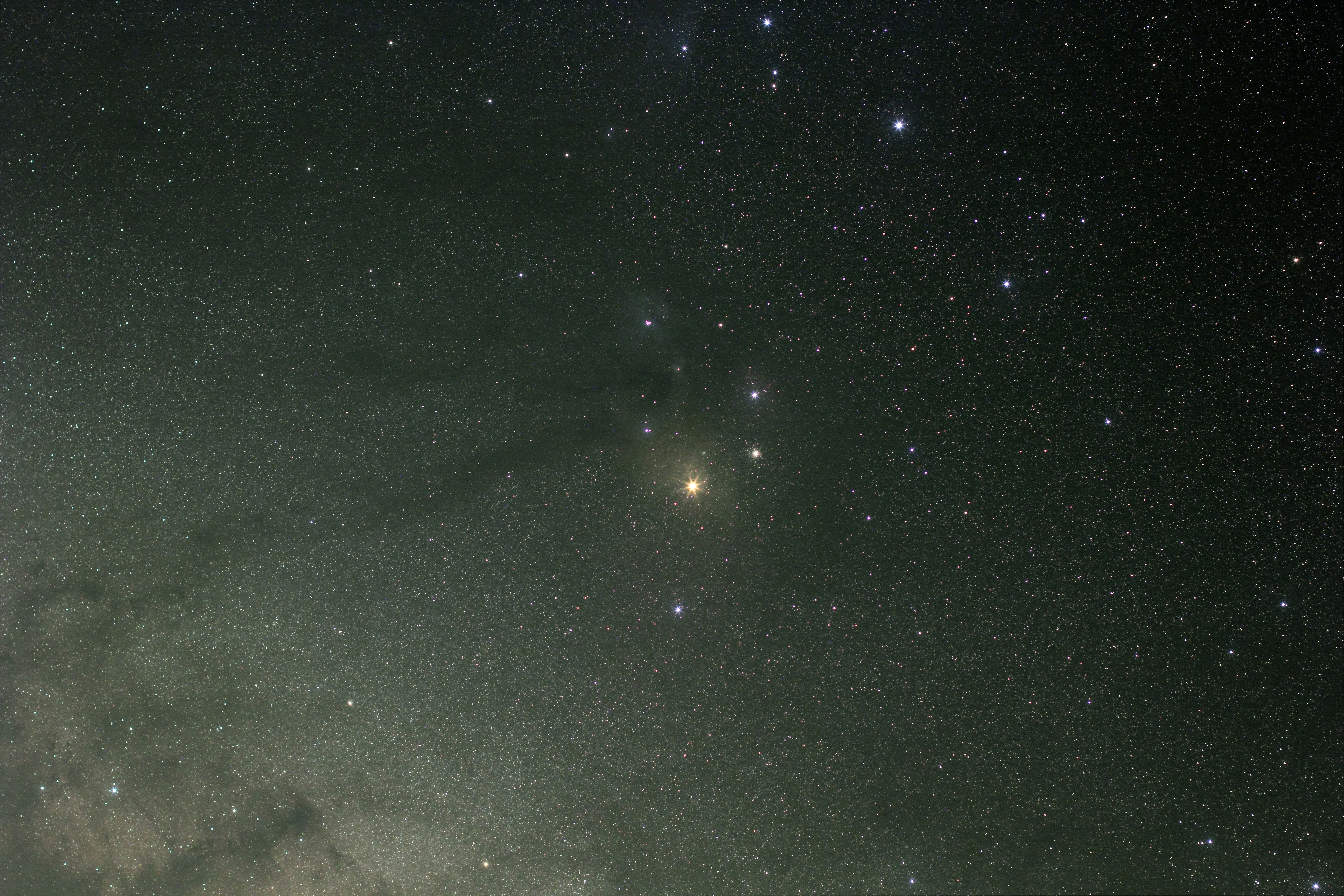




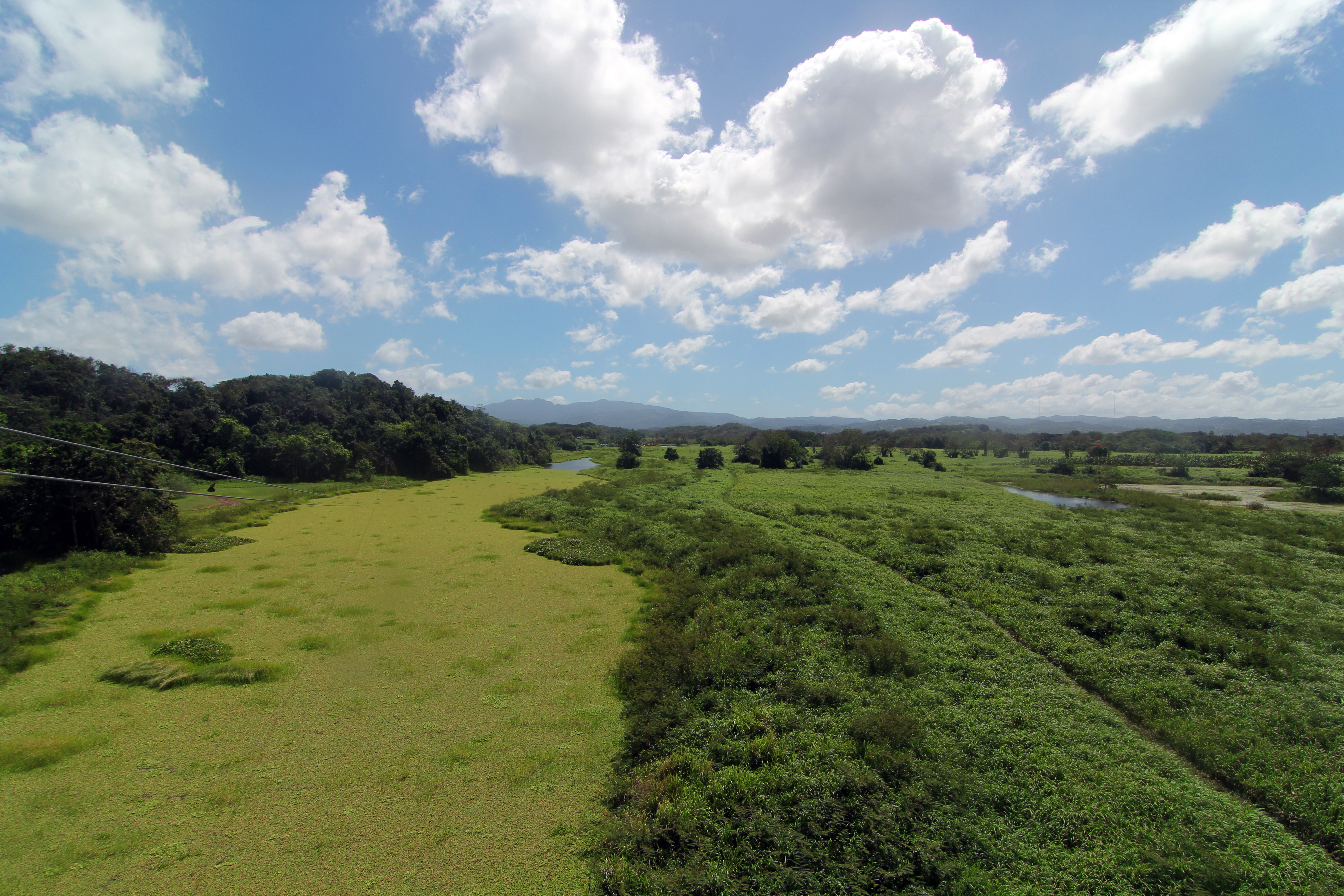
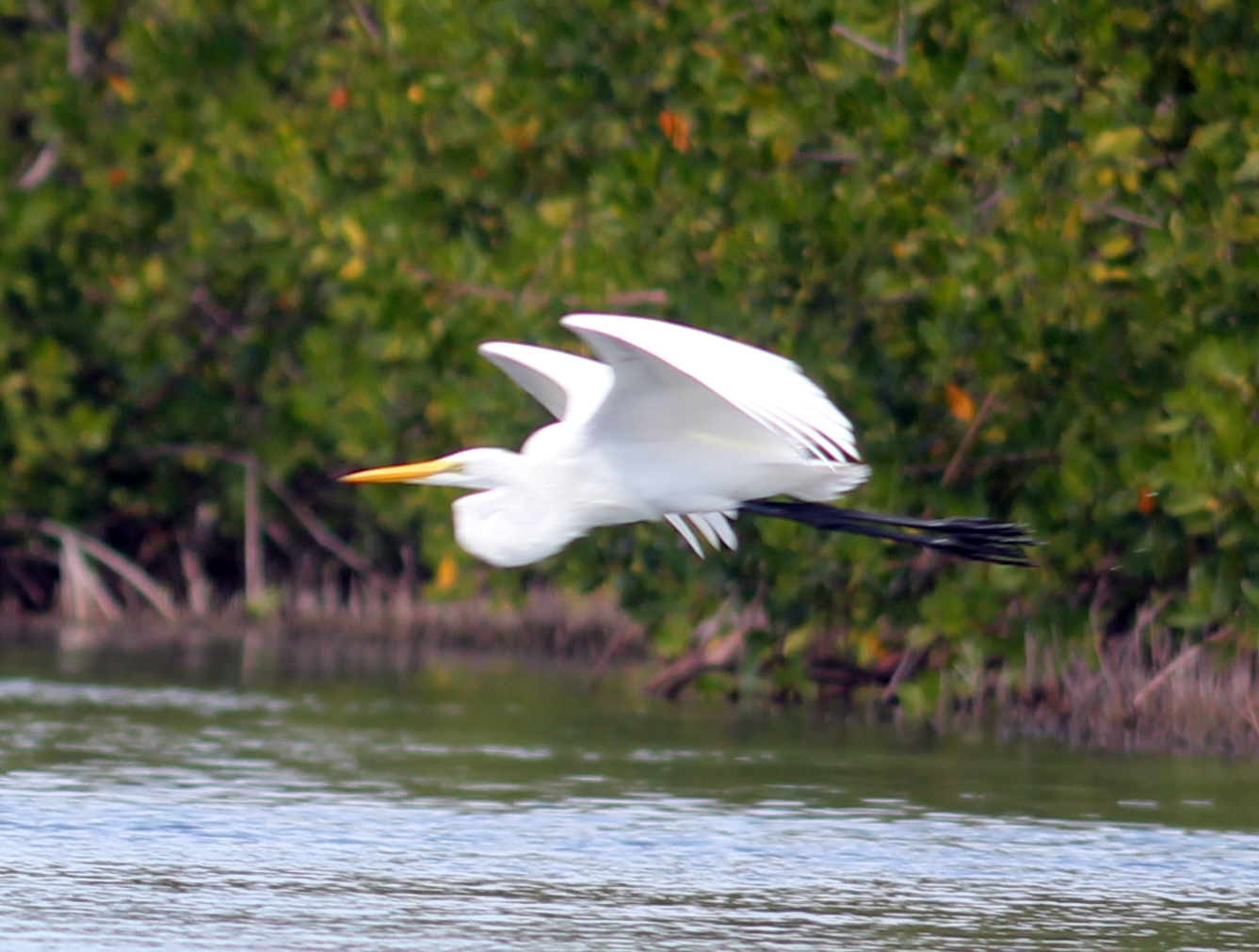
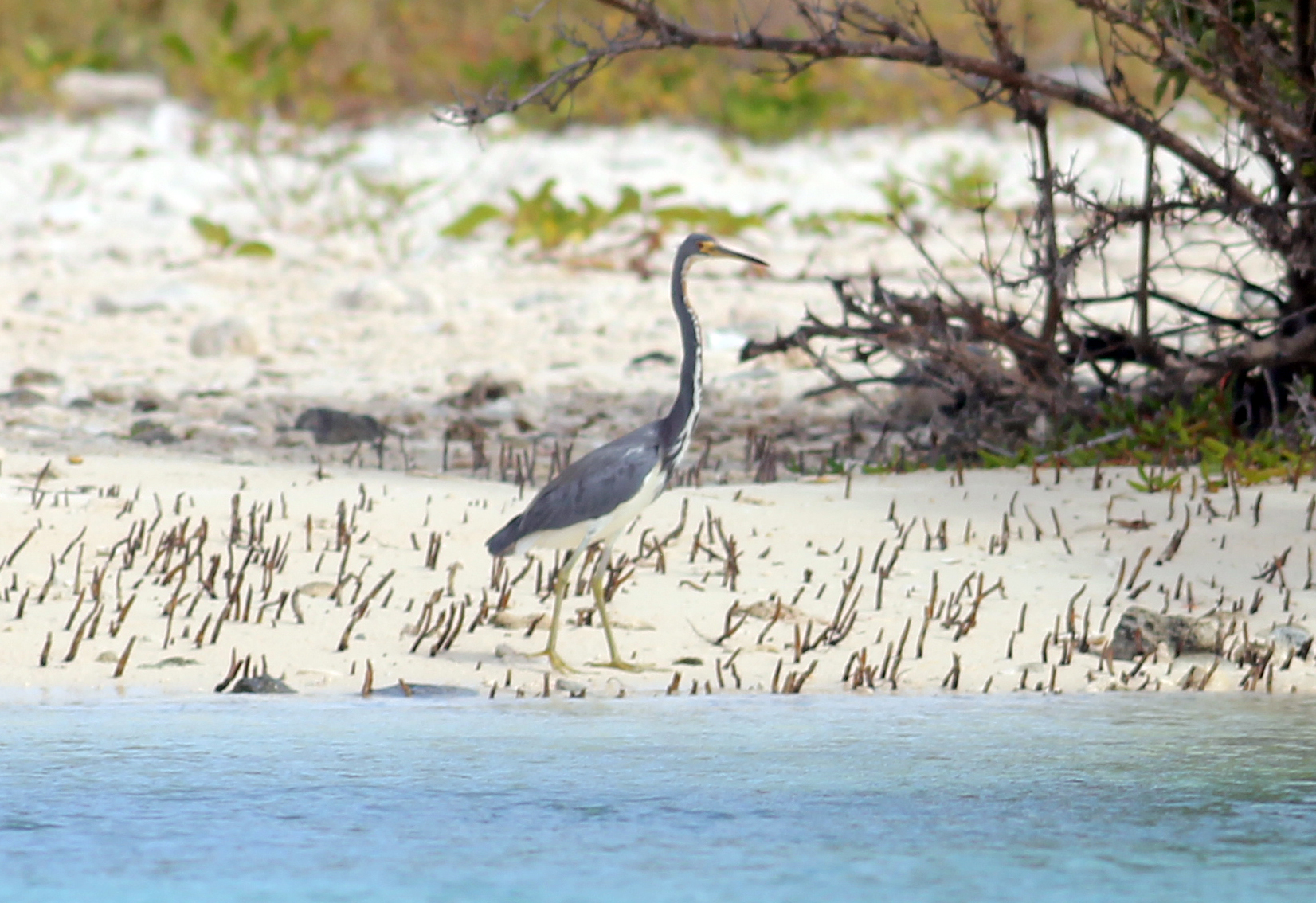
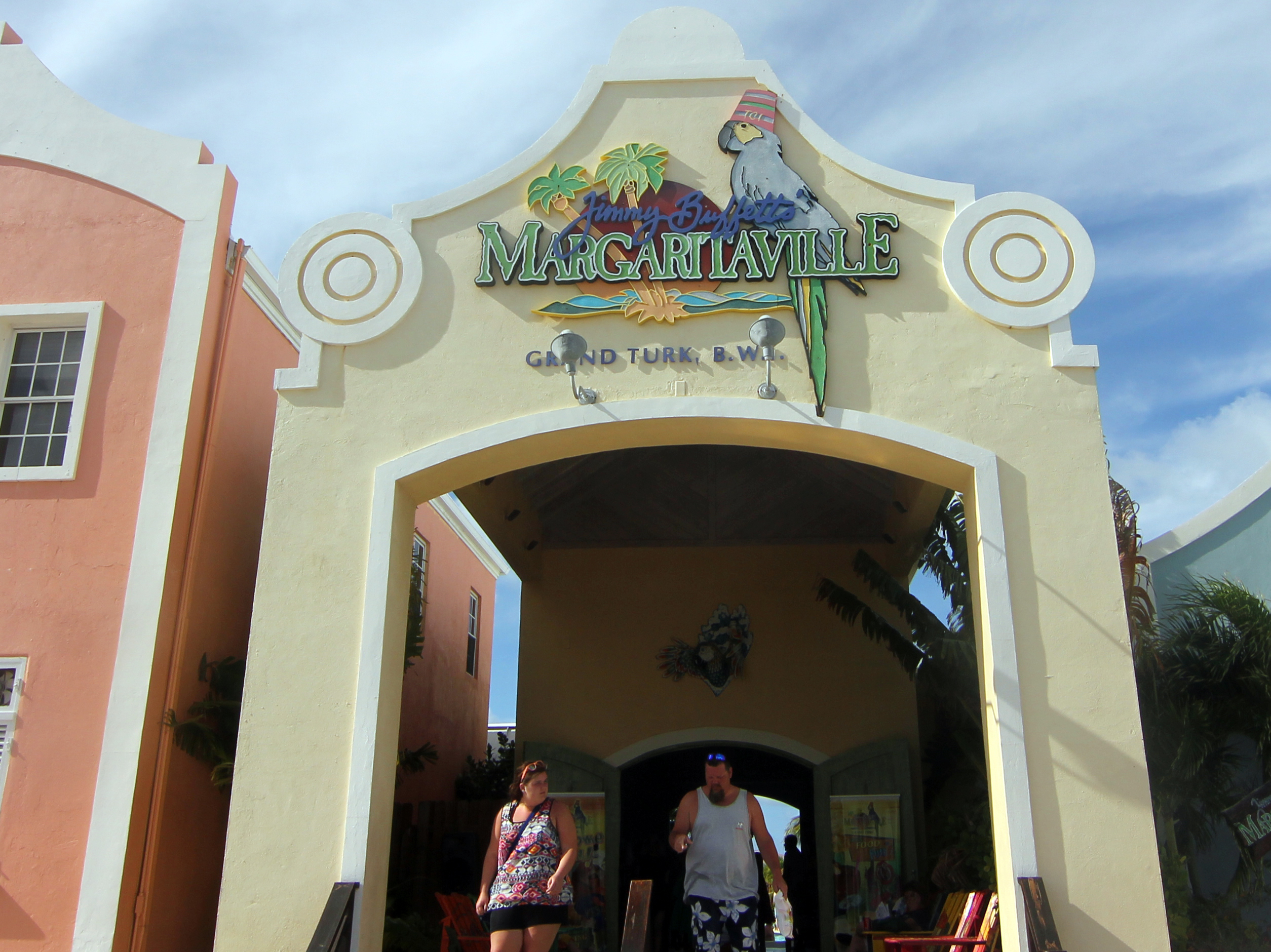
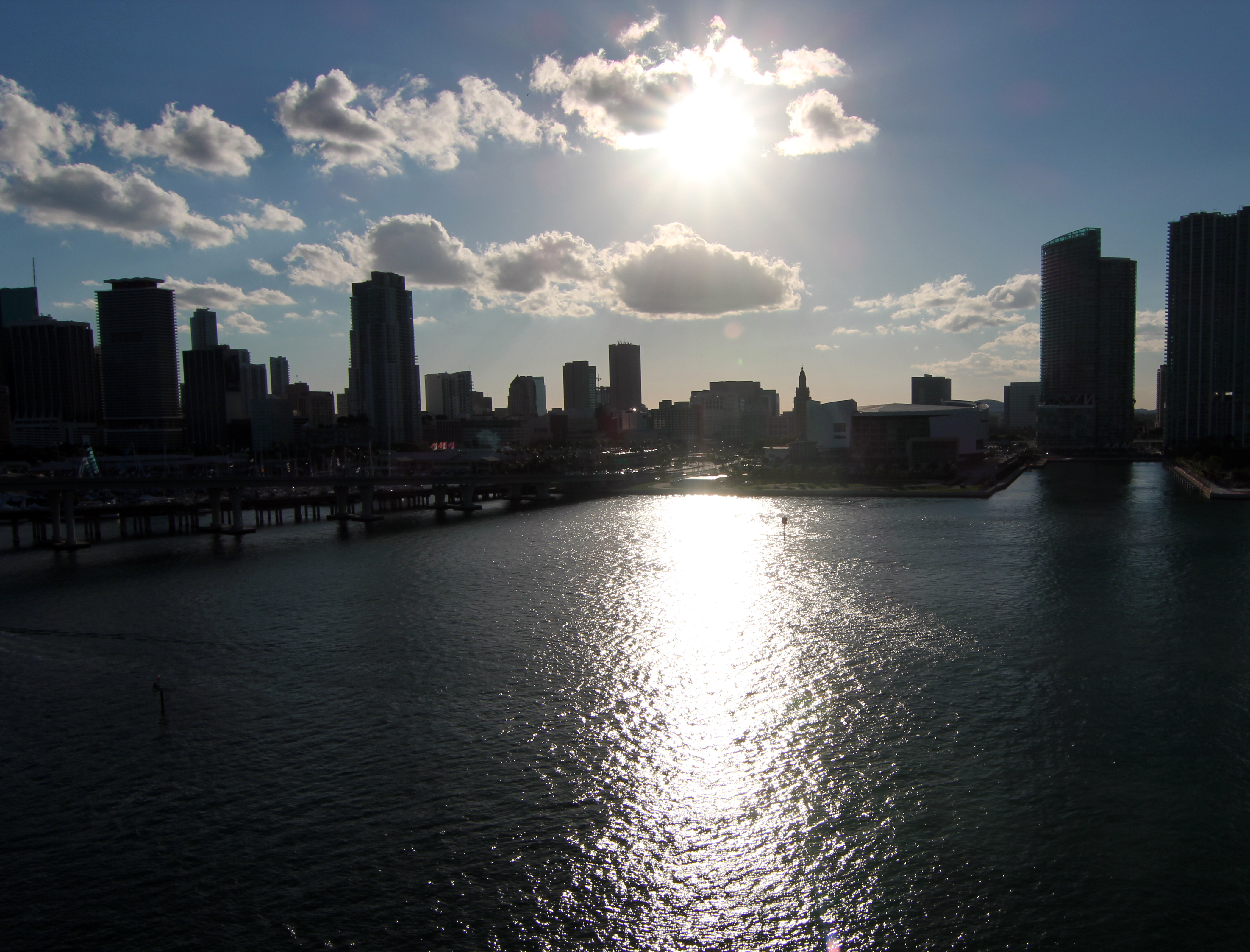
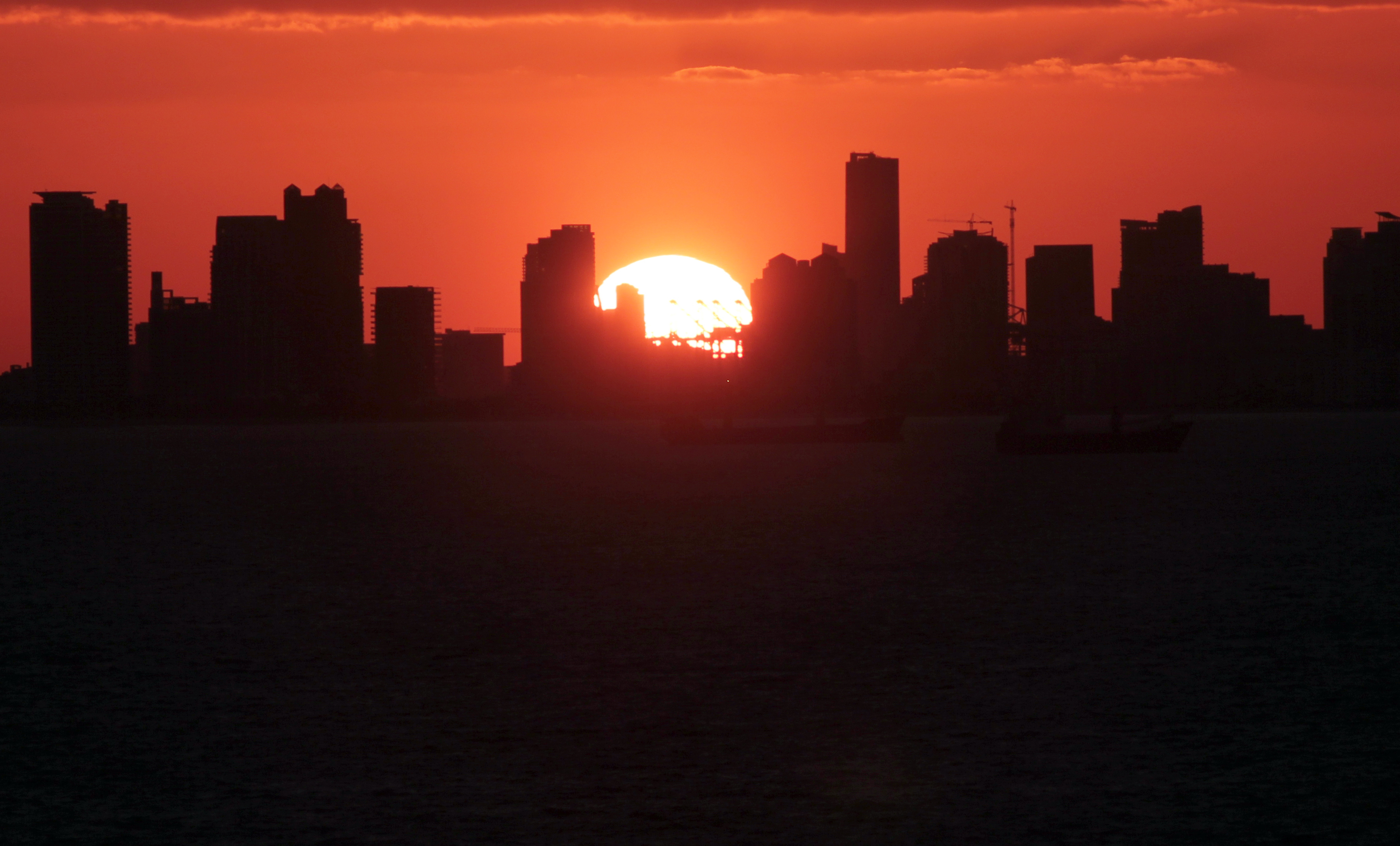
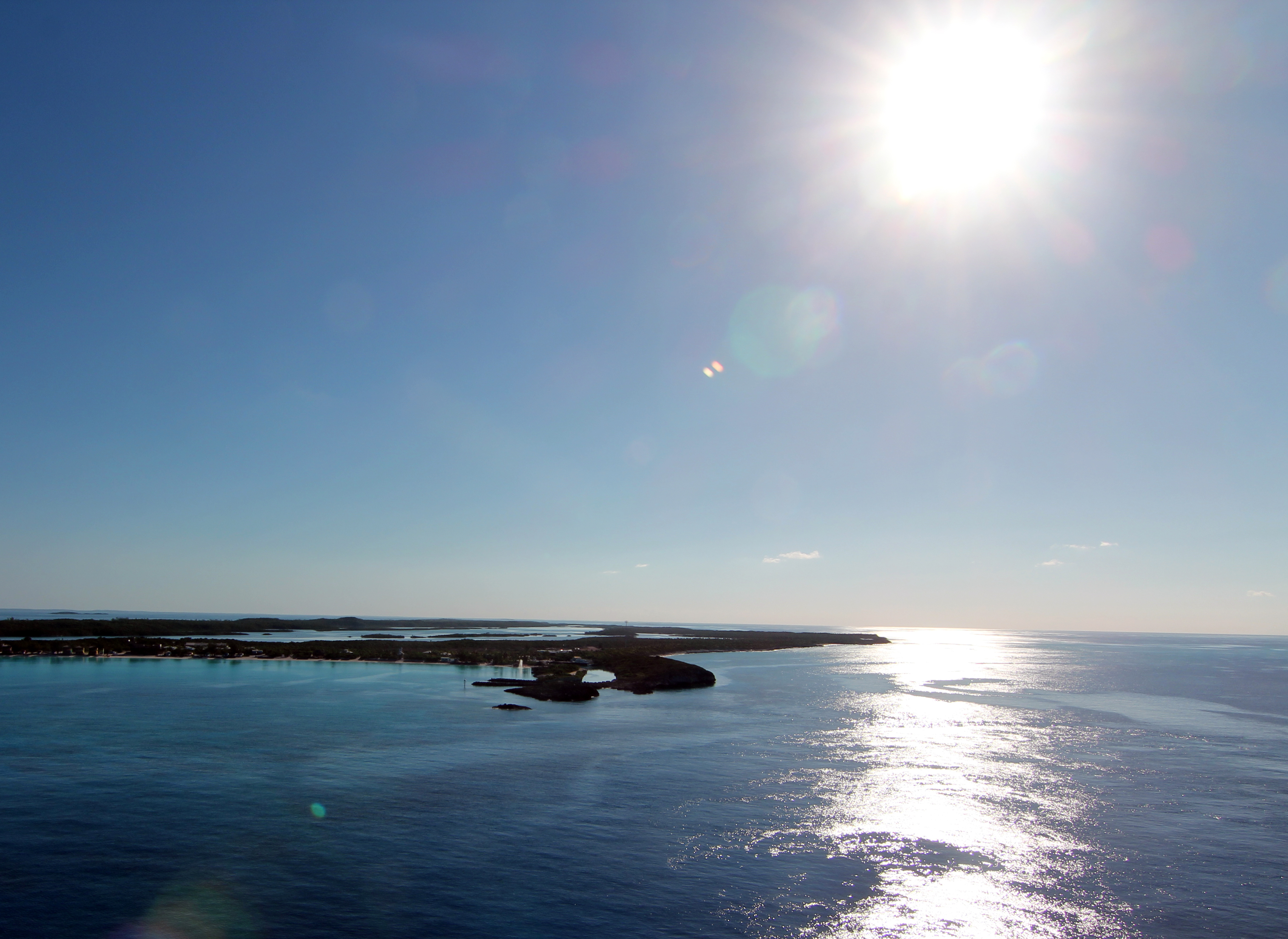
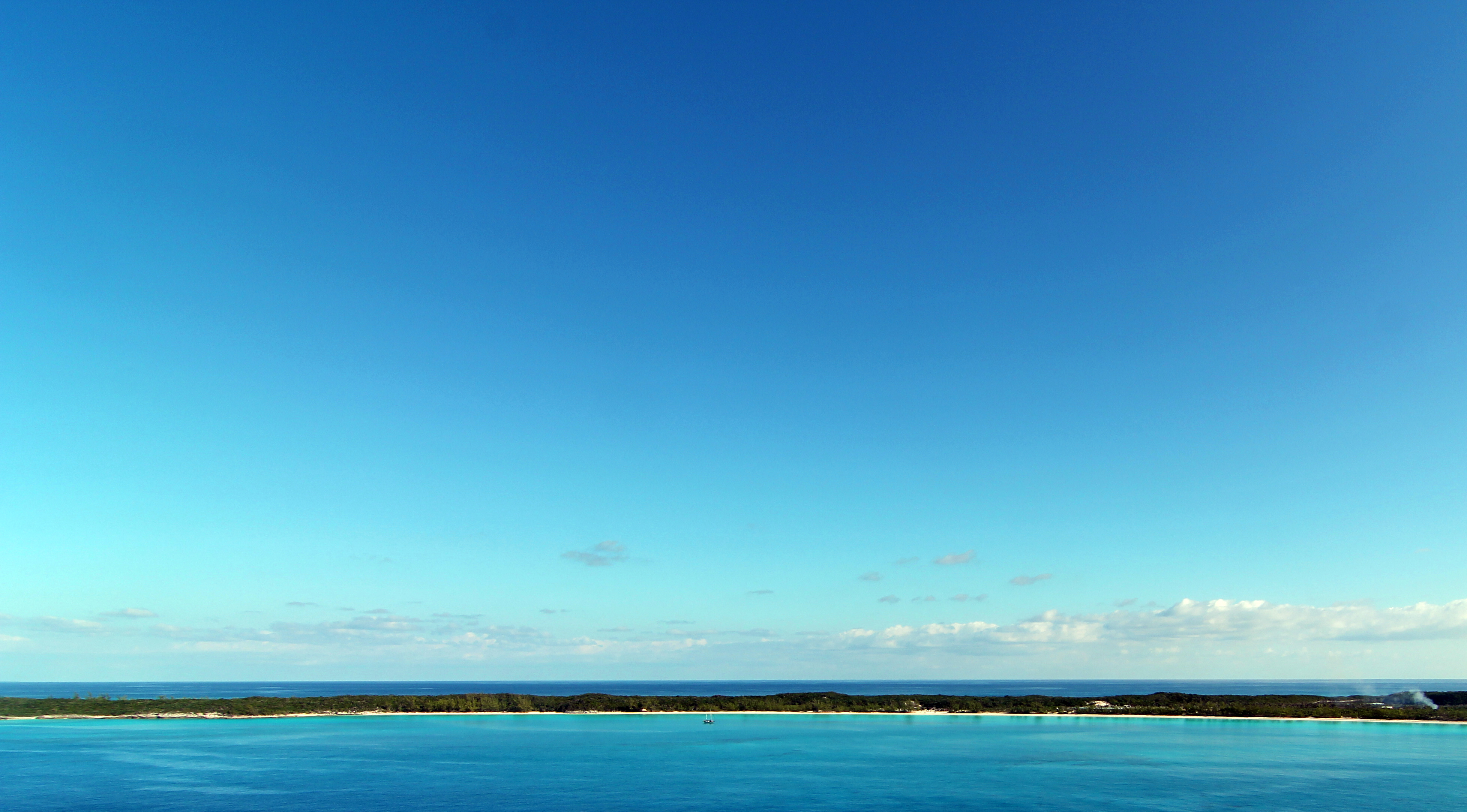
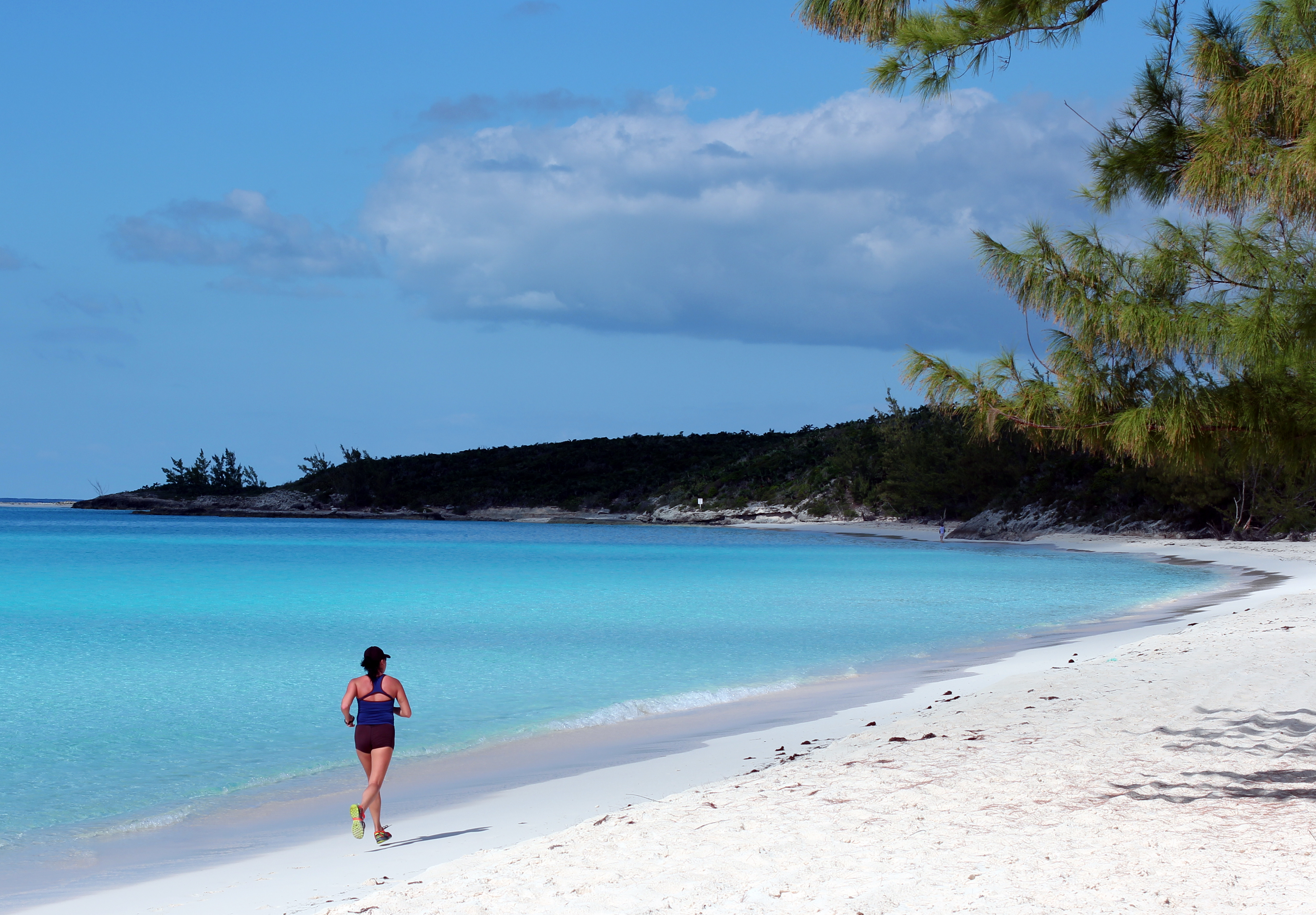
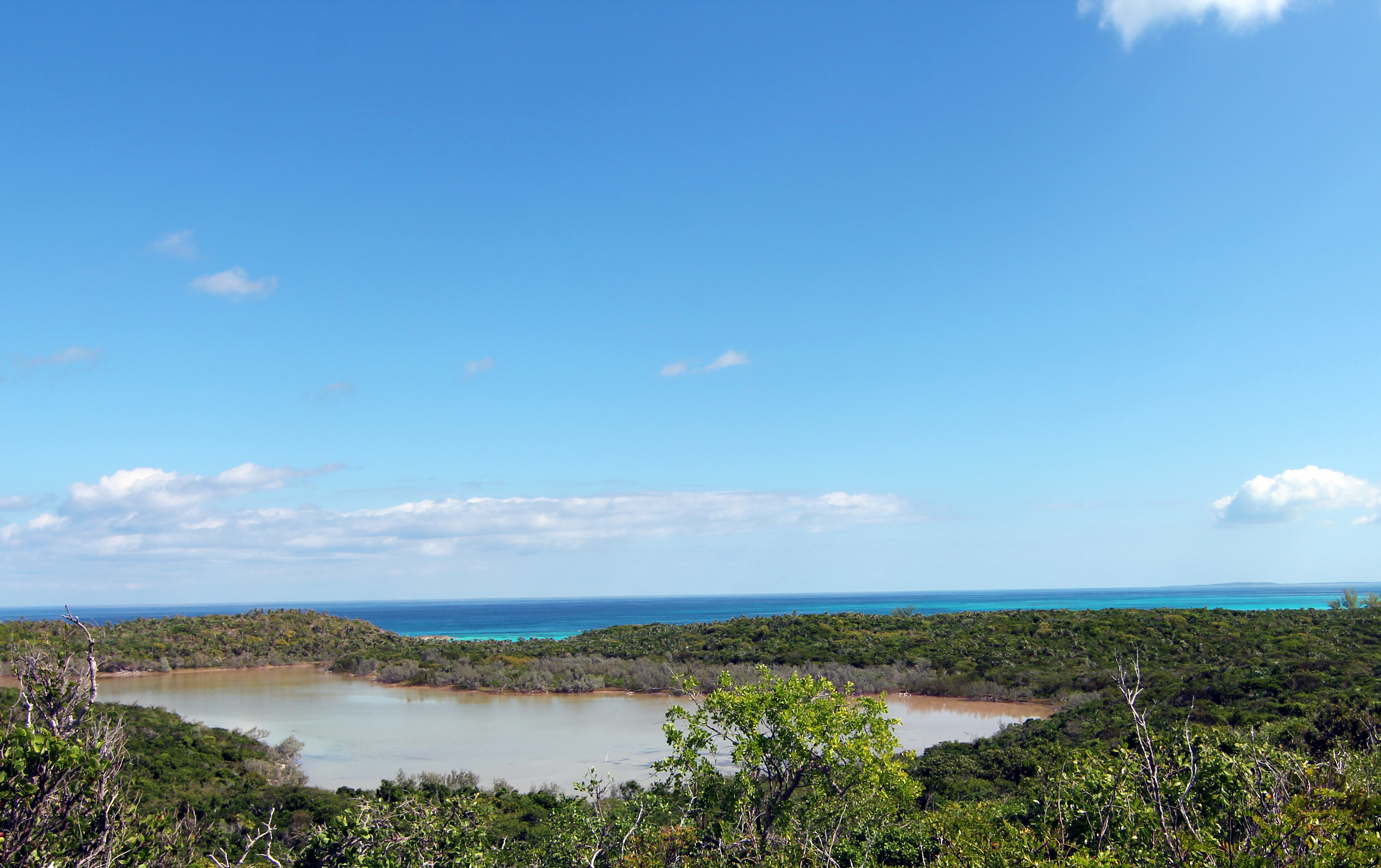
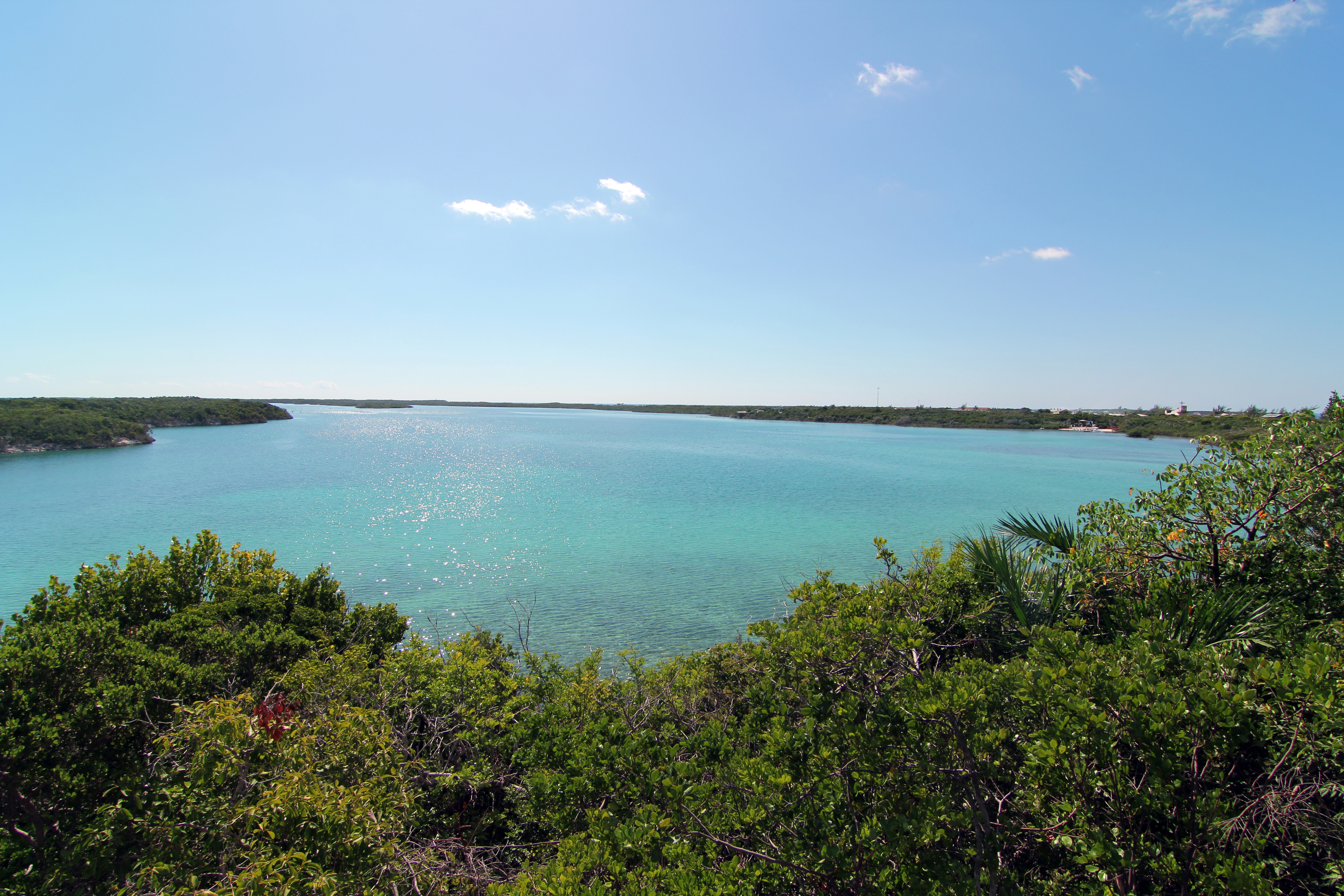
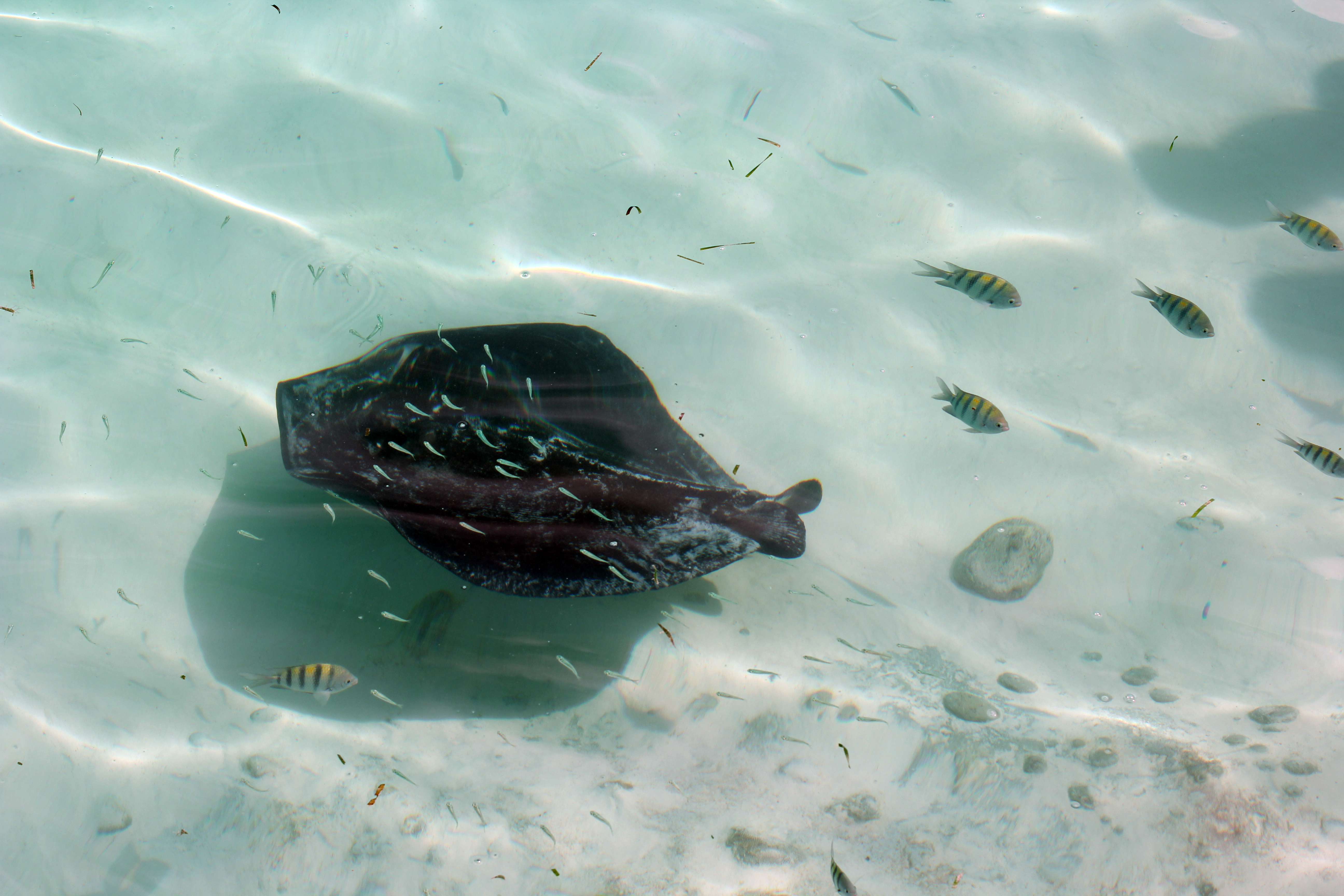
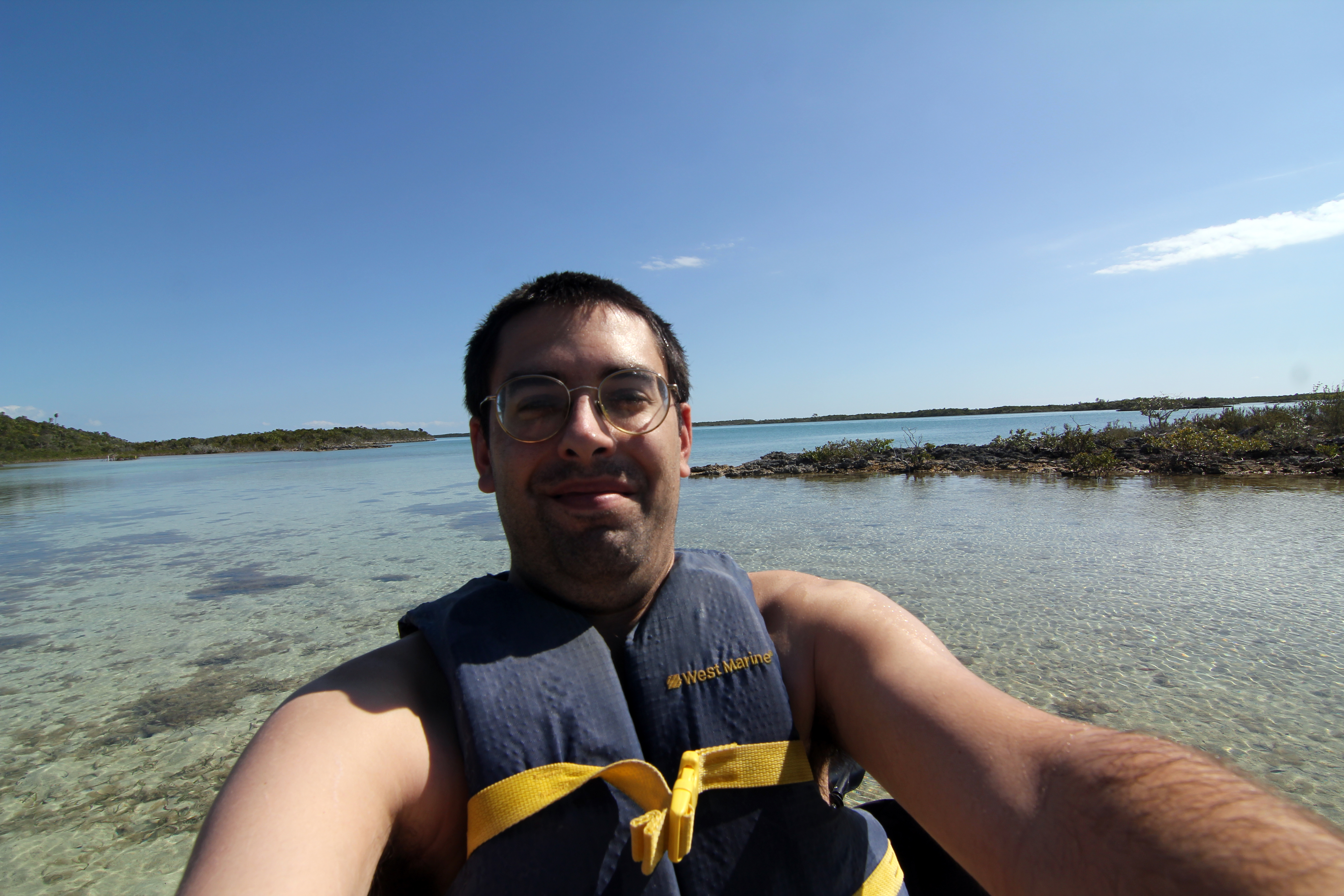
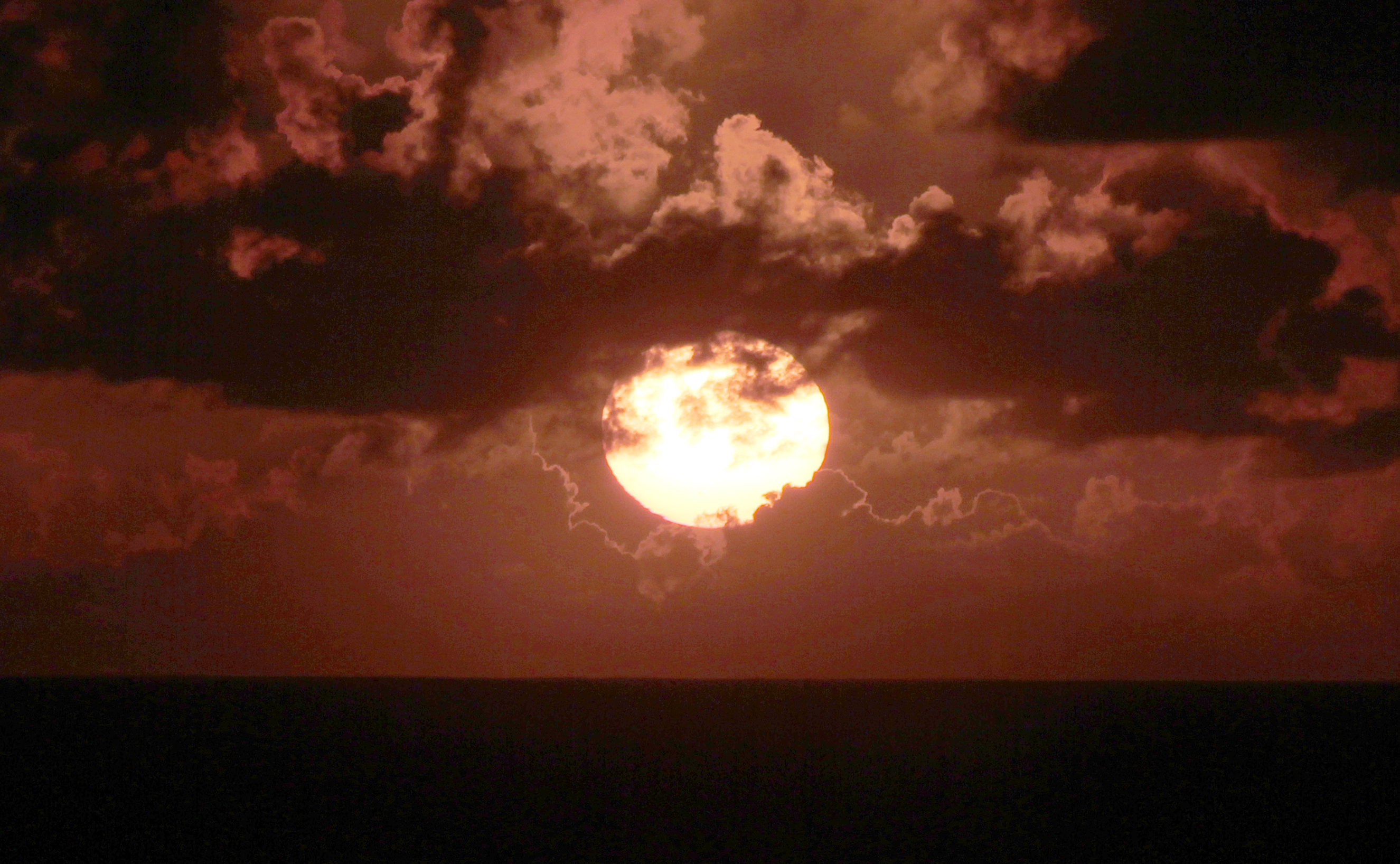
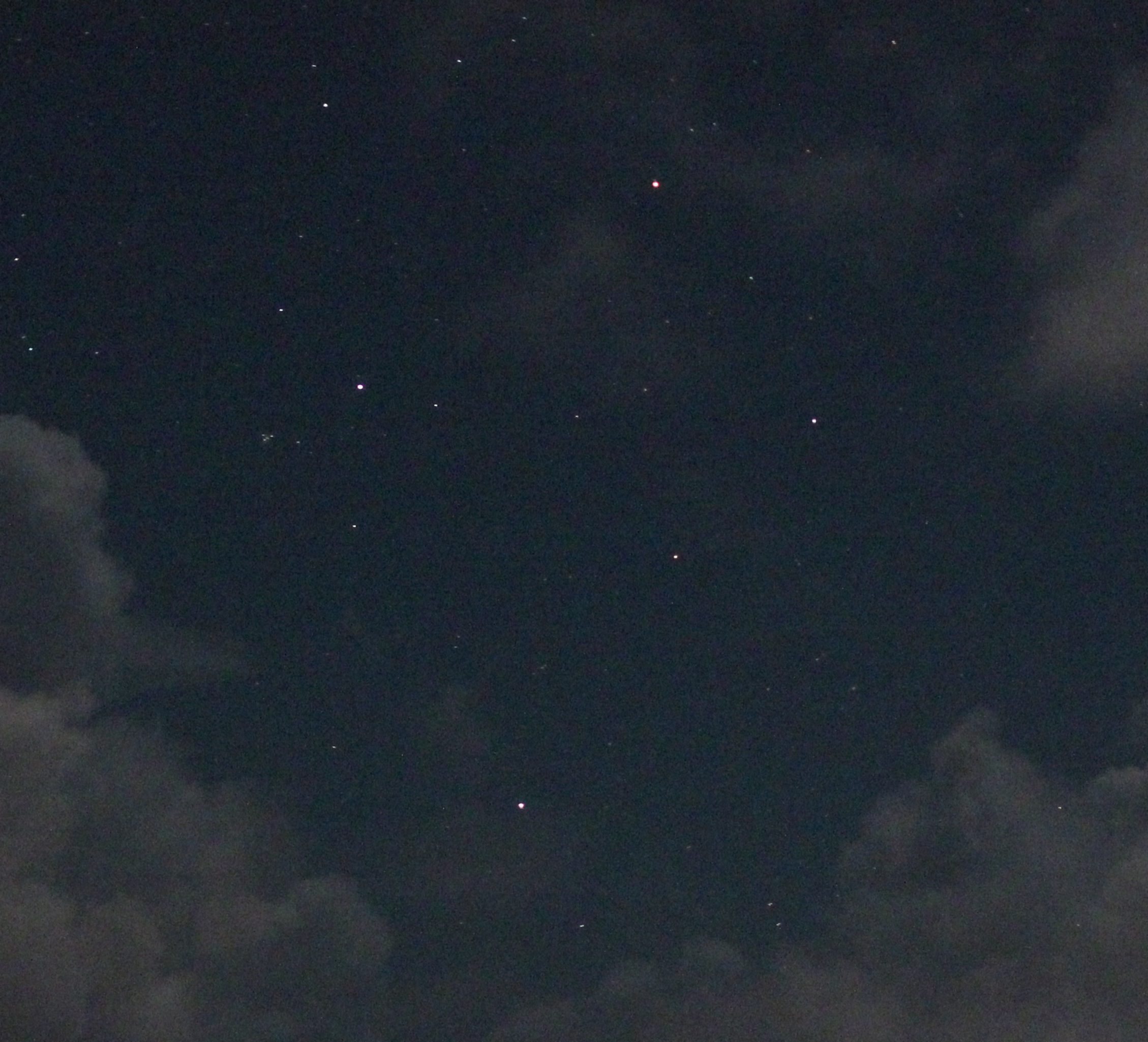
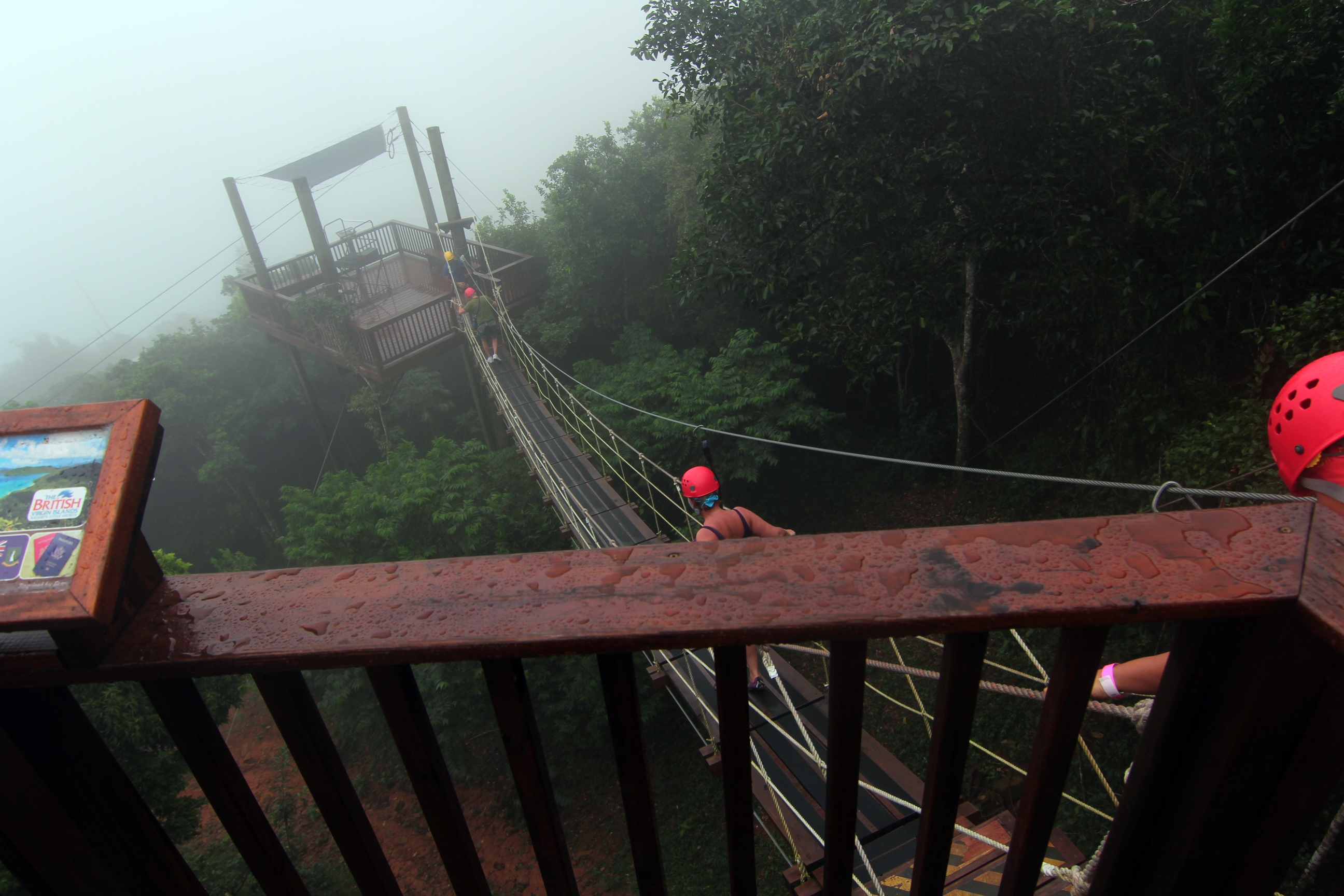

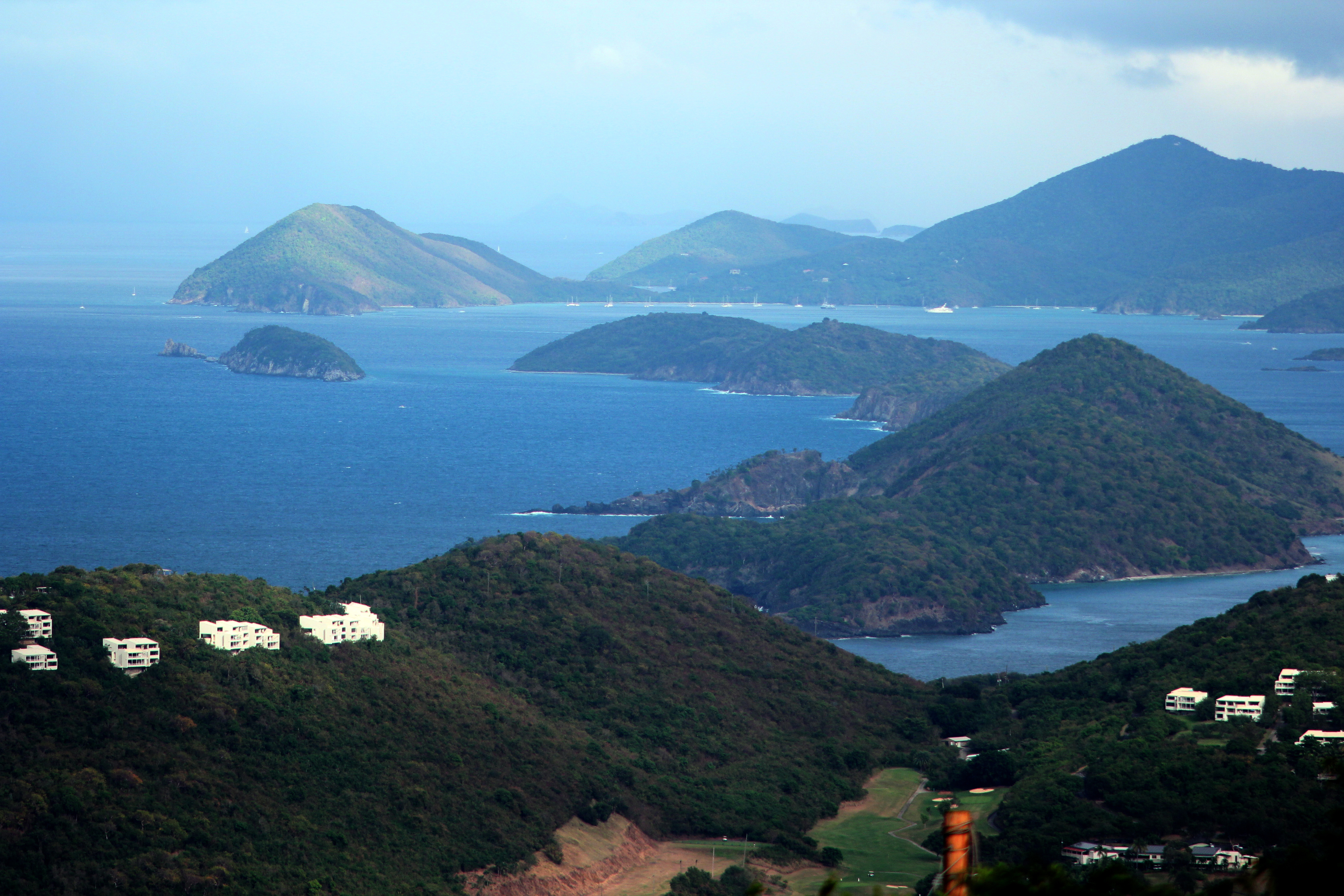
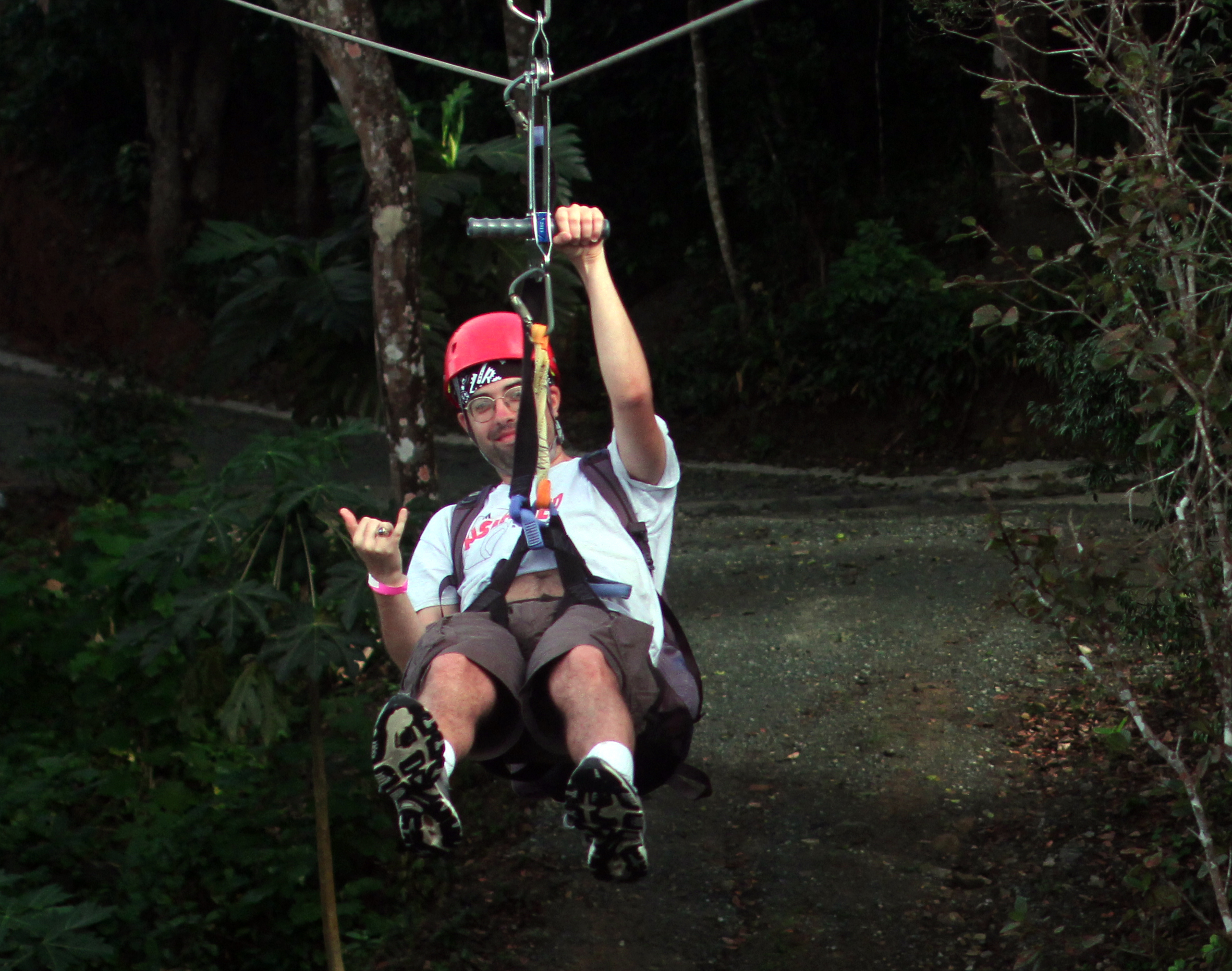

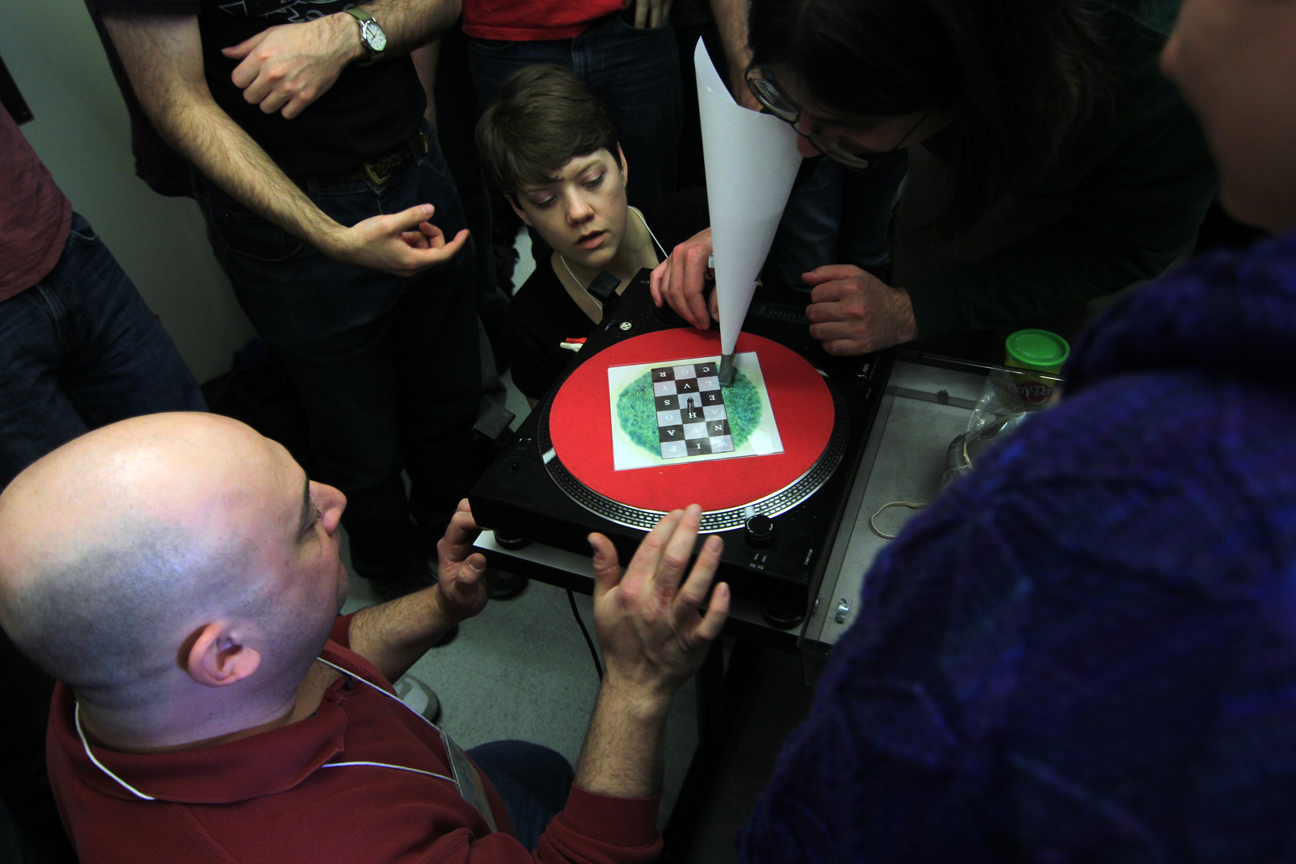
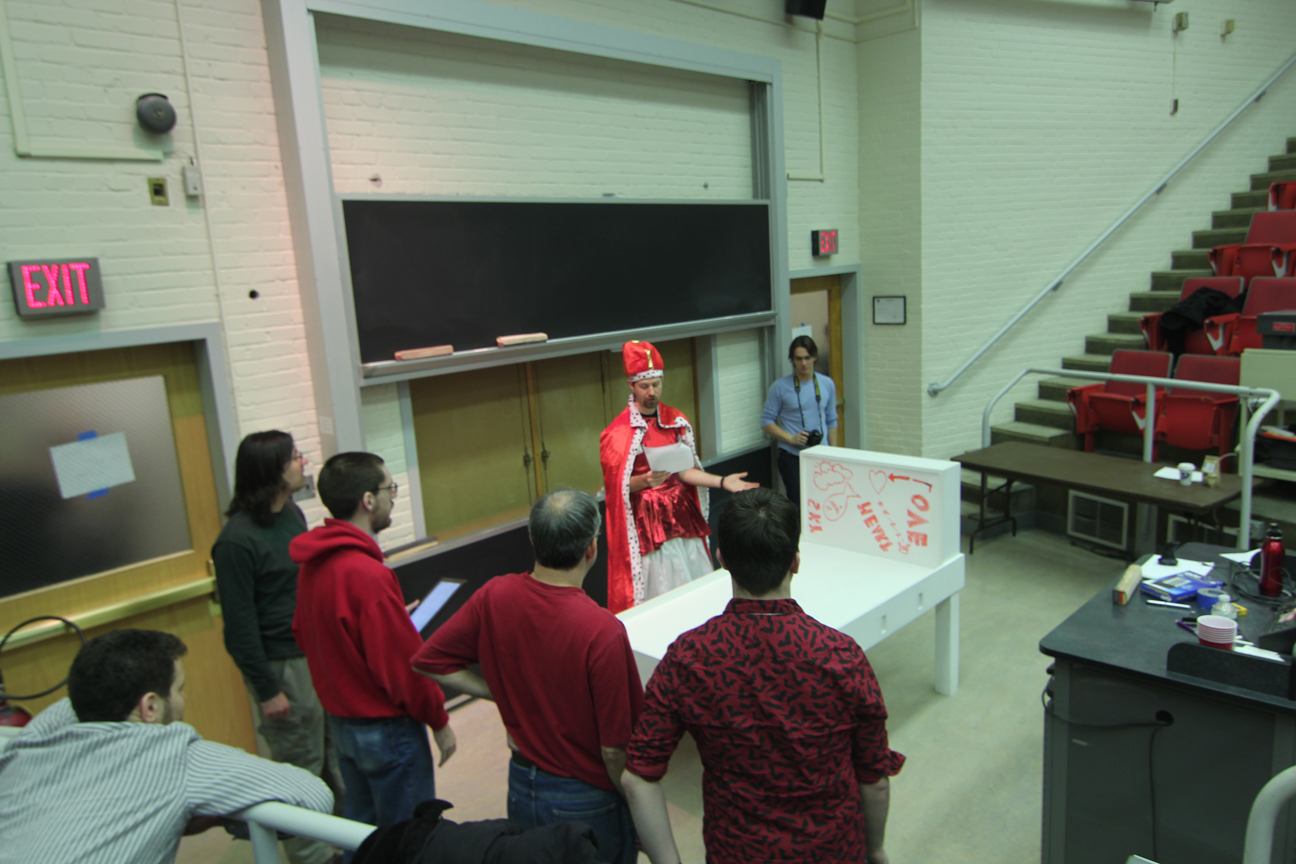
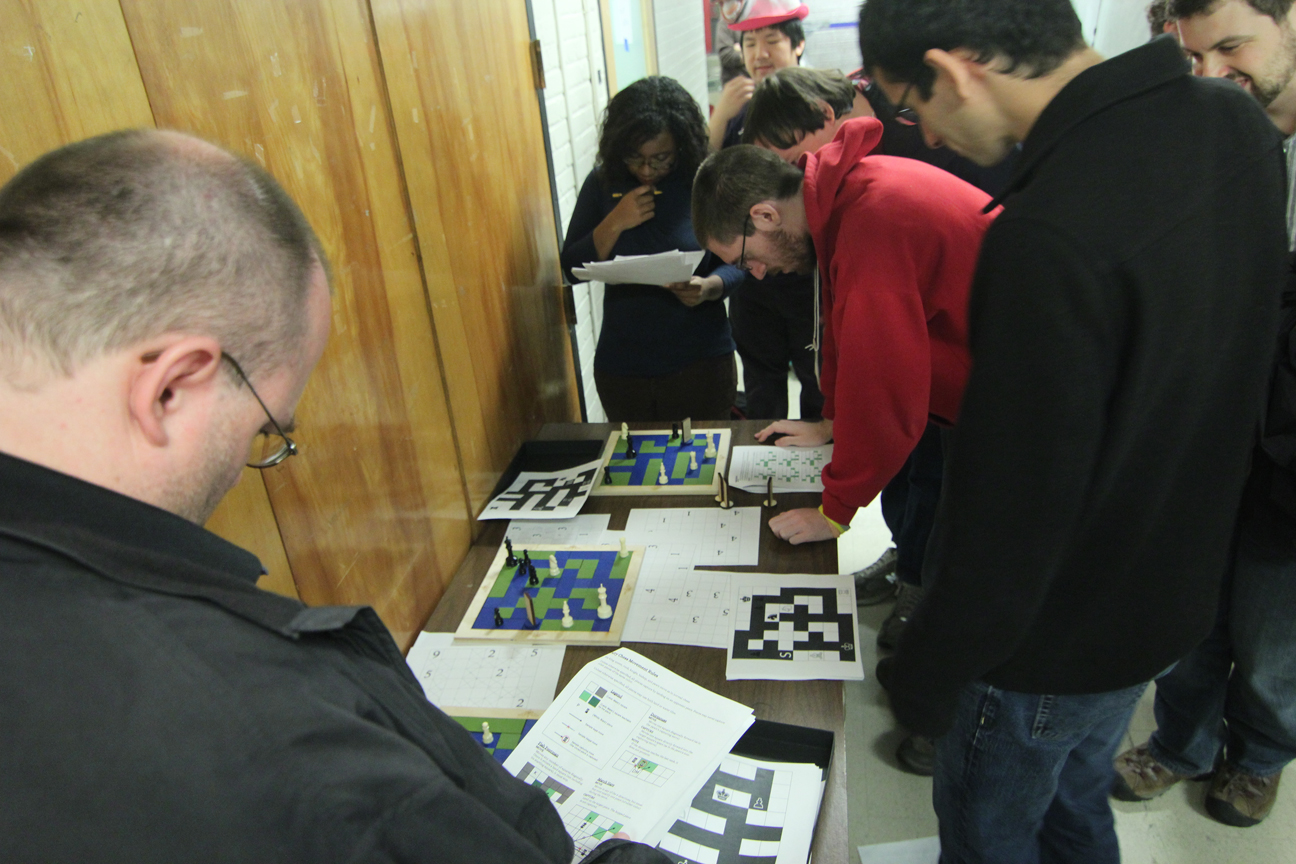

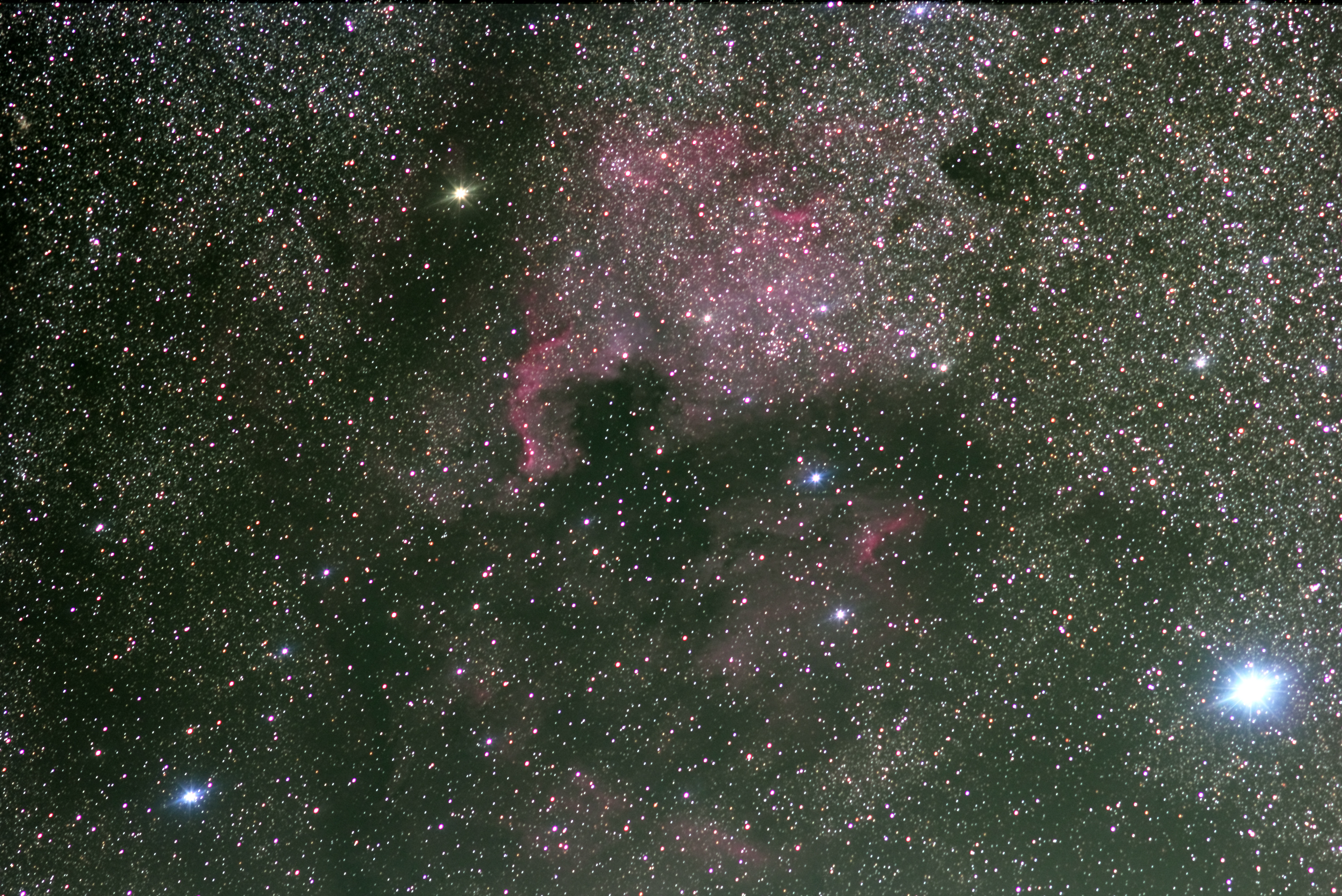
Recent Comments